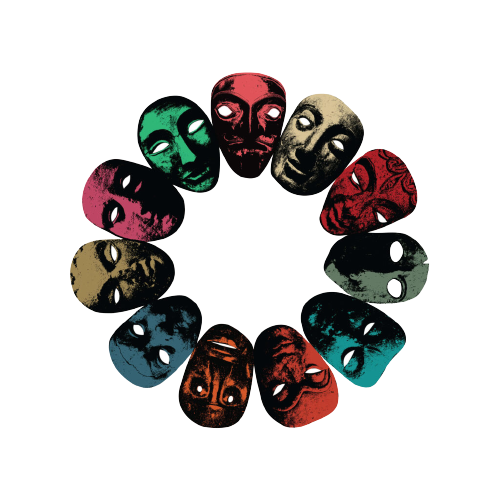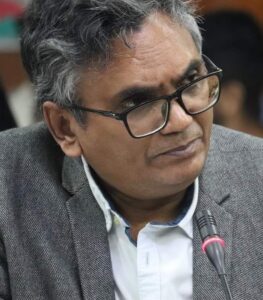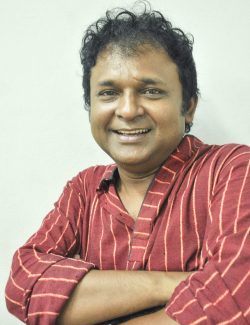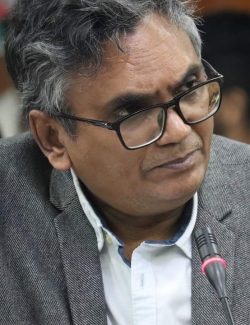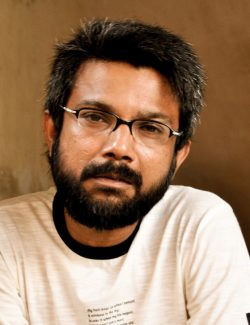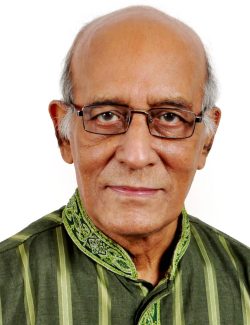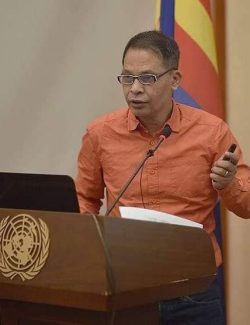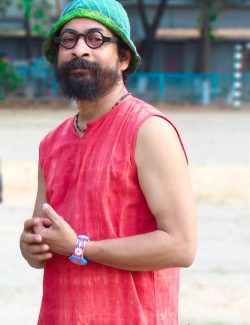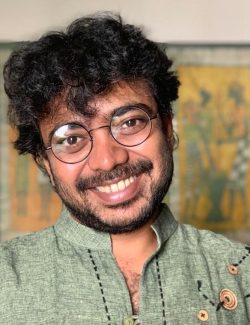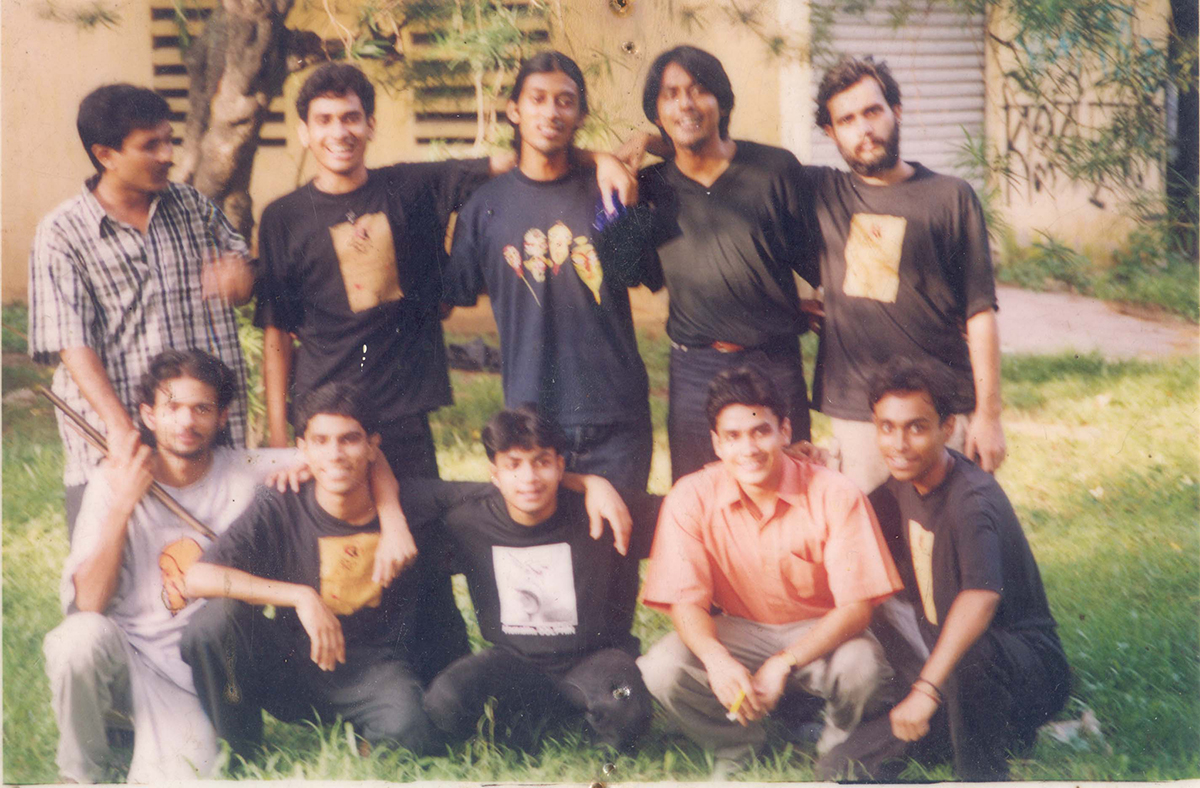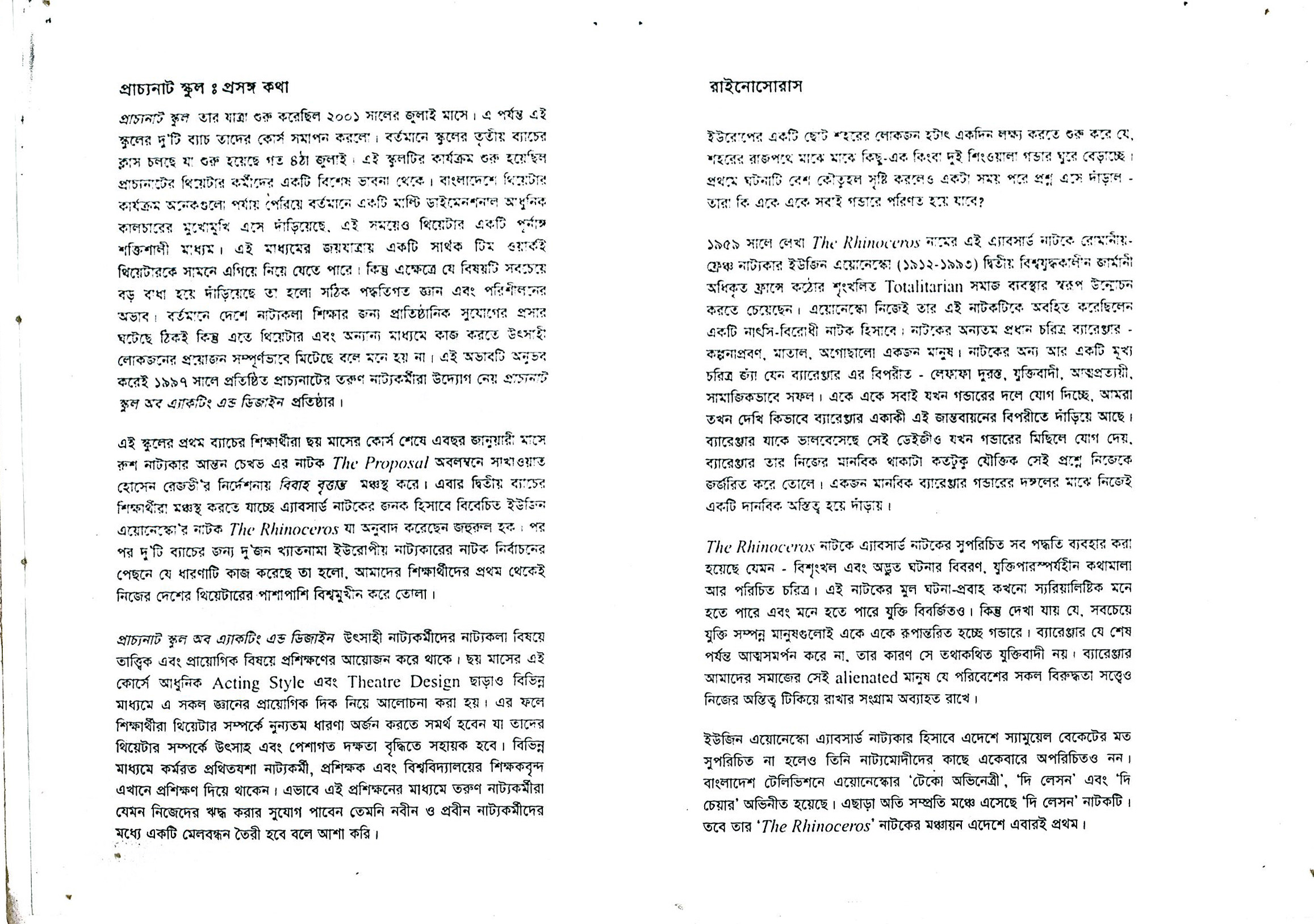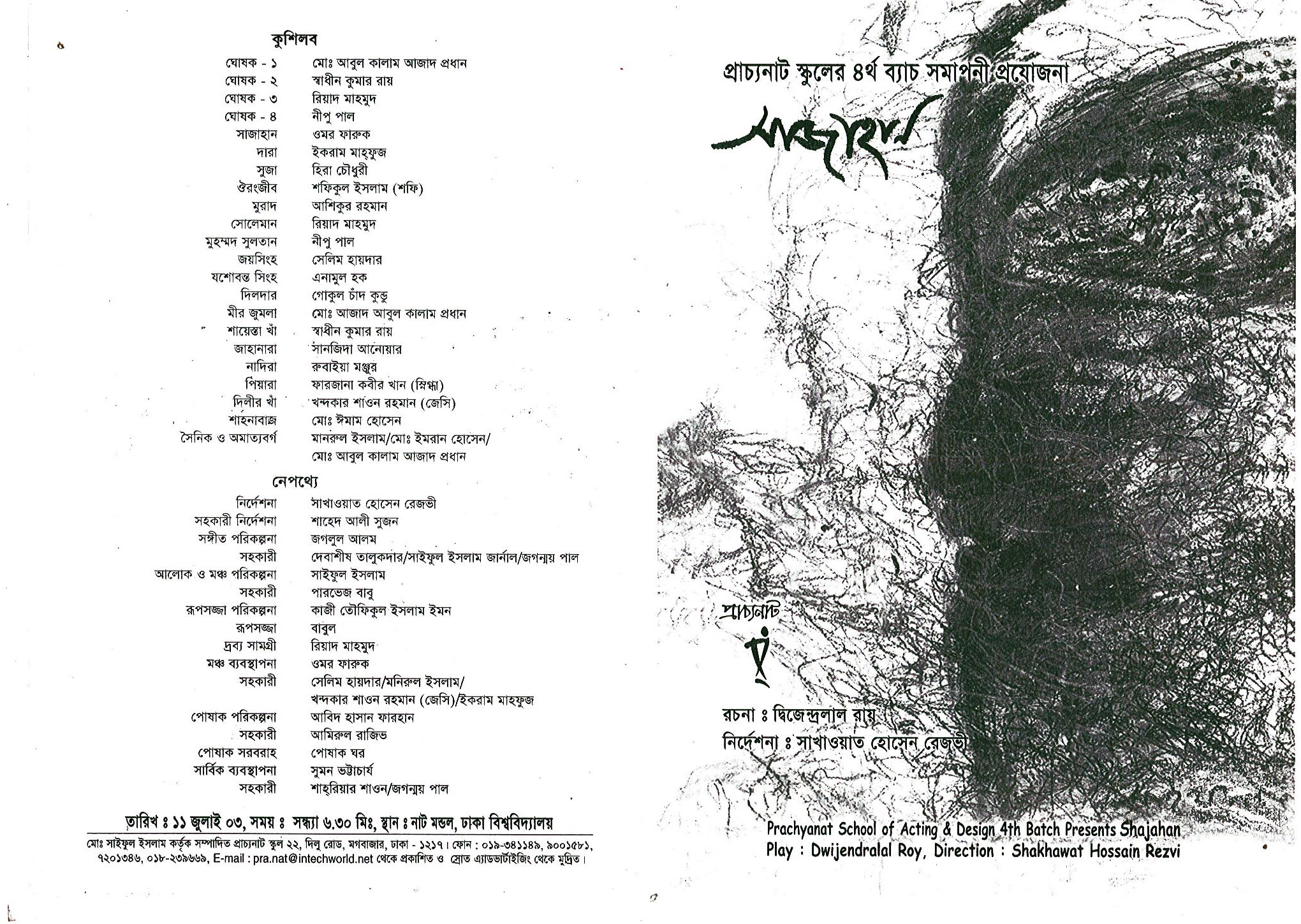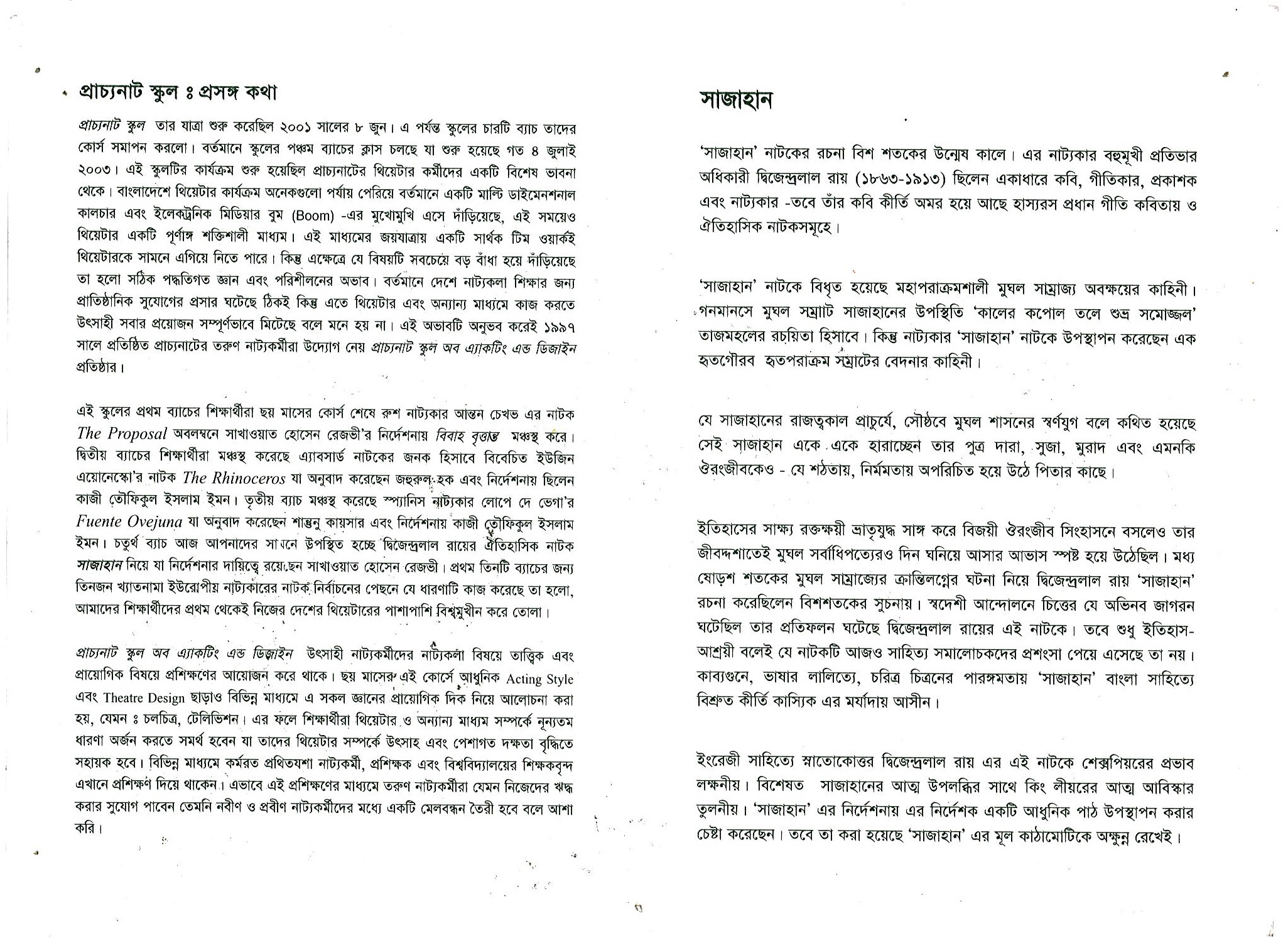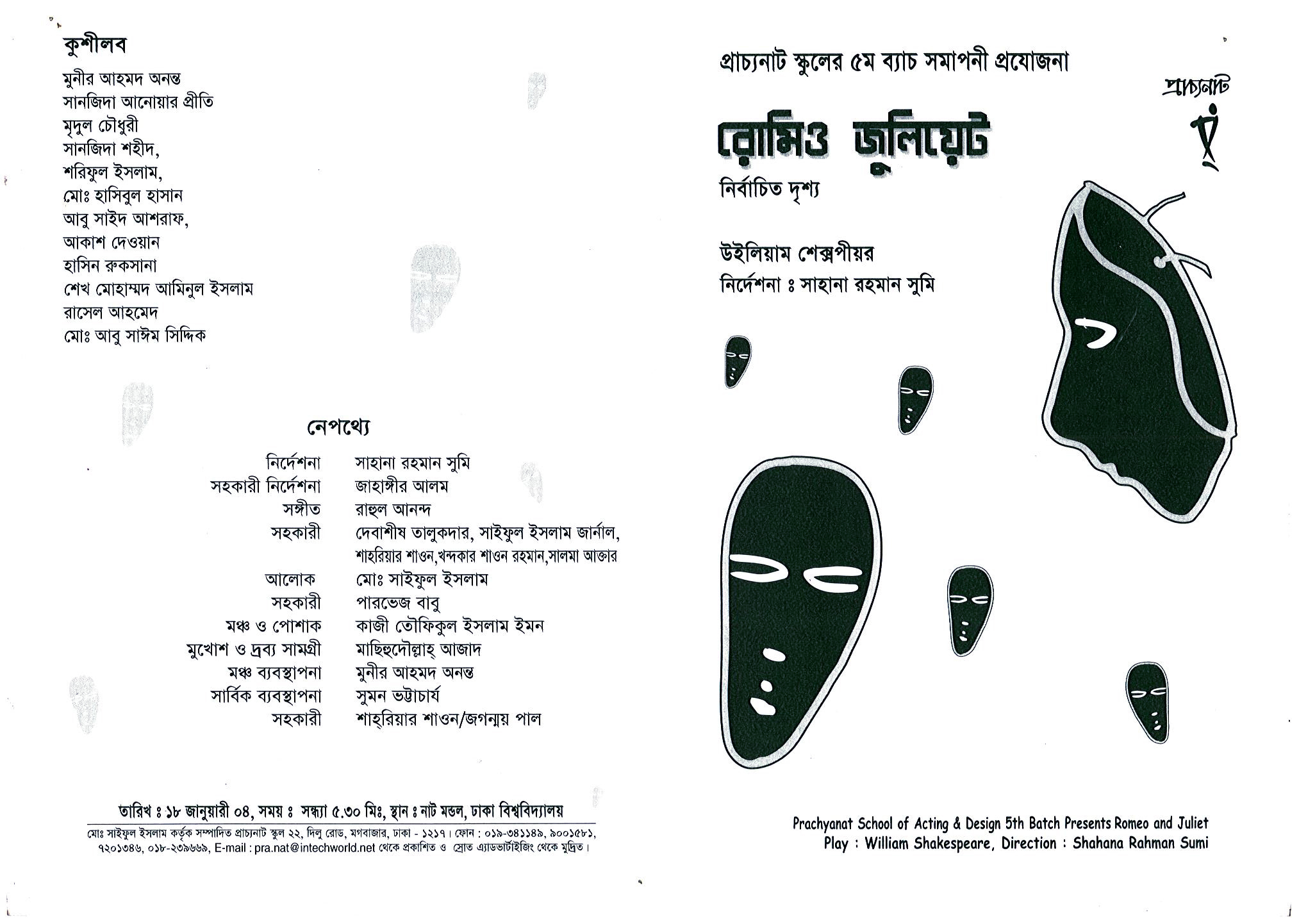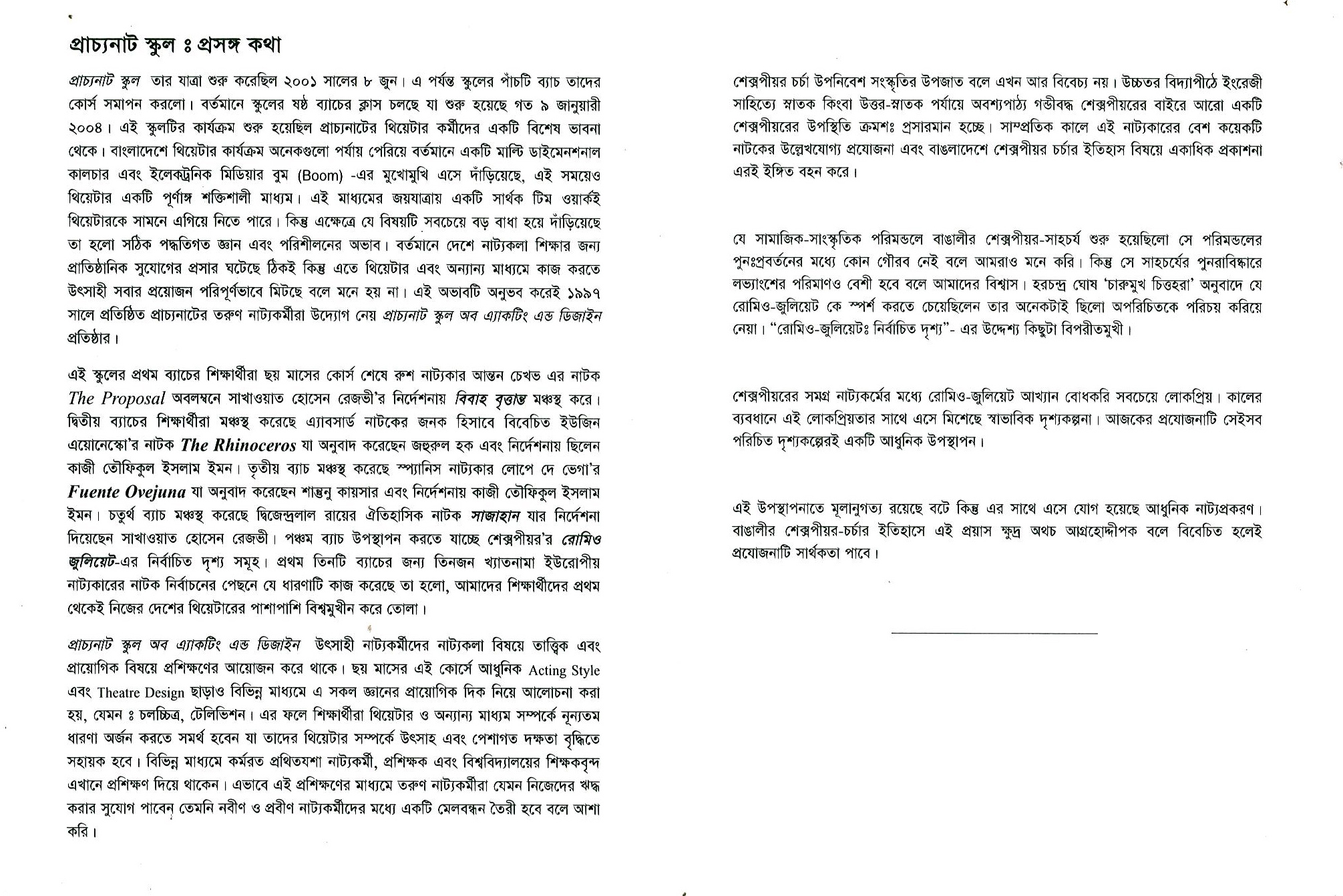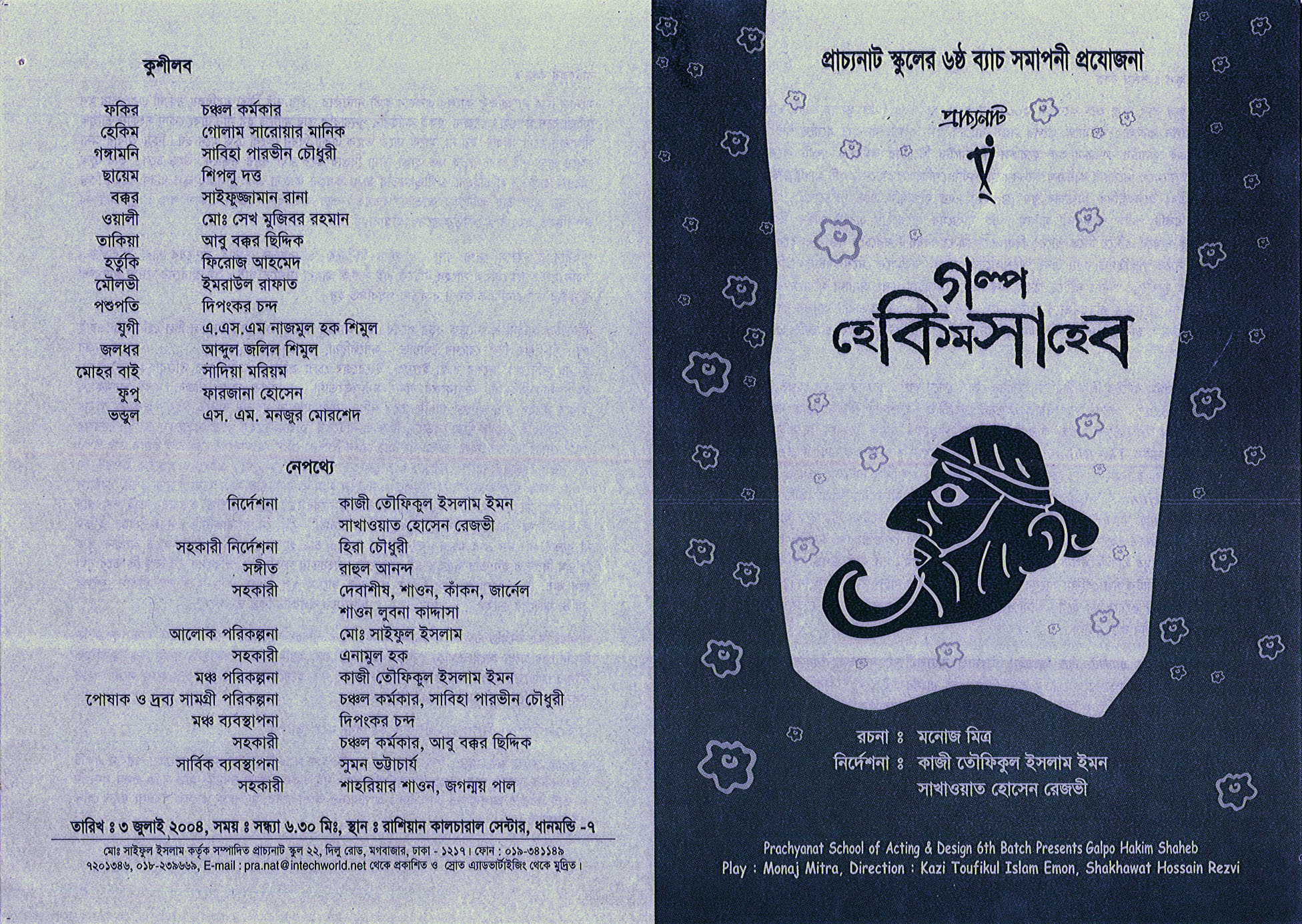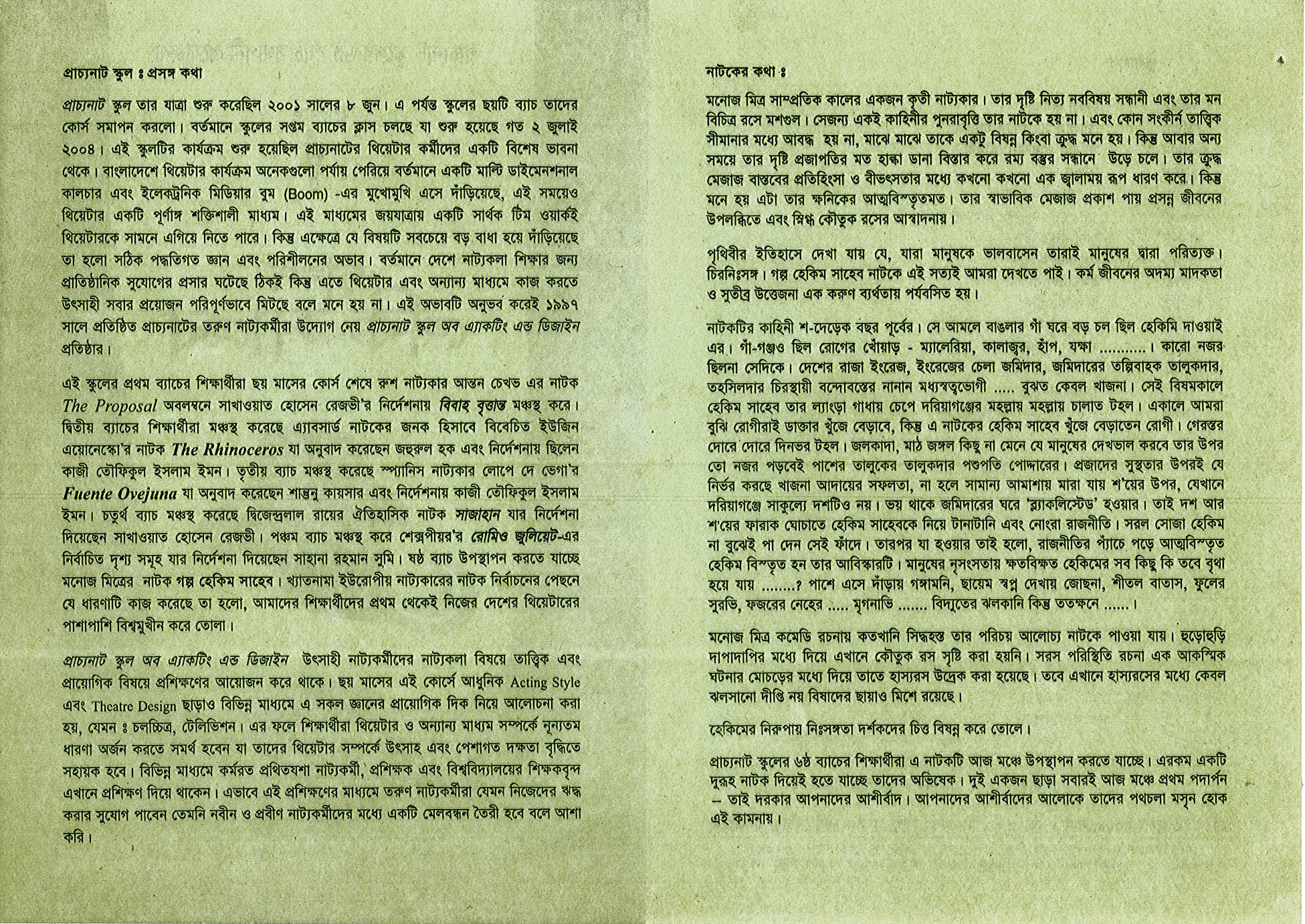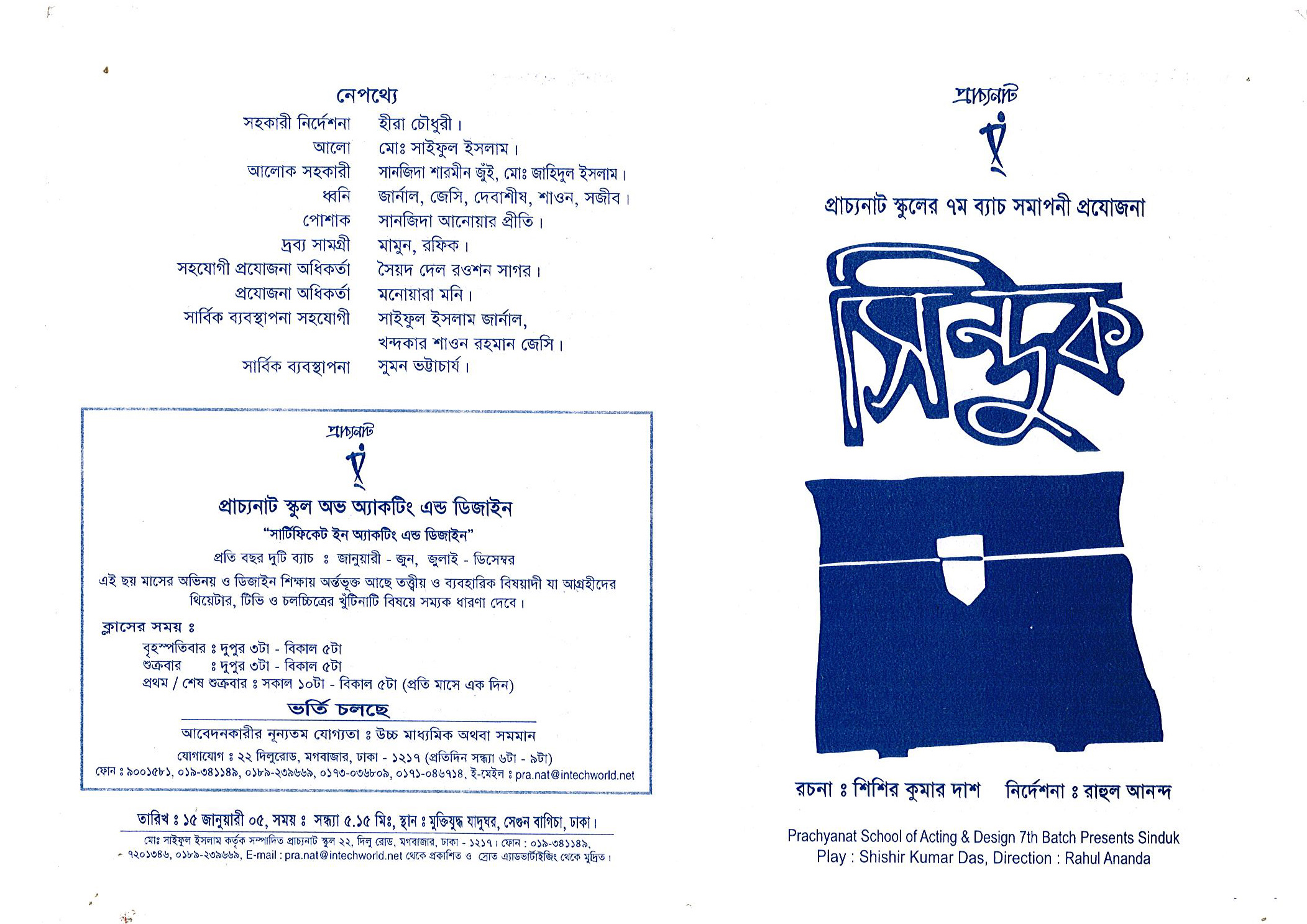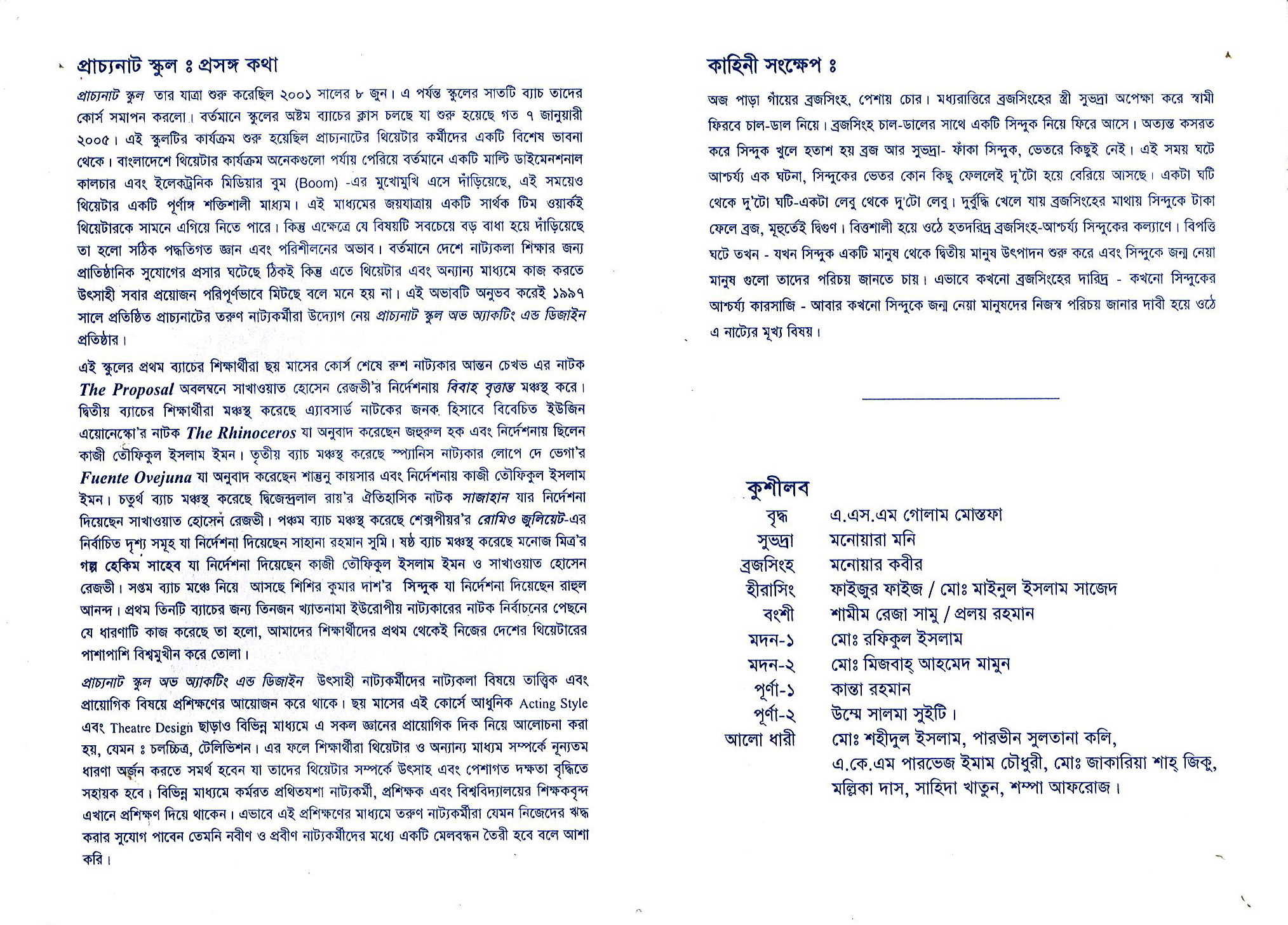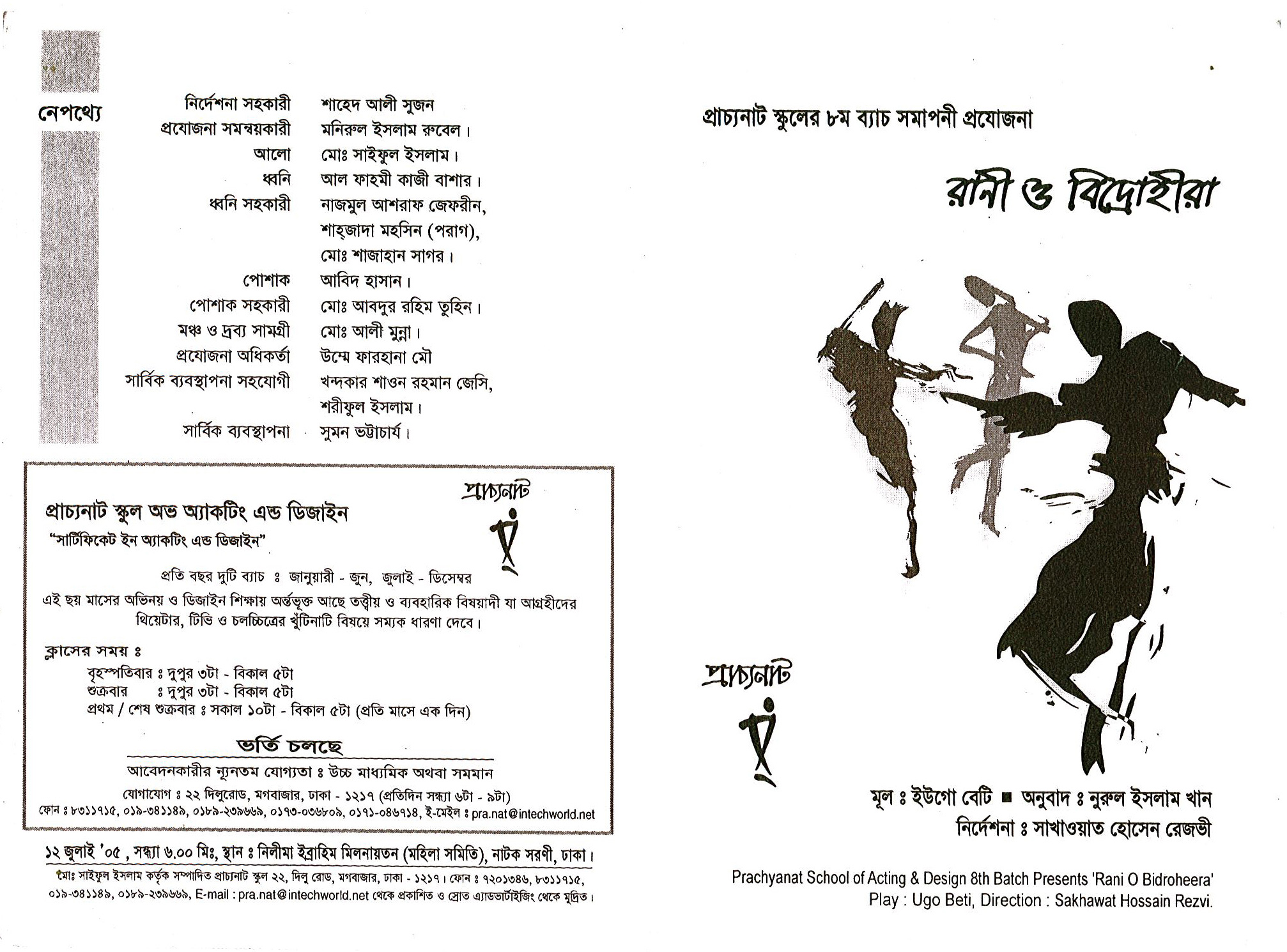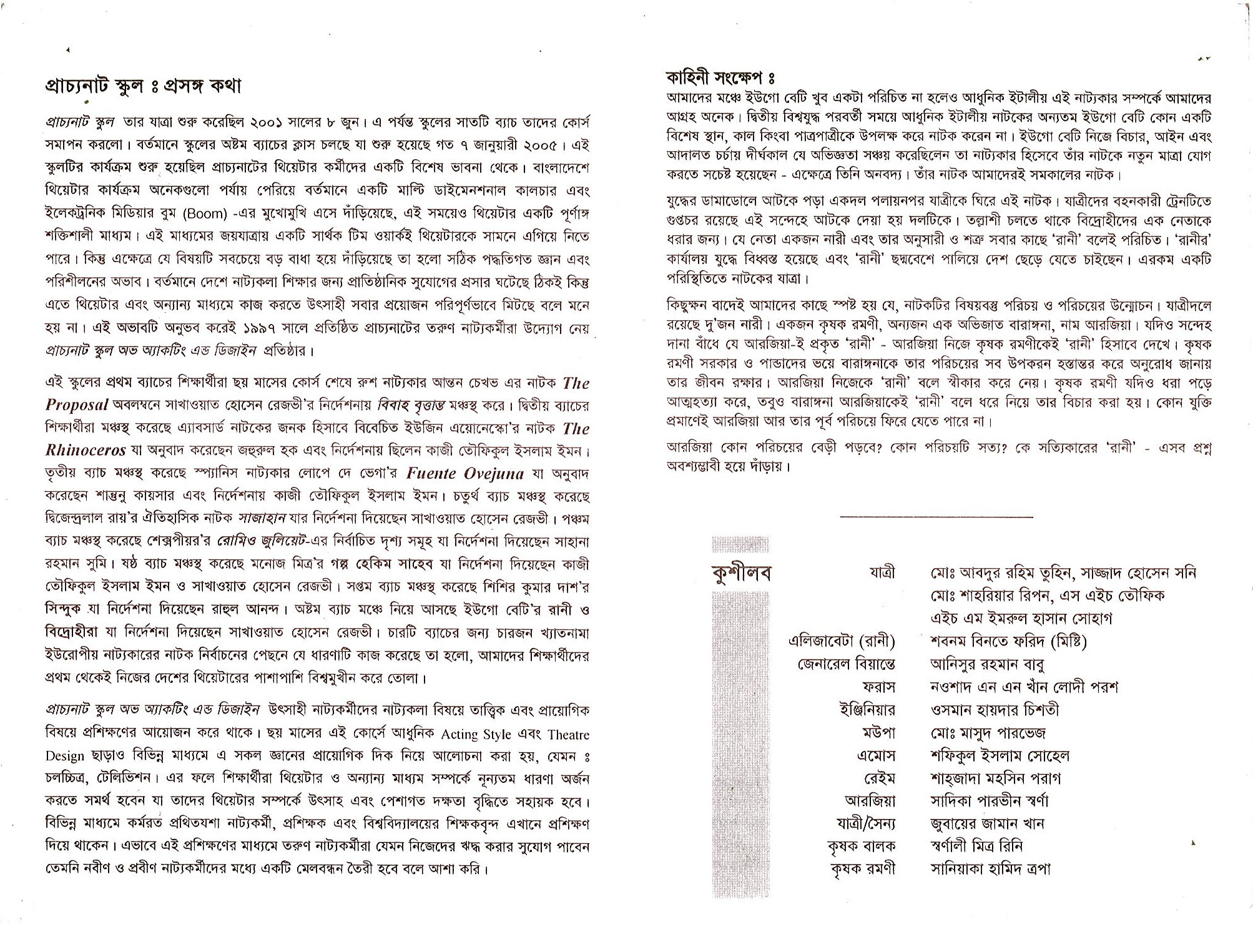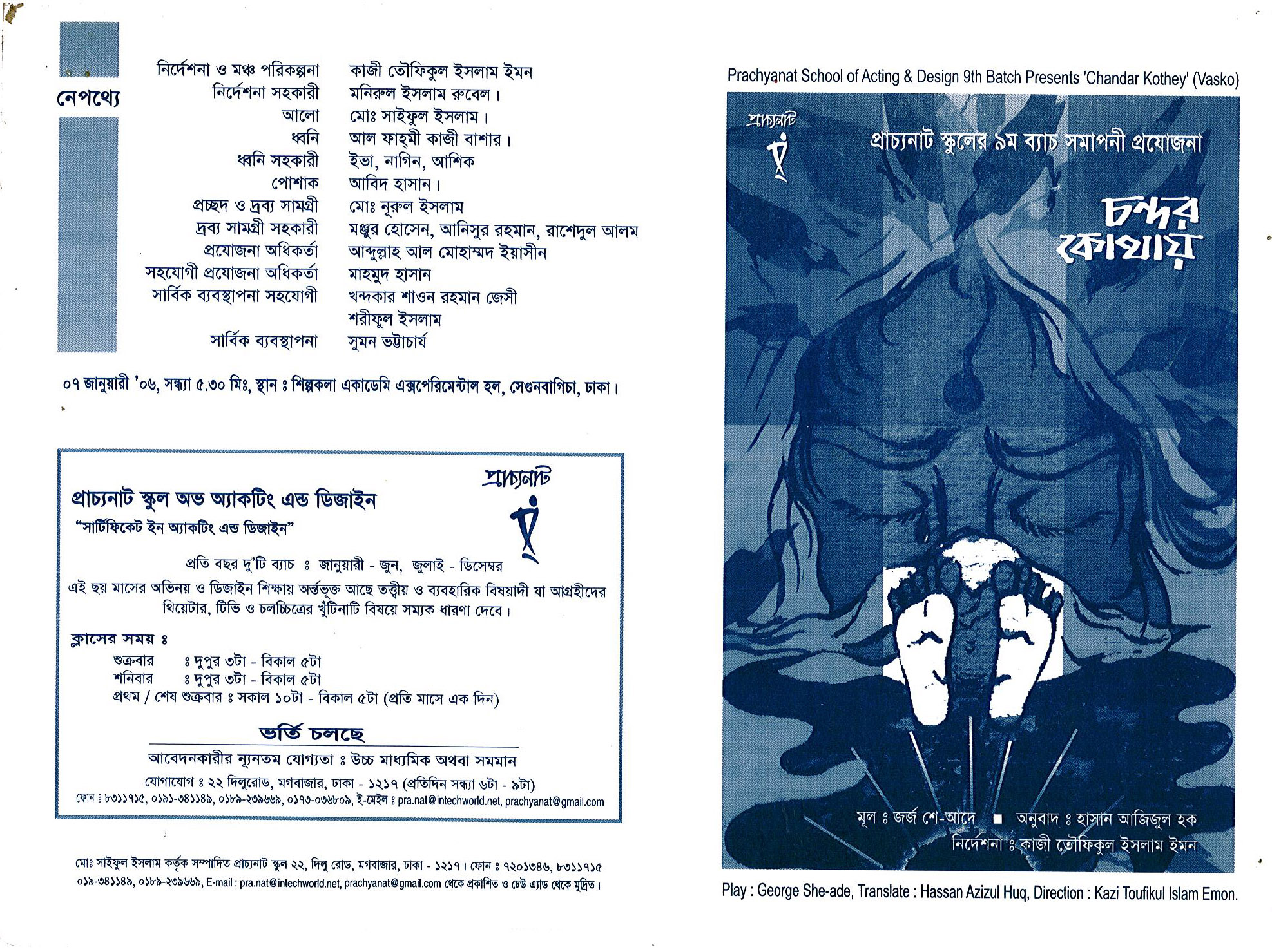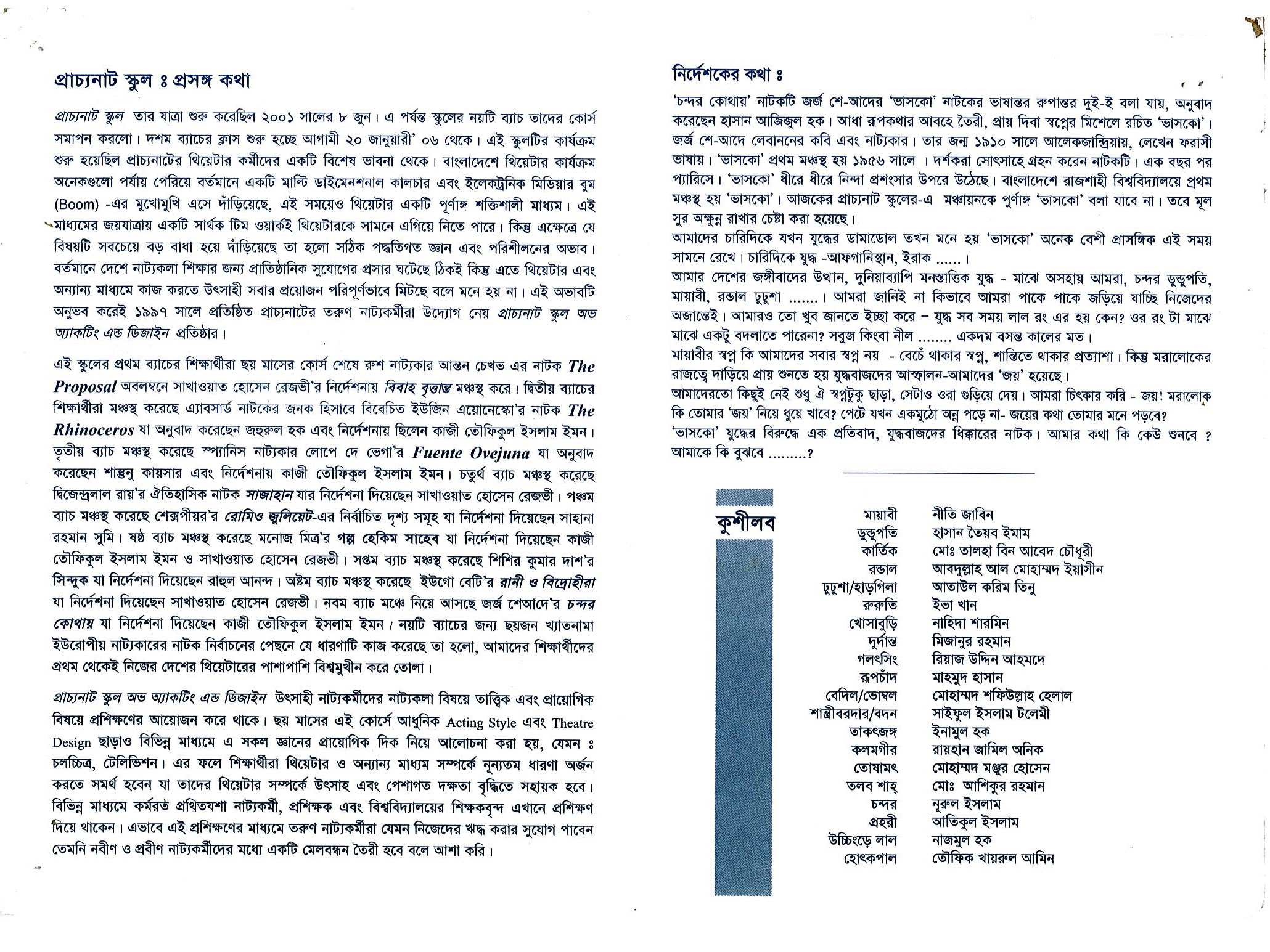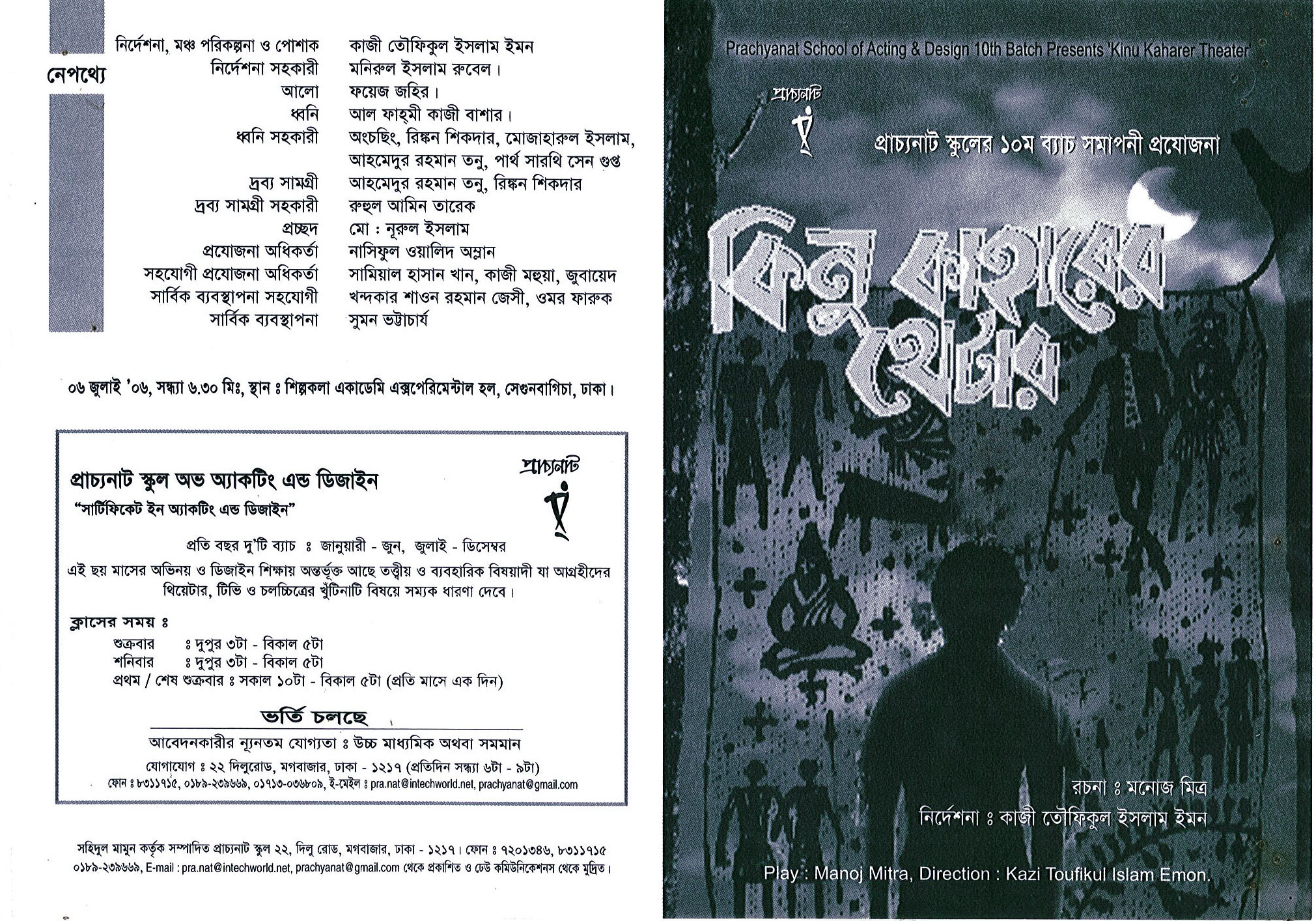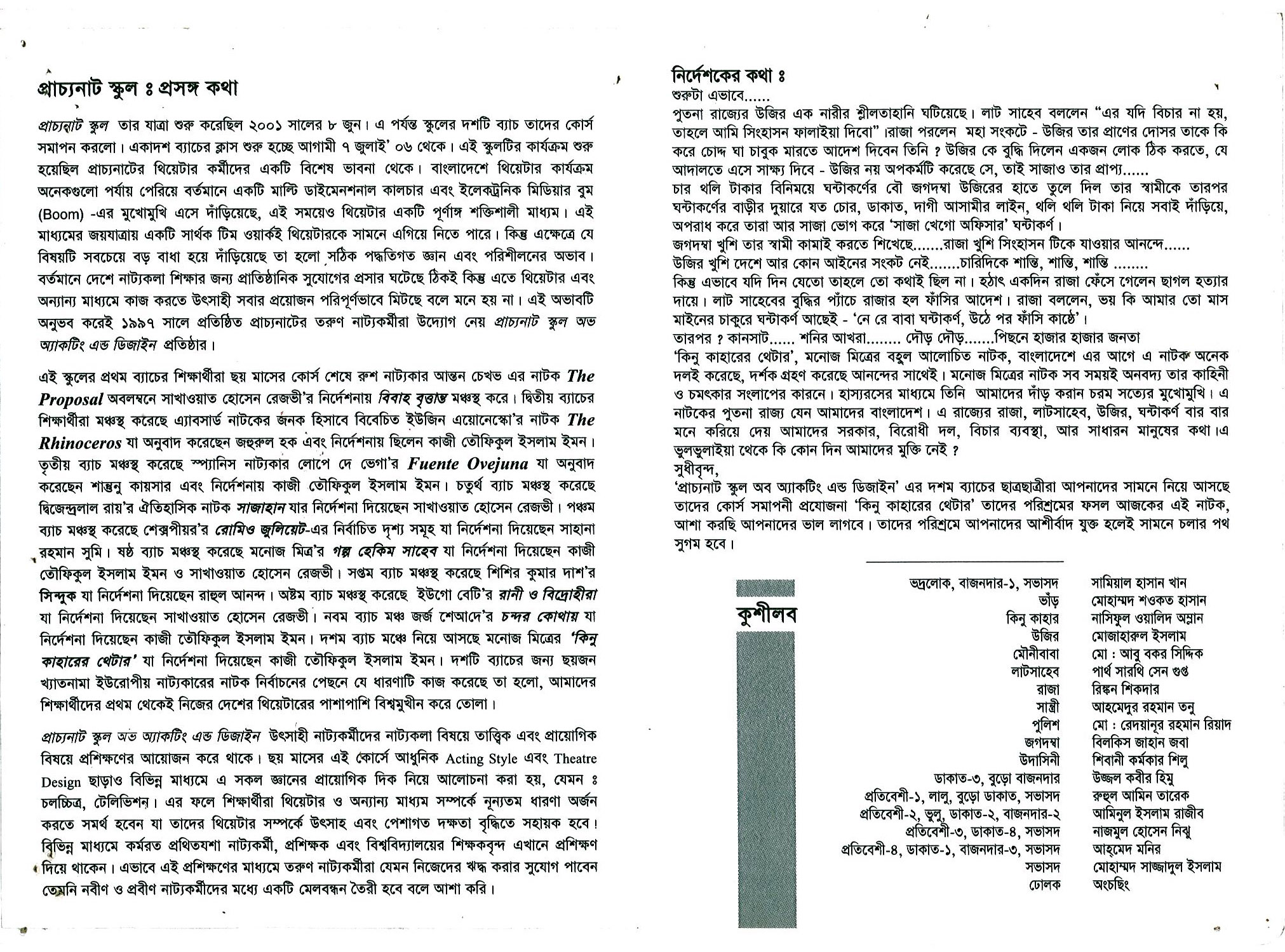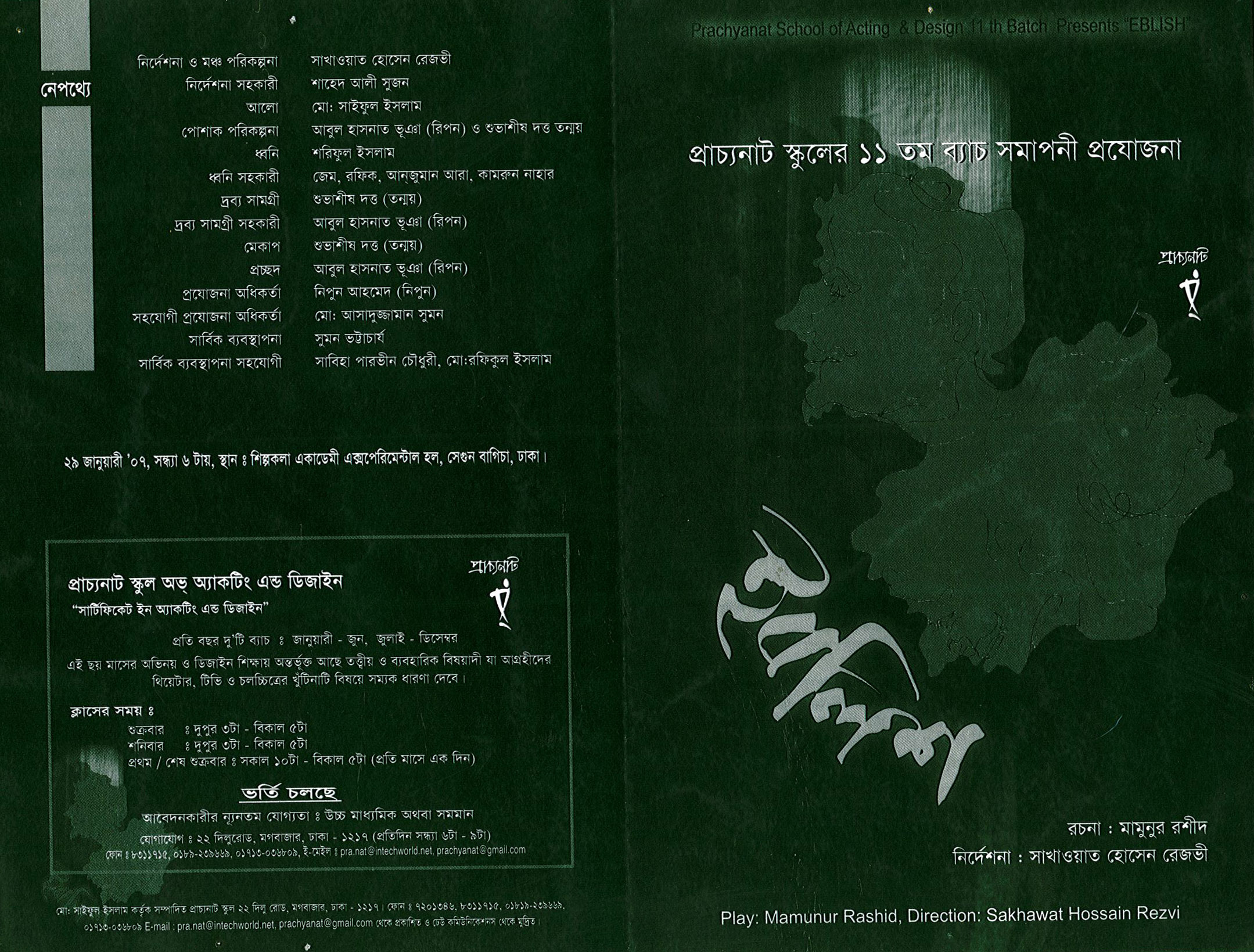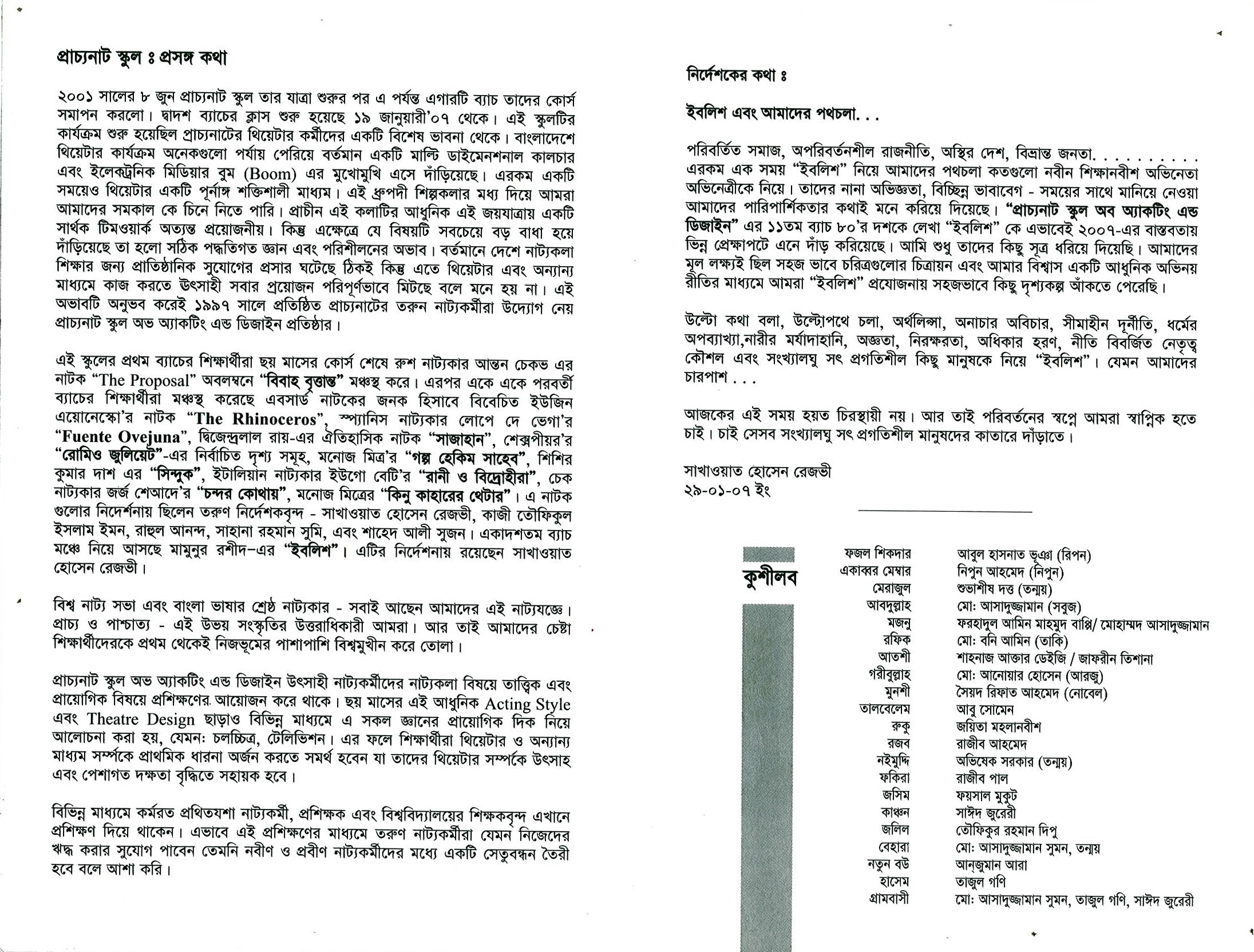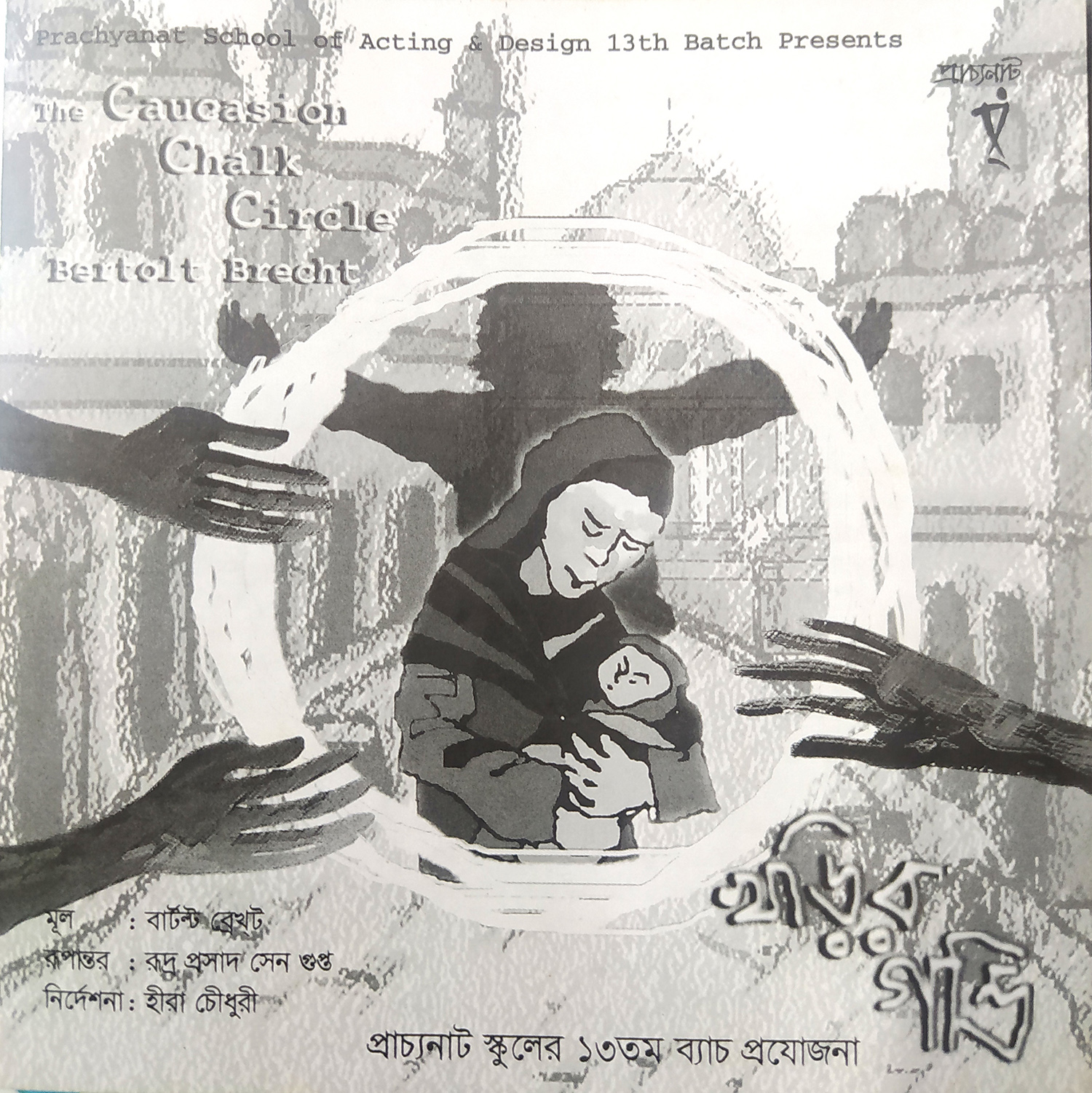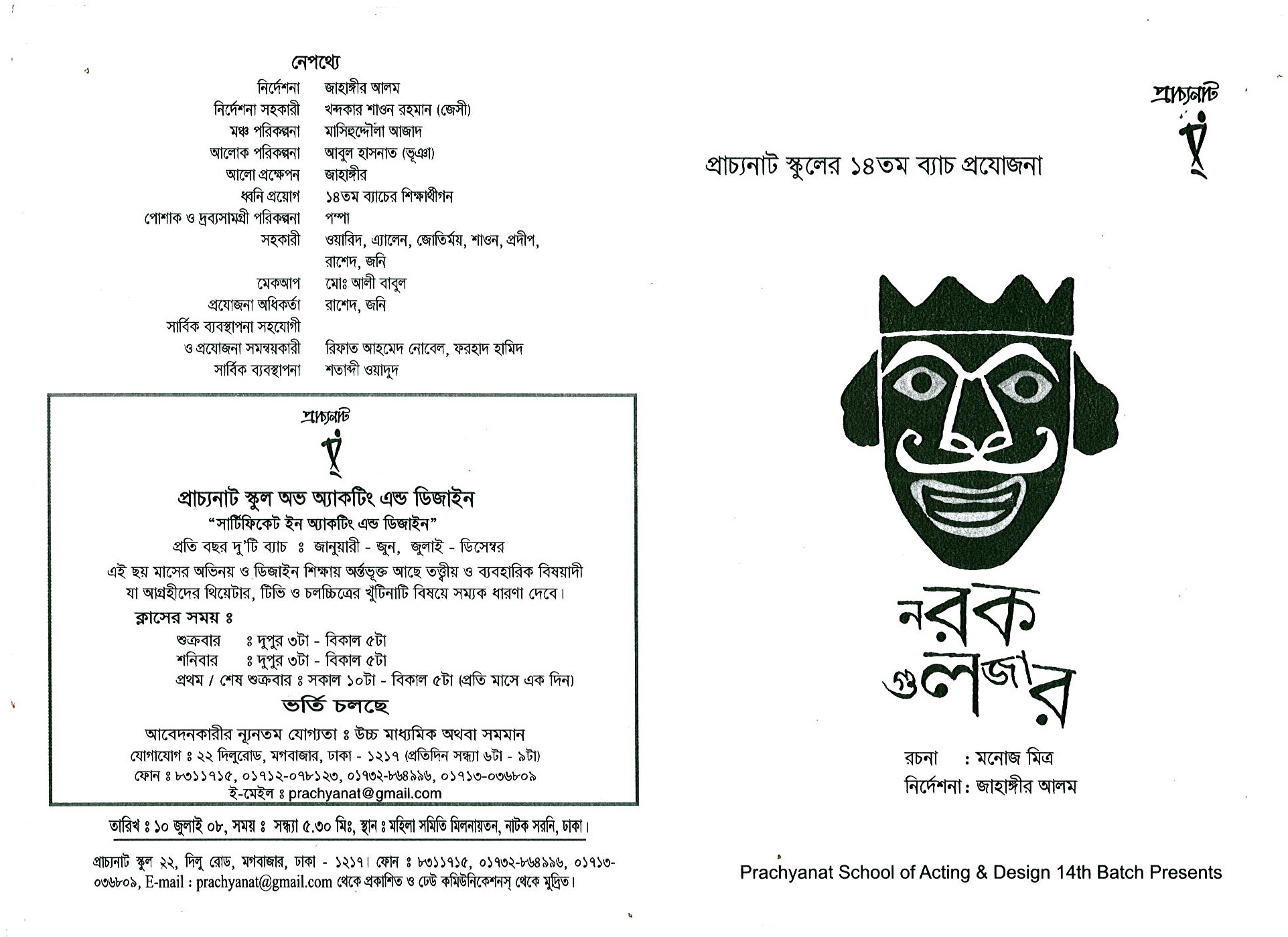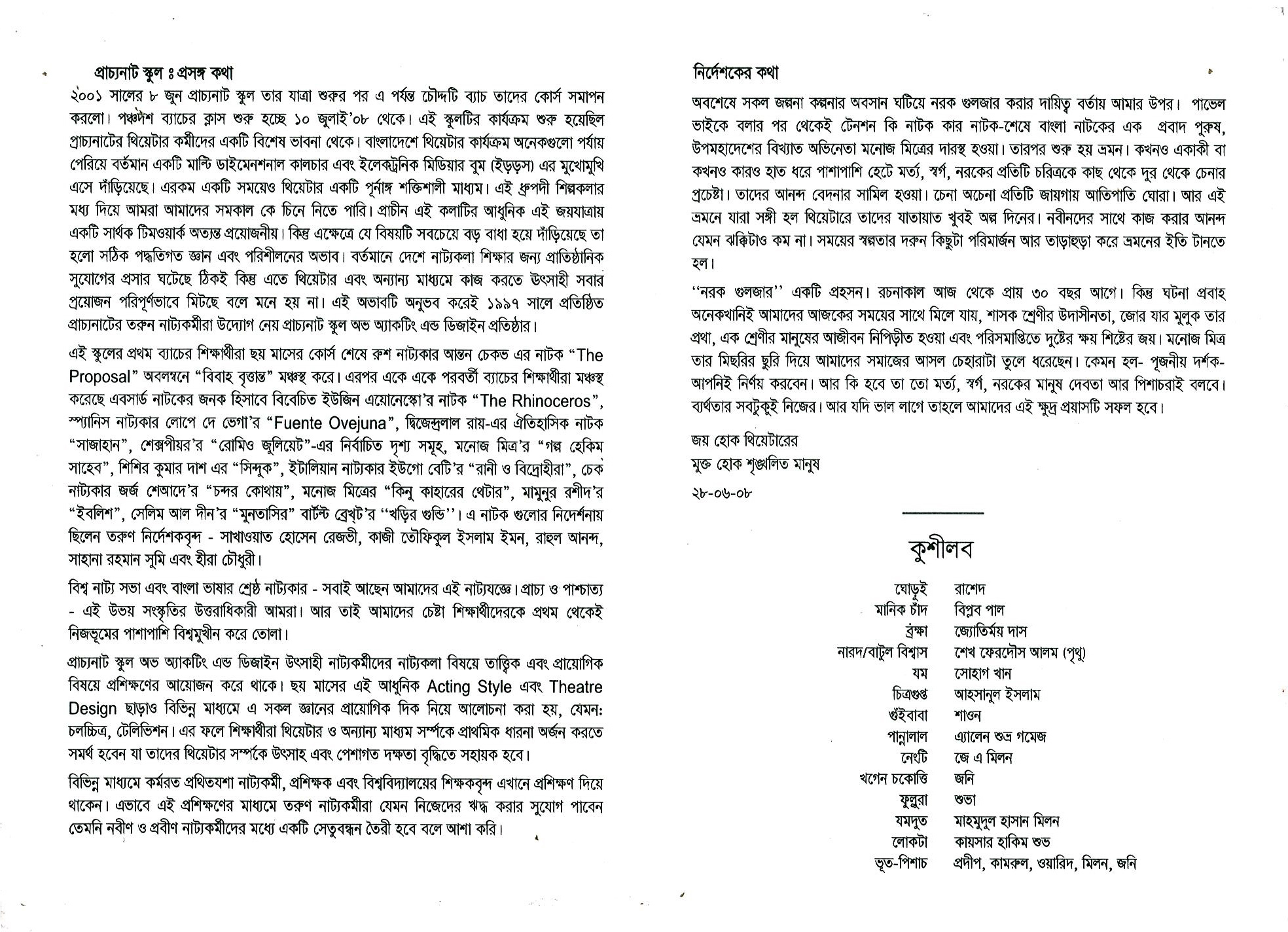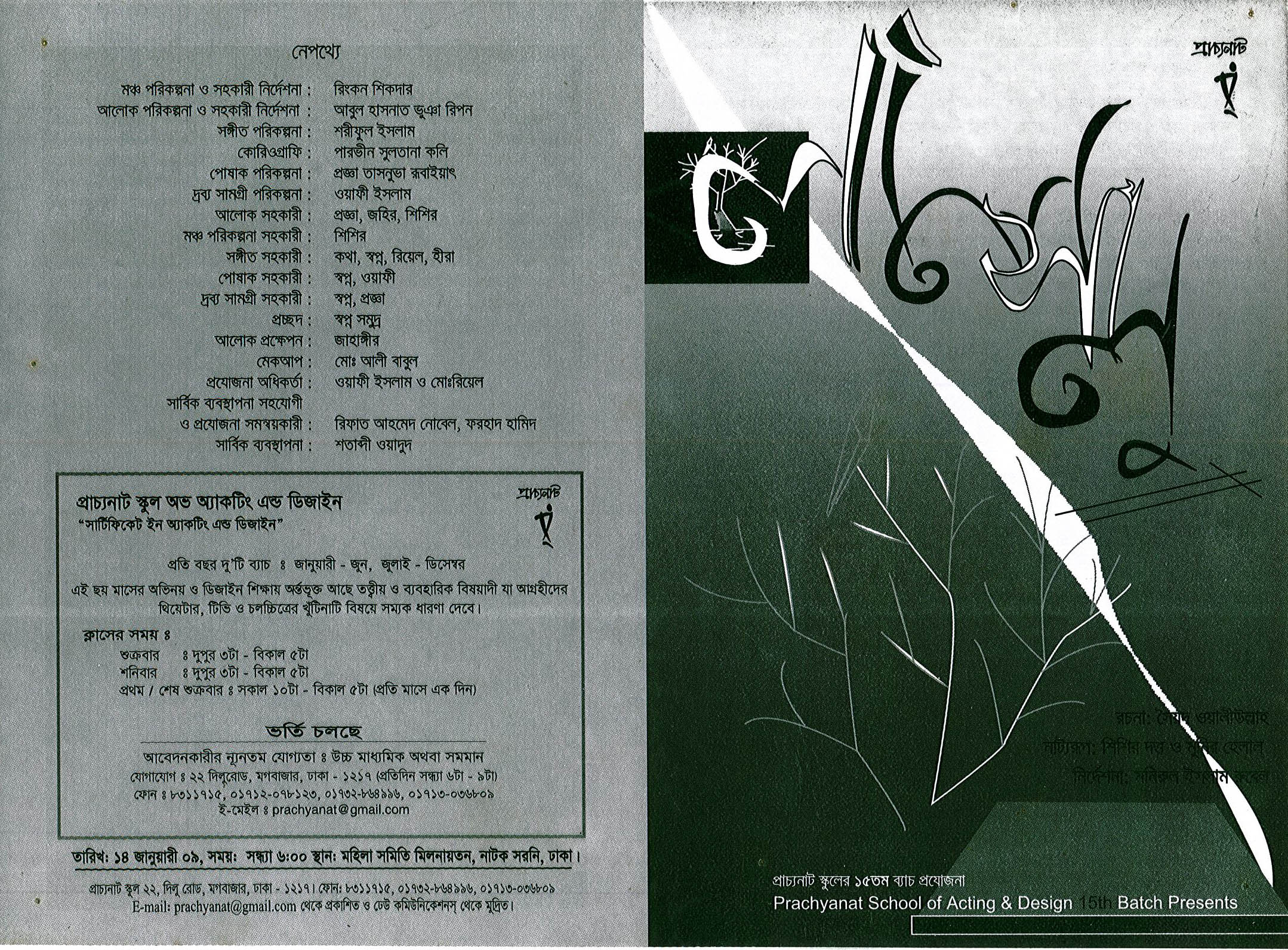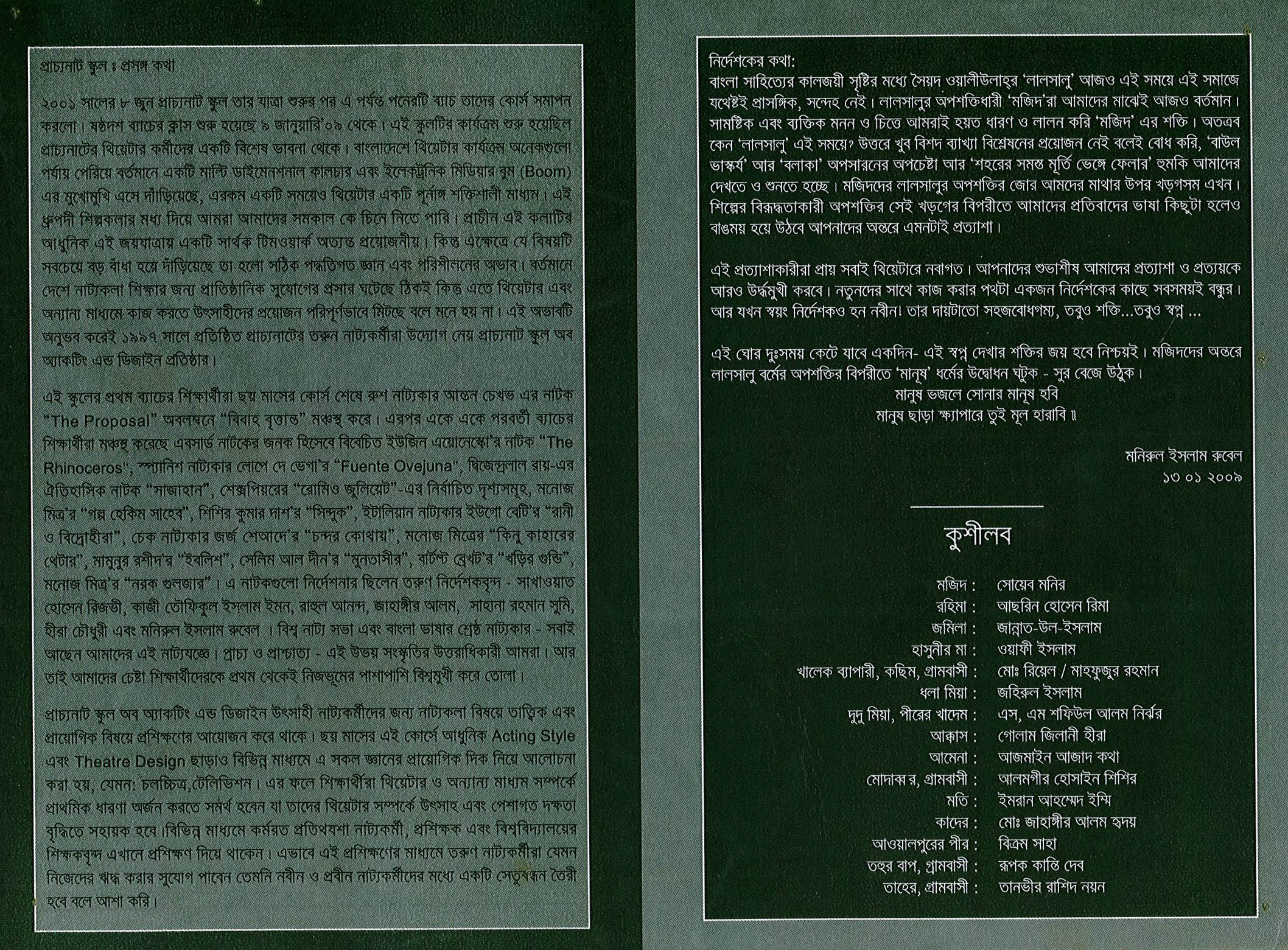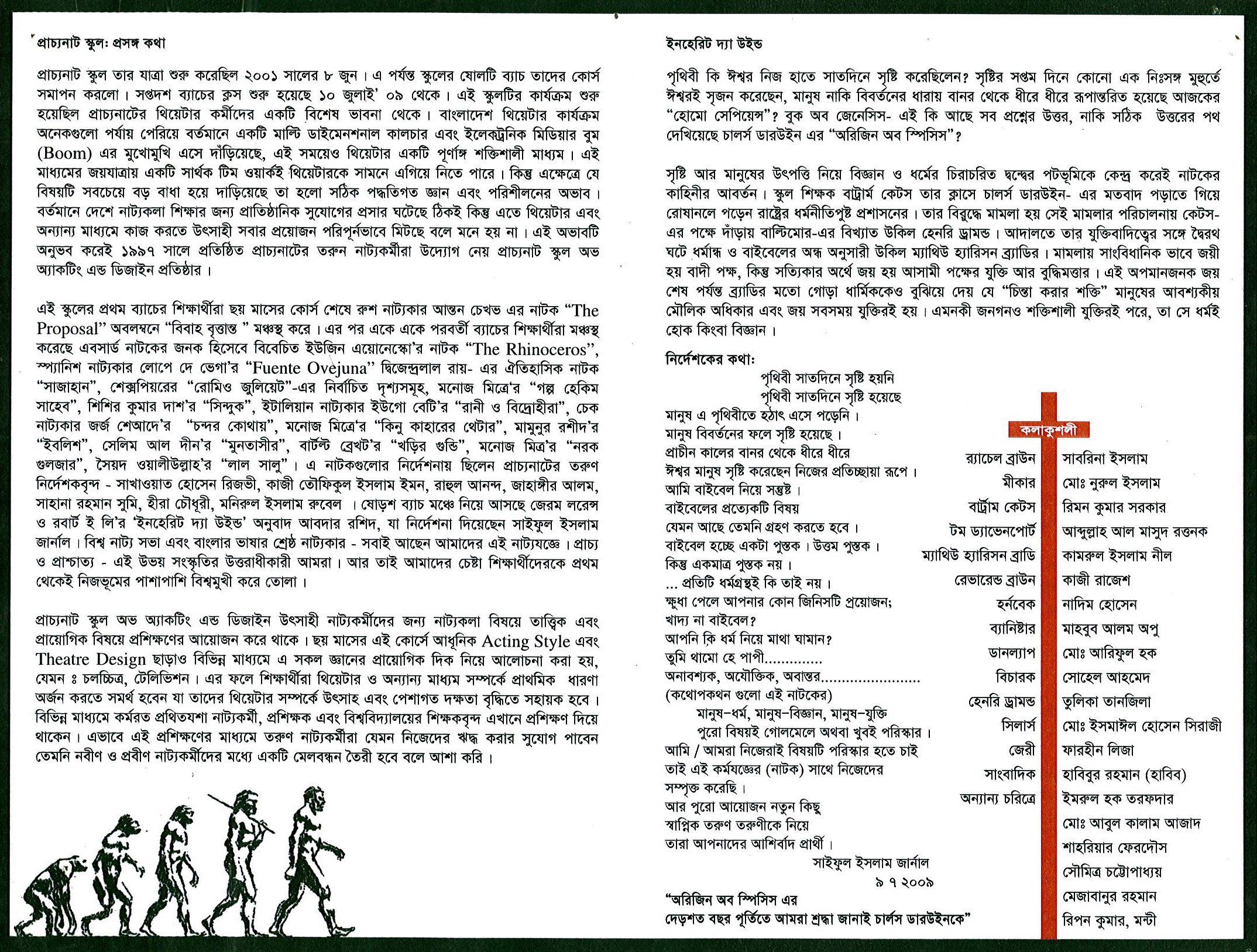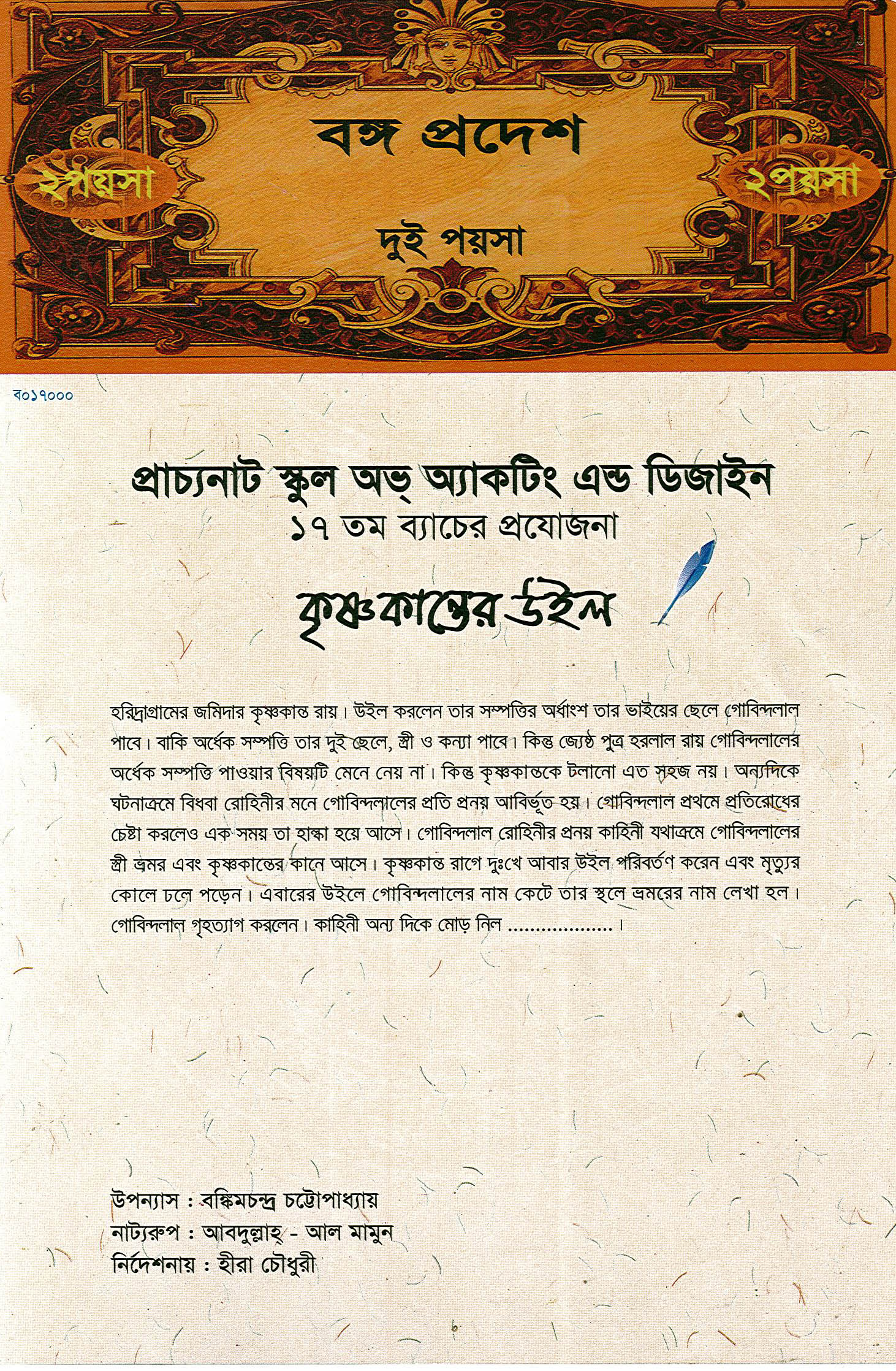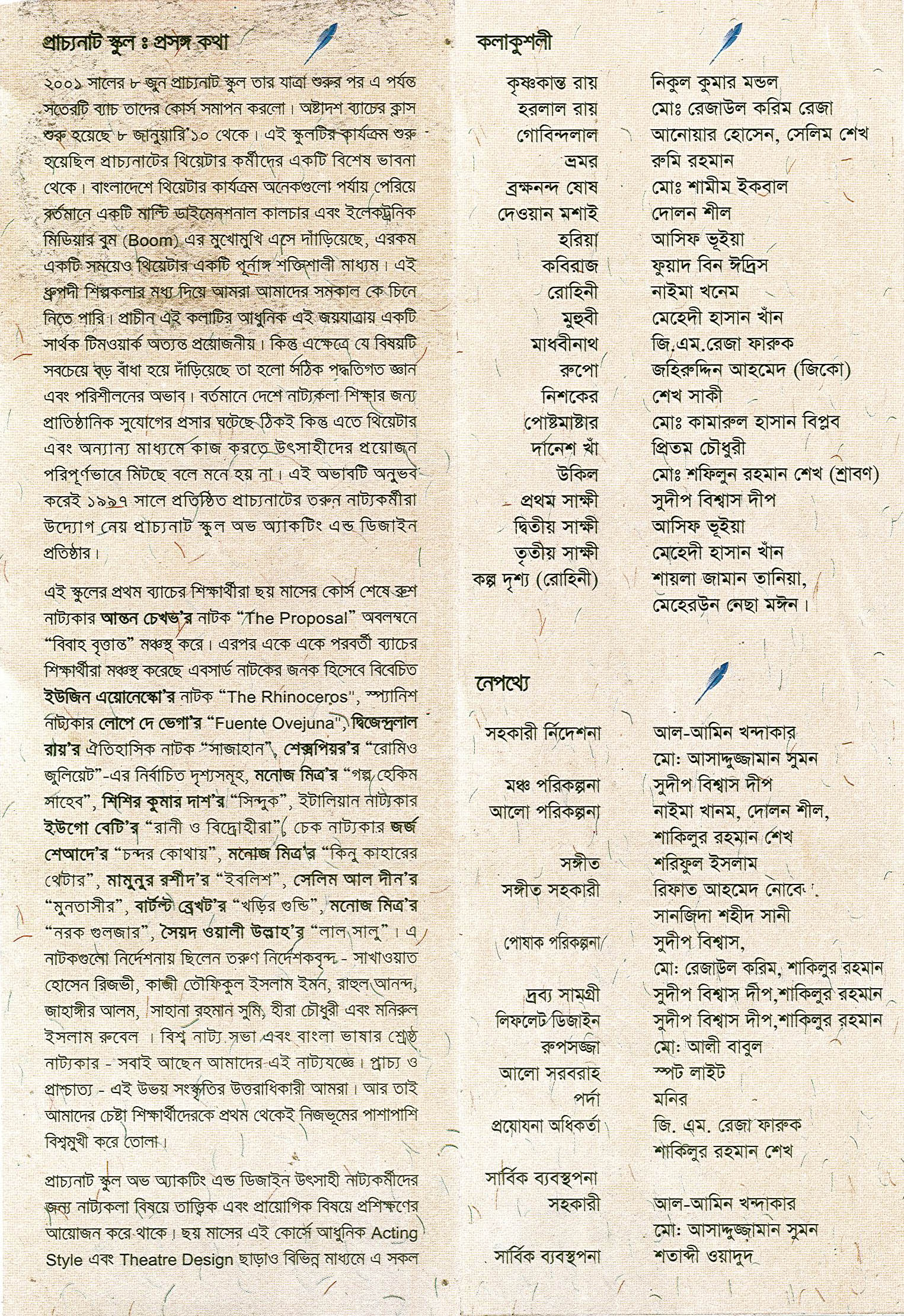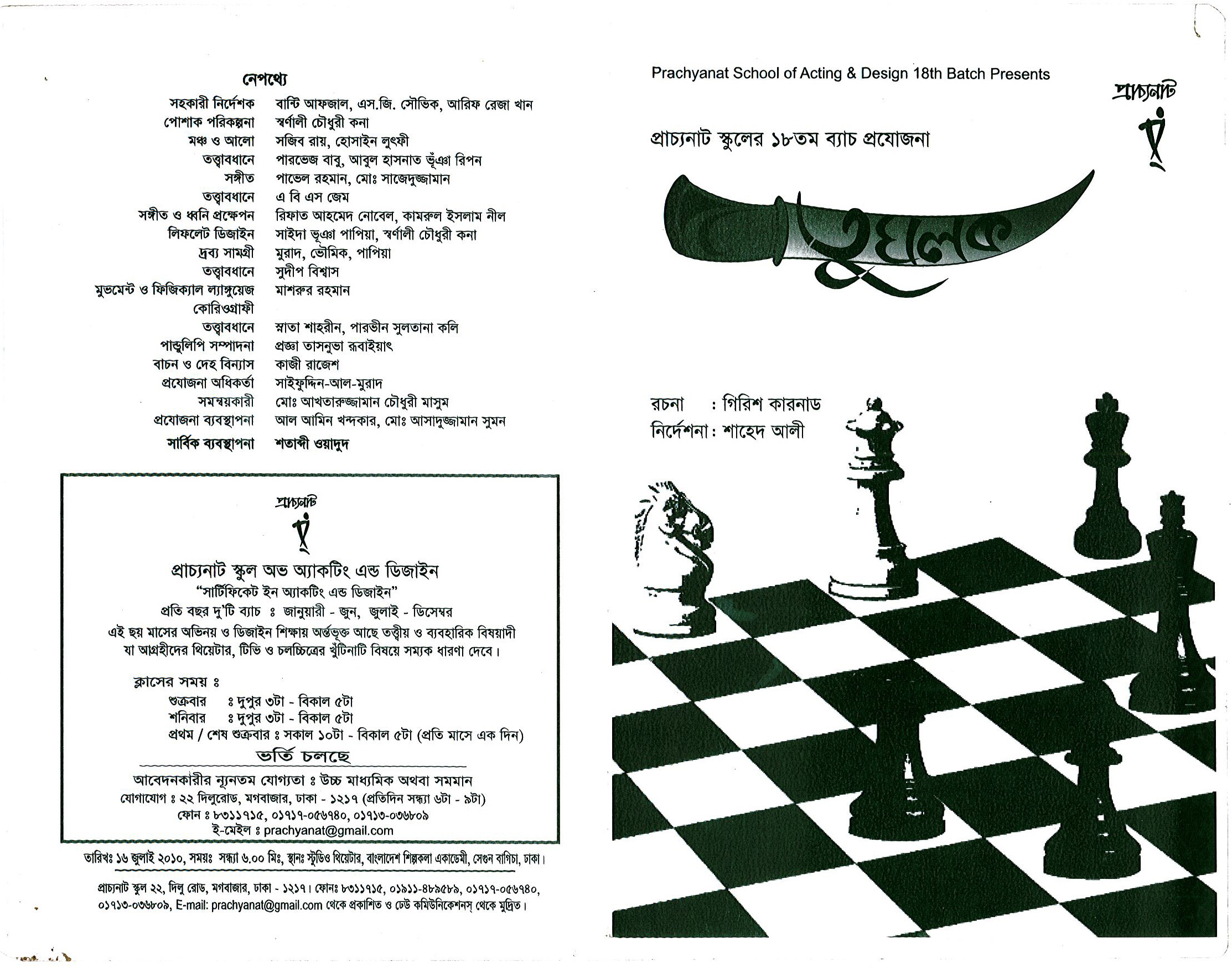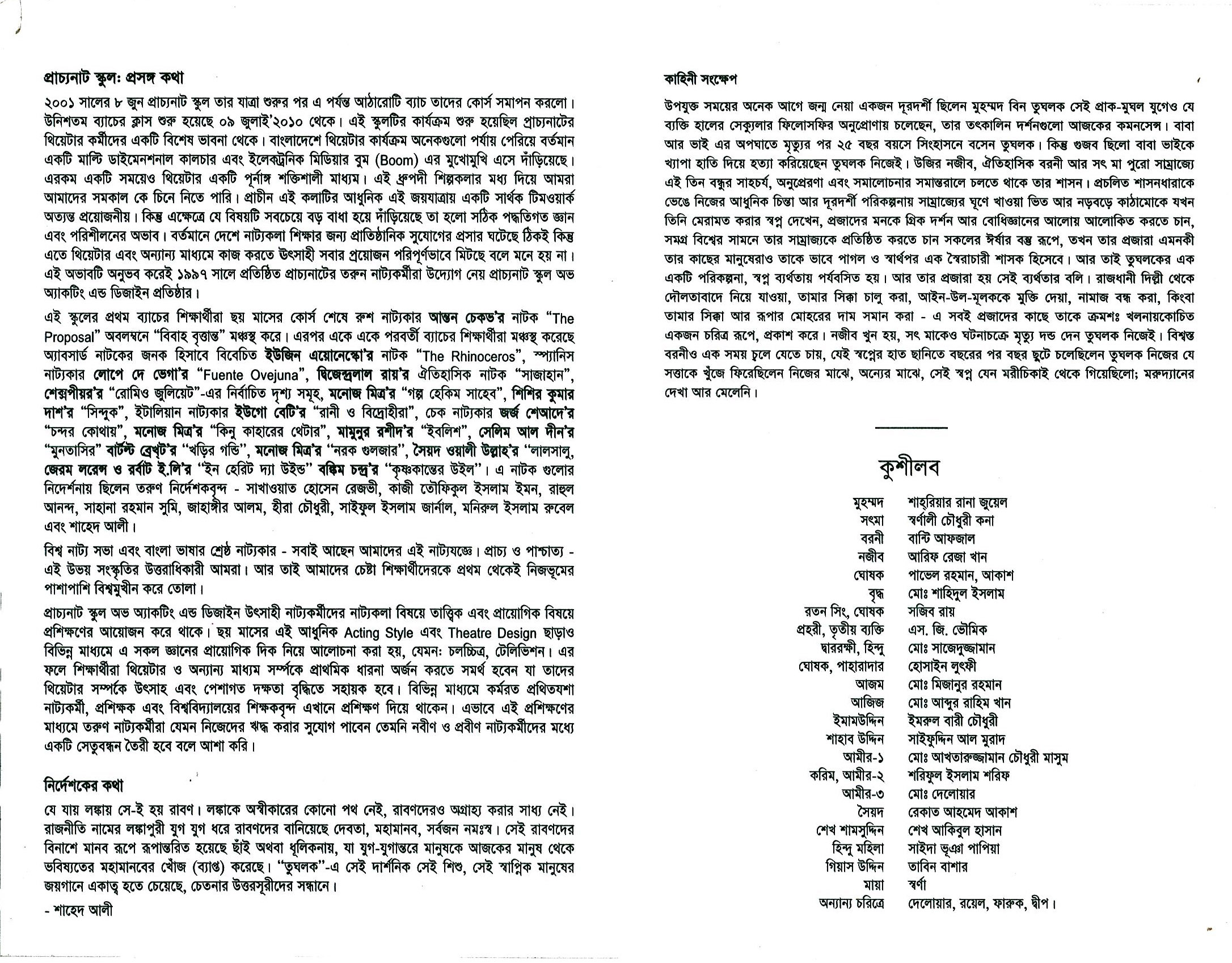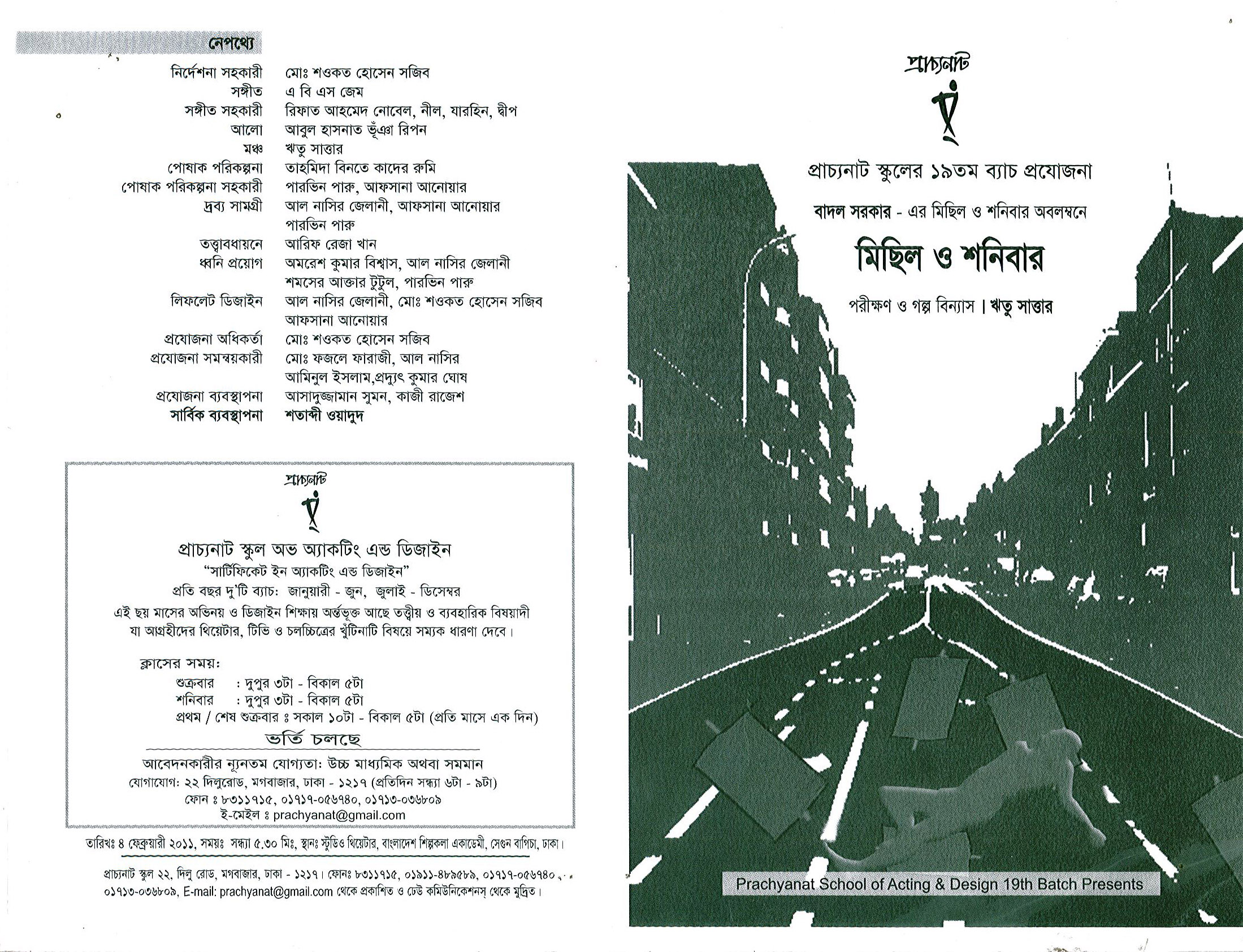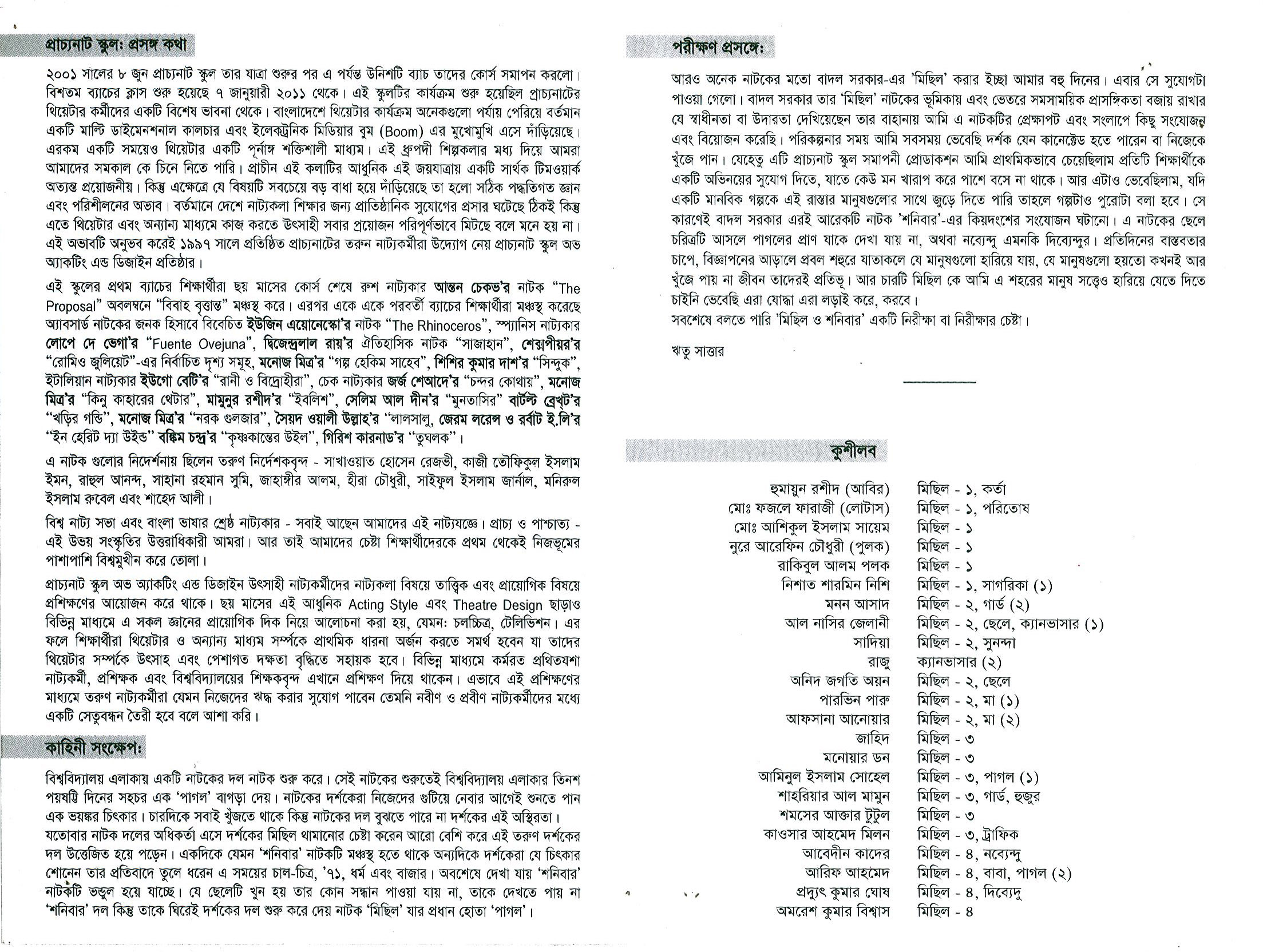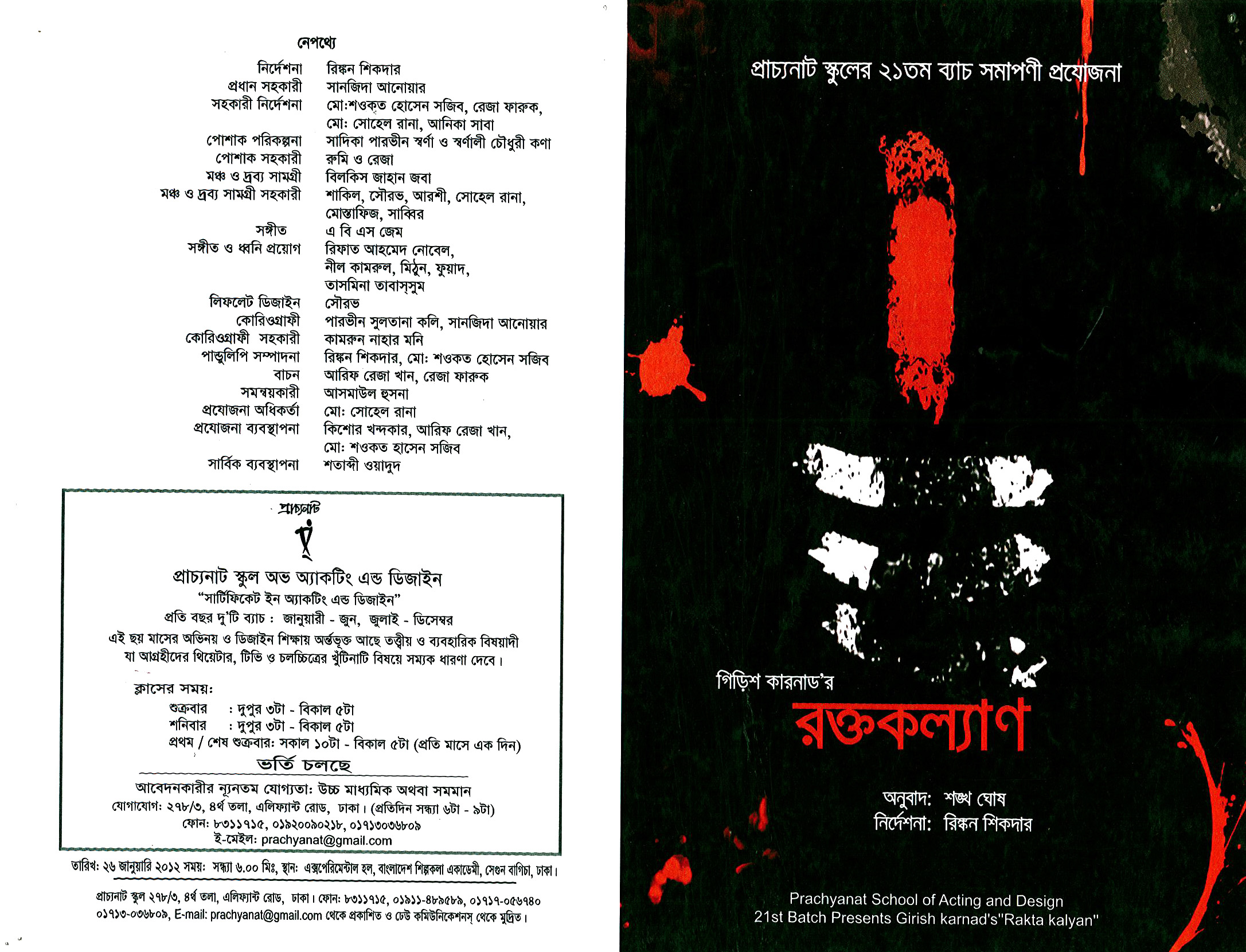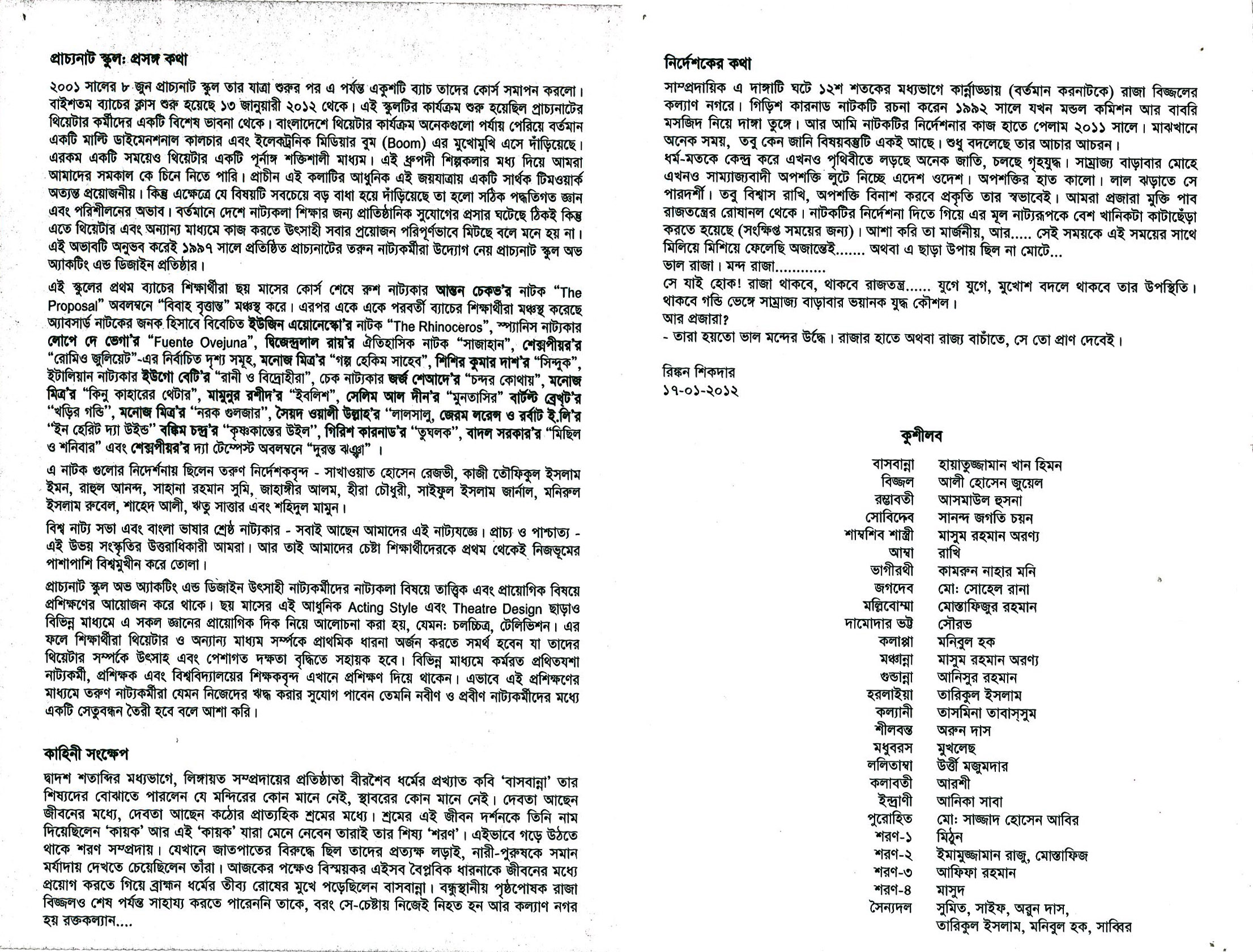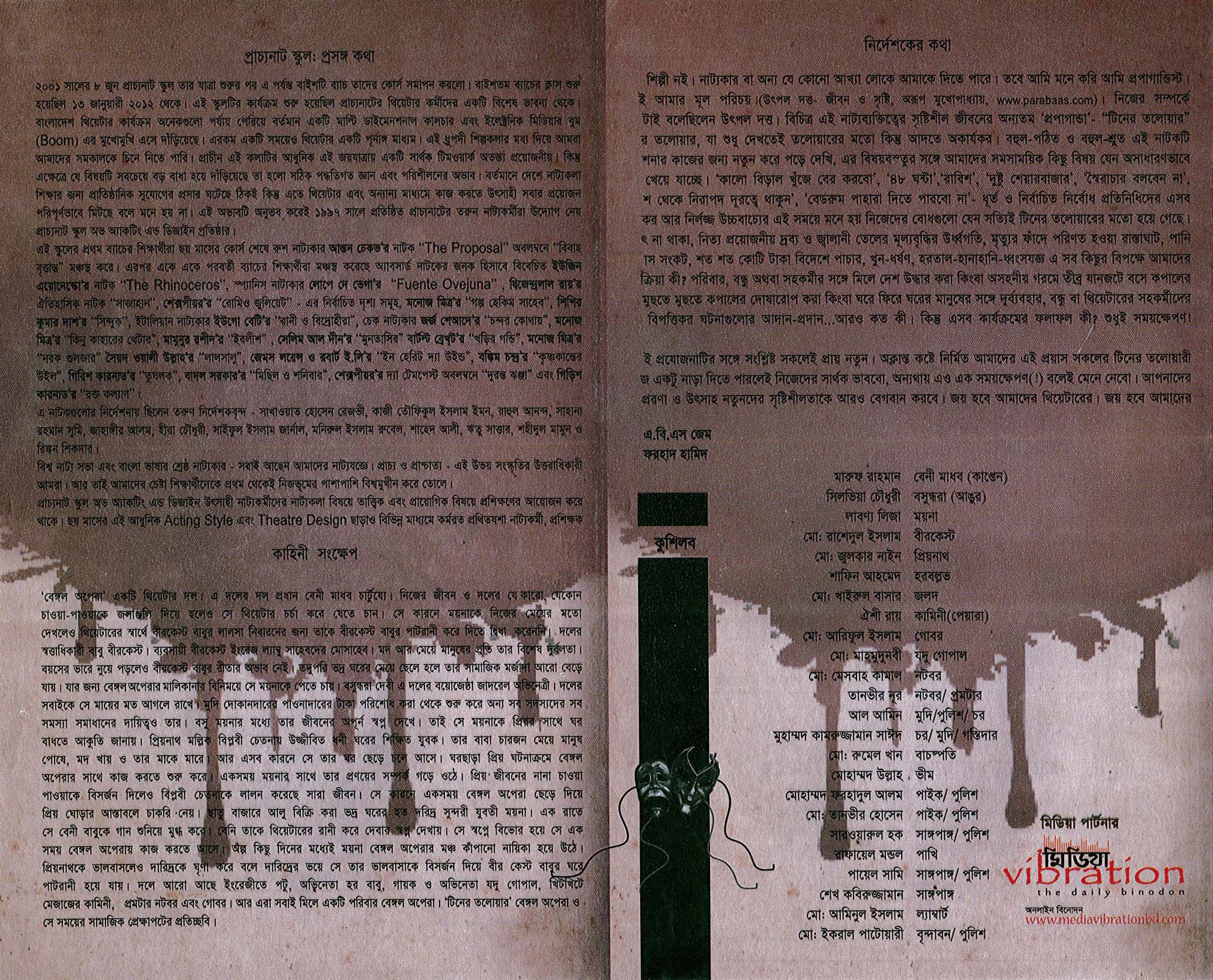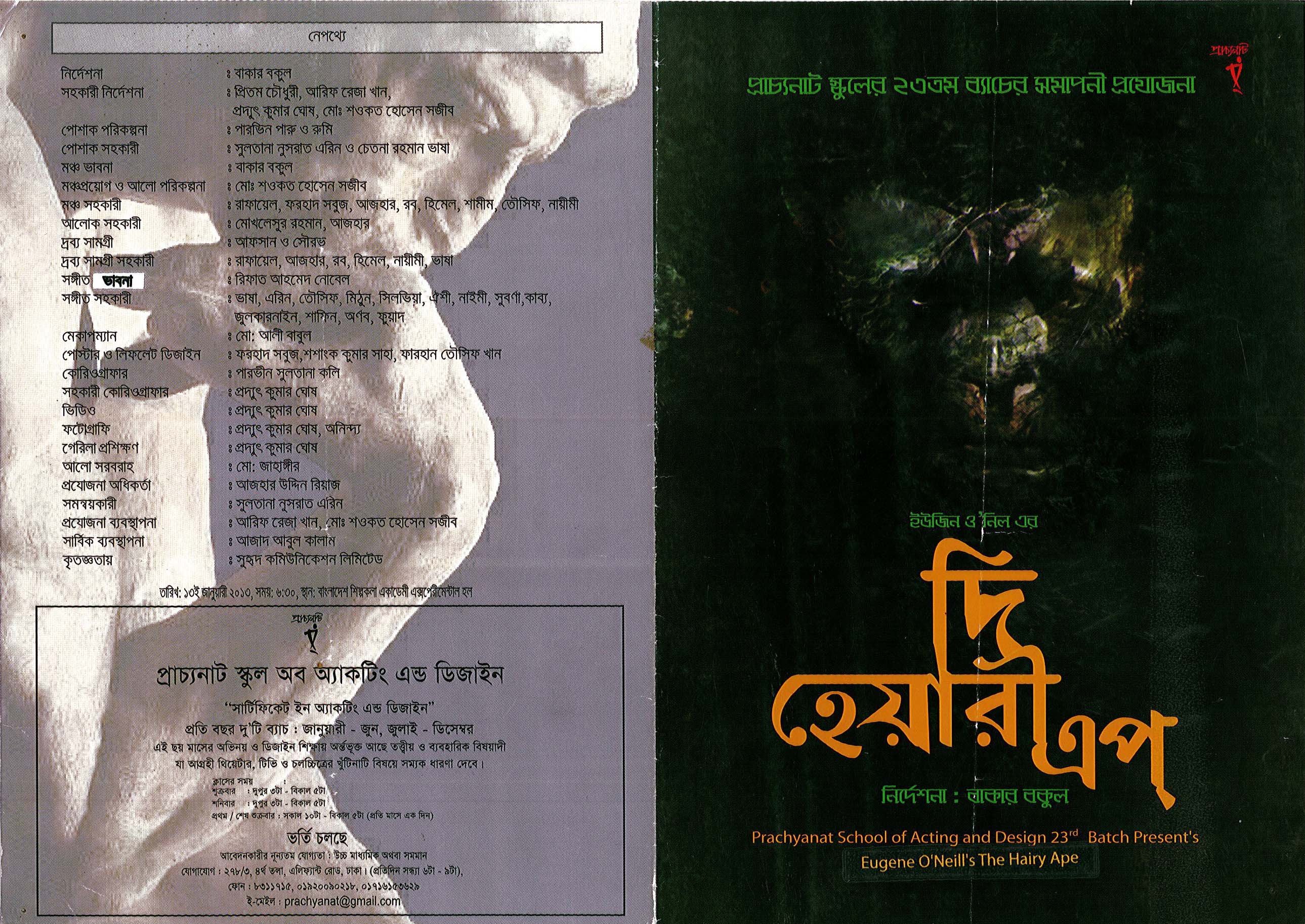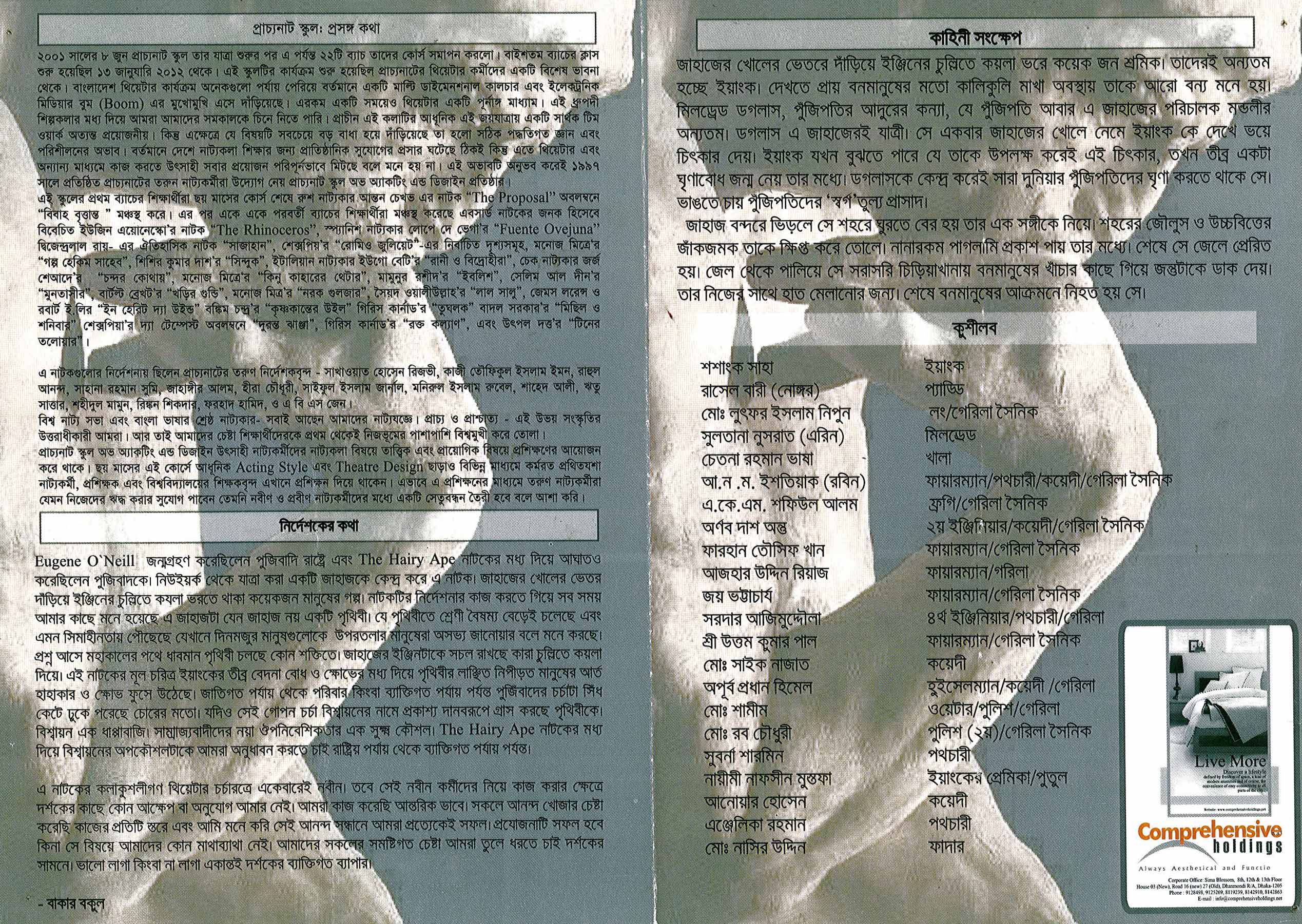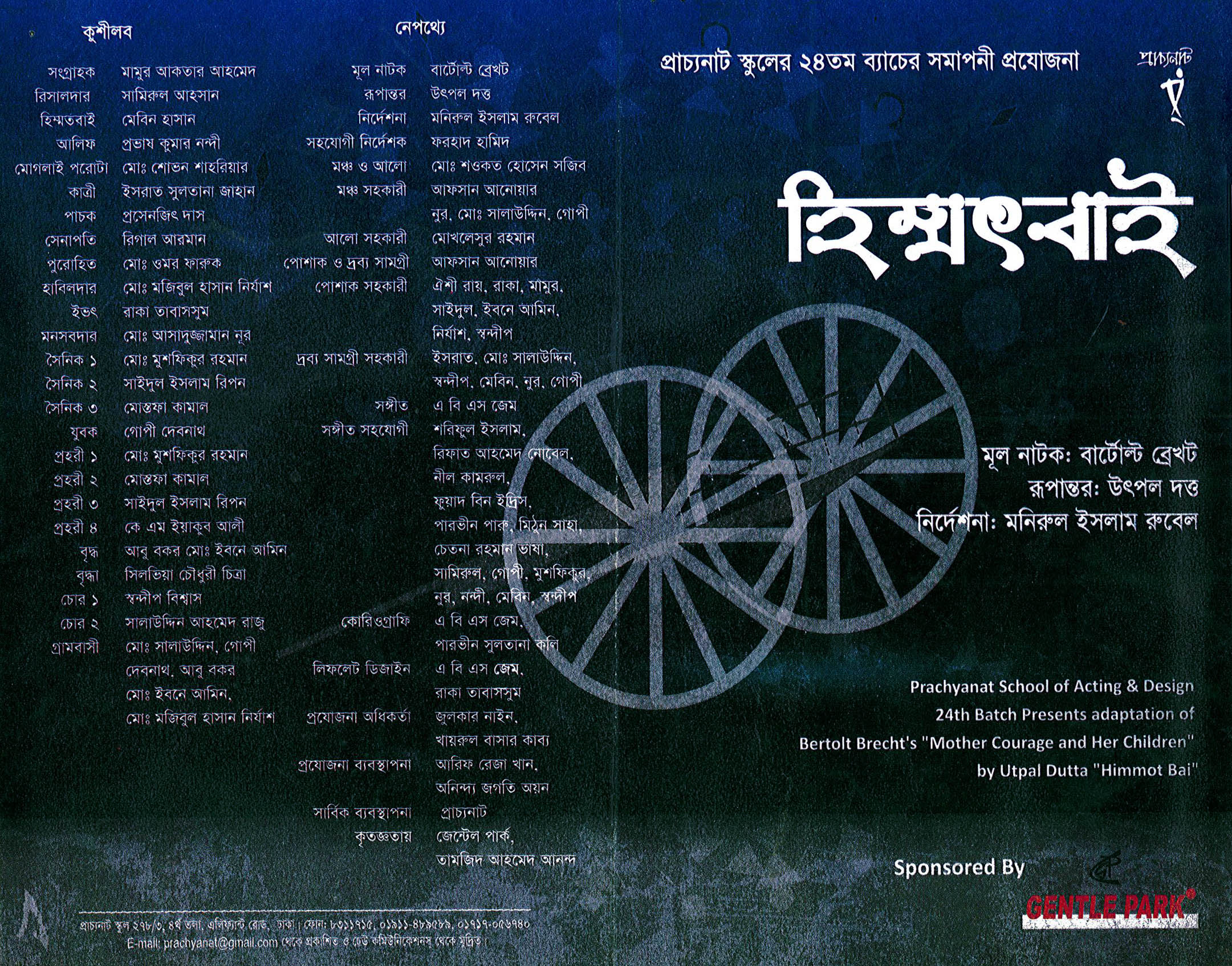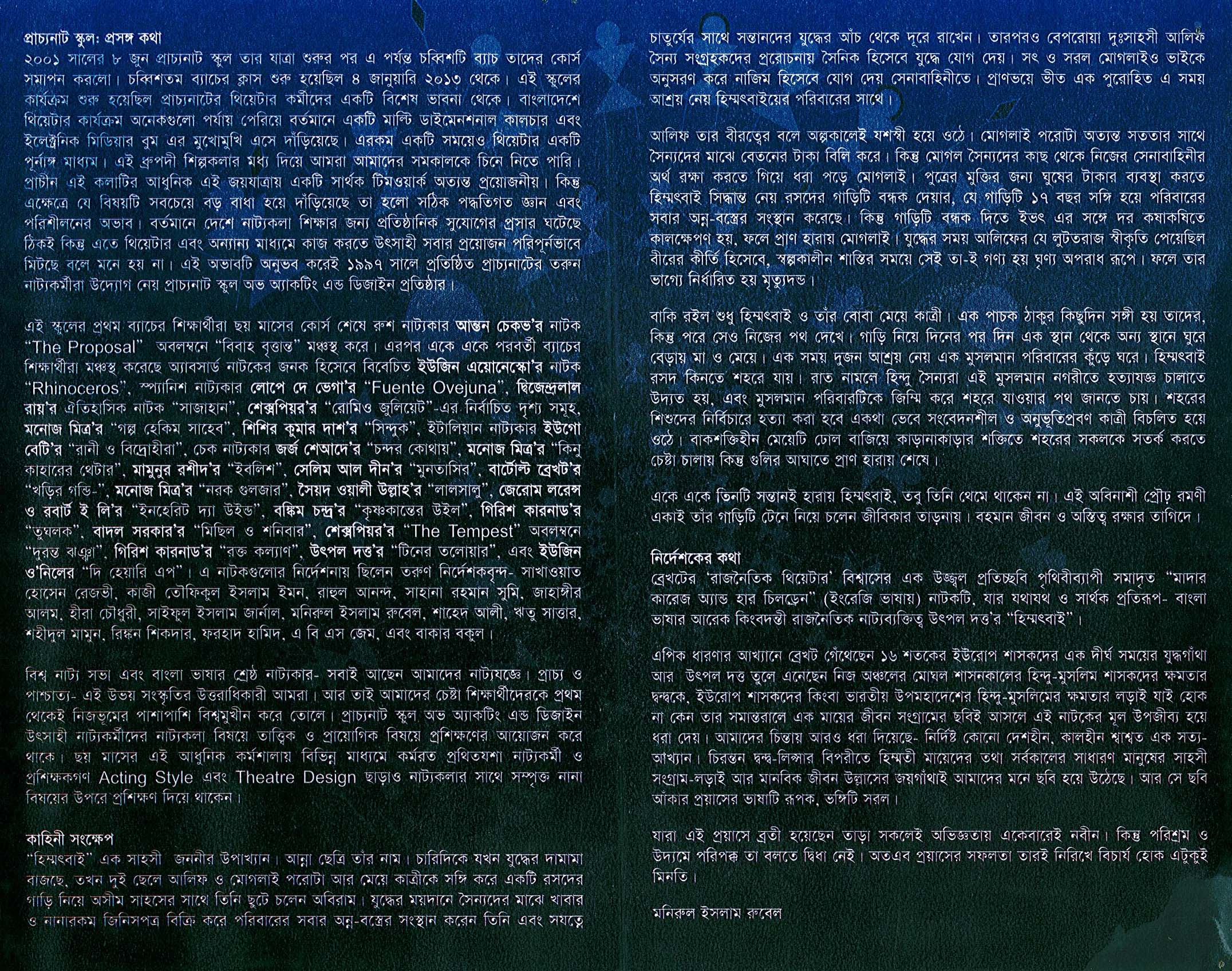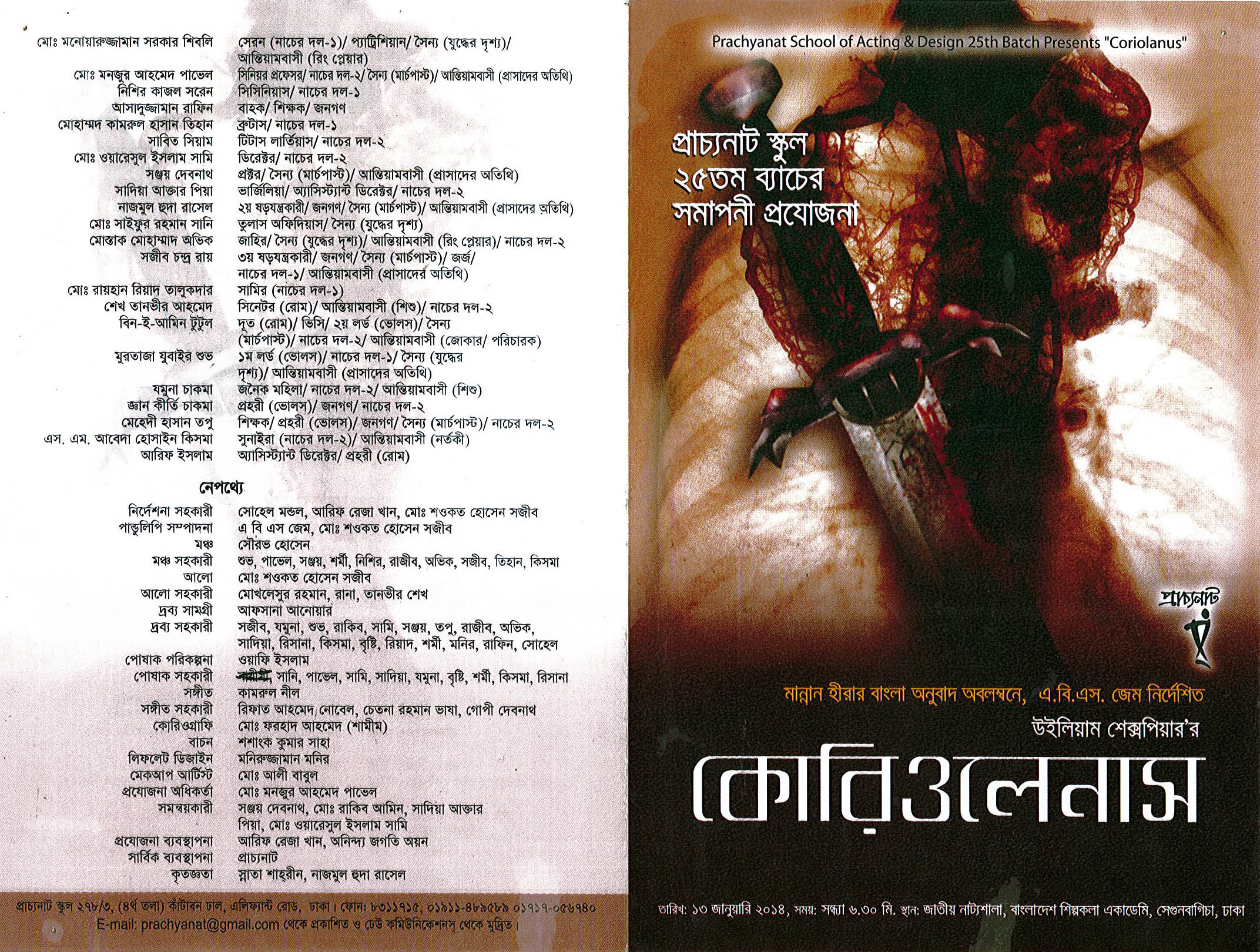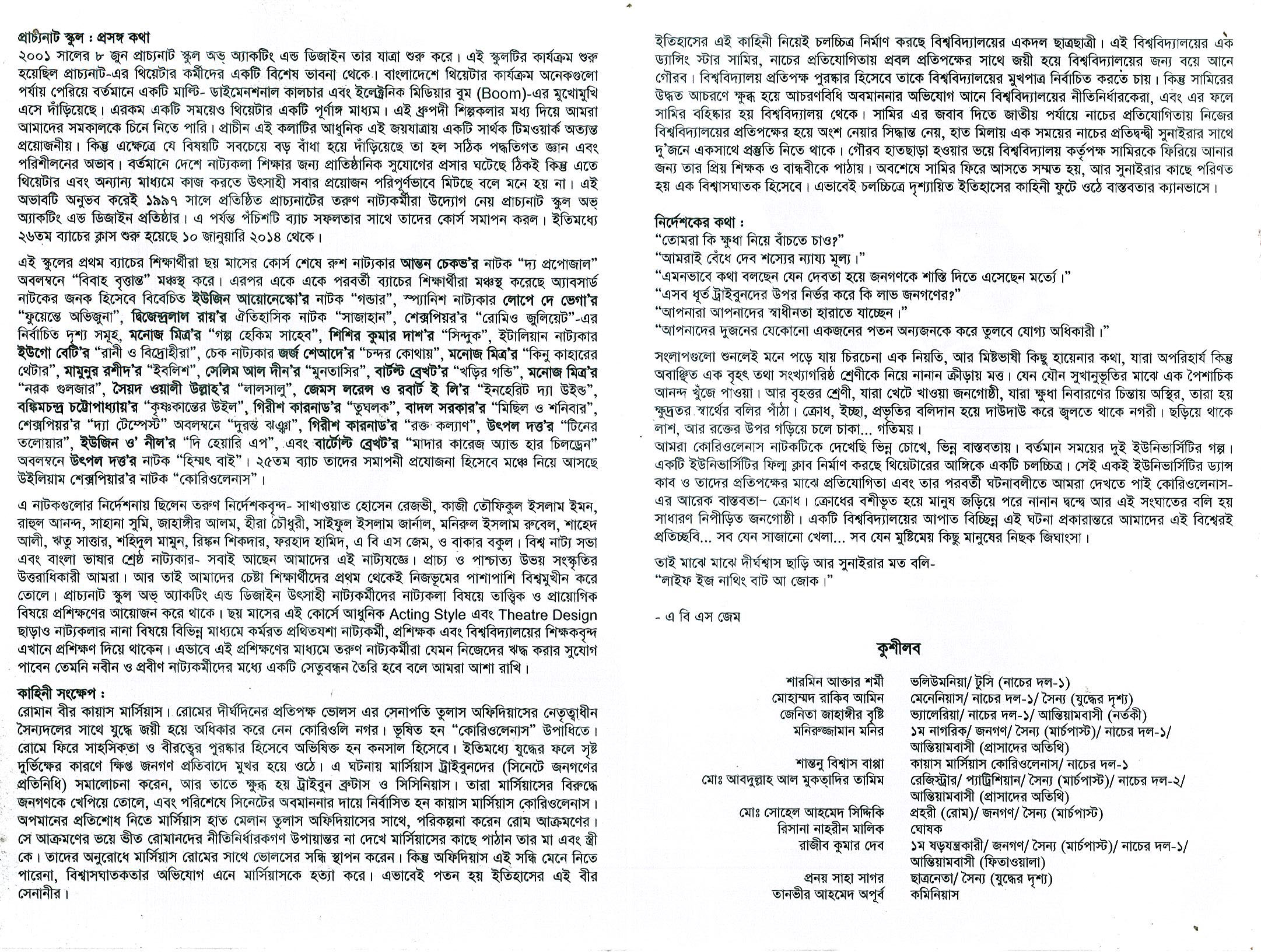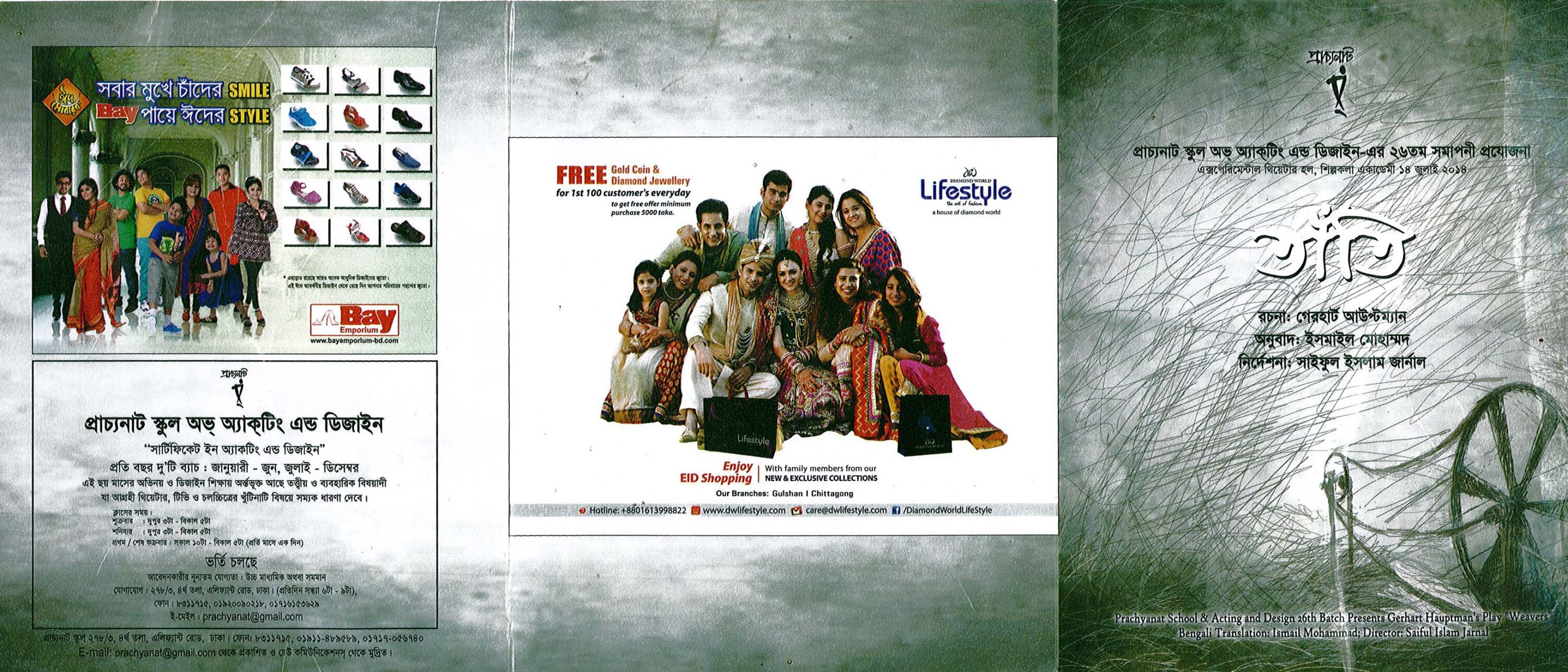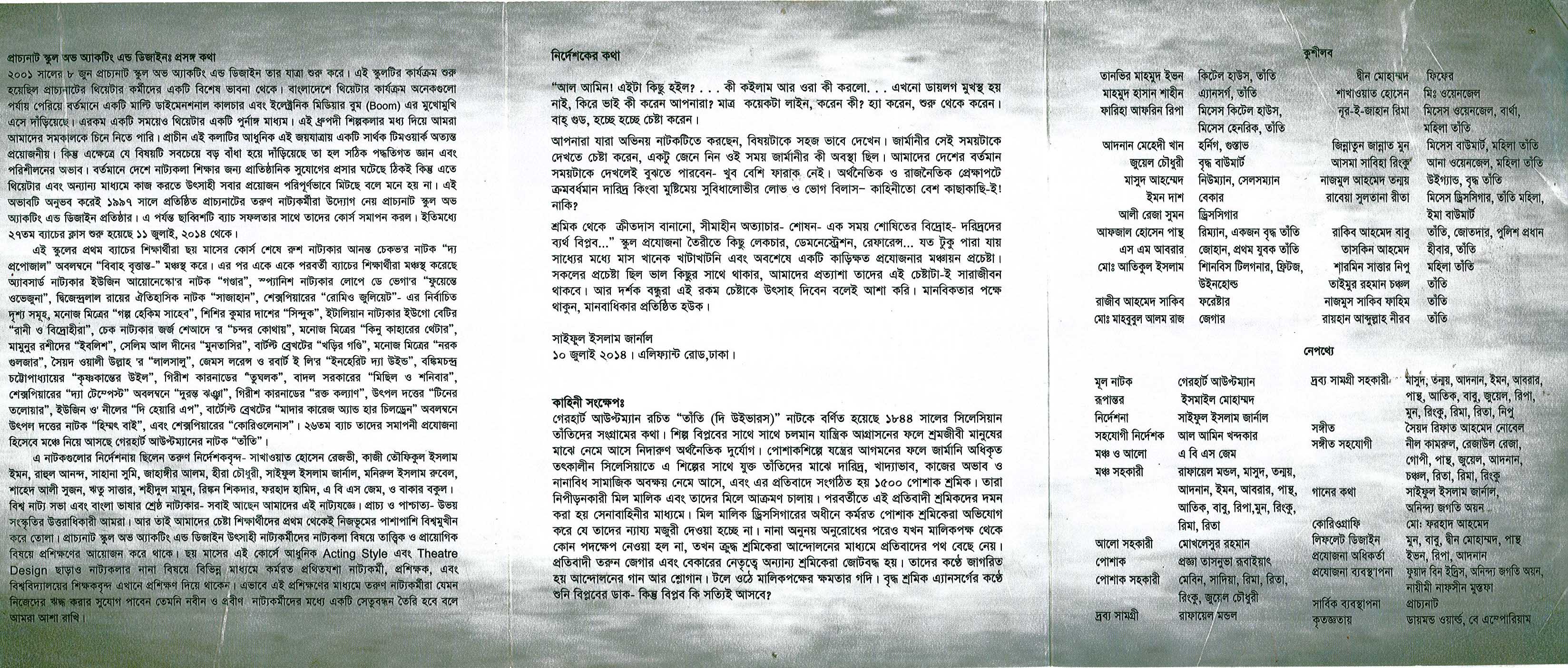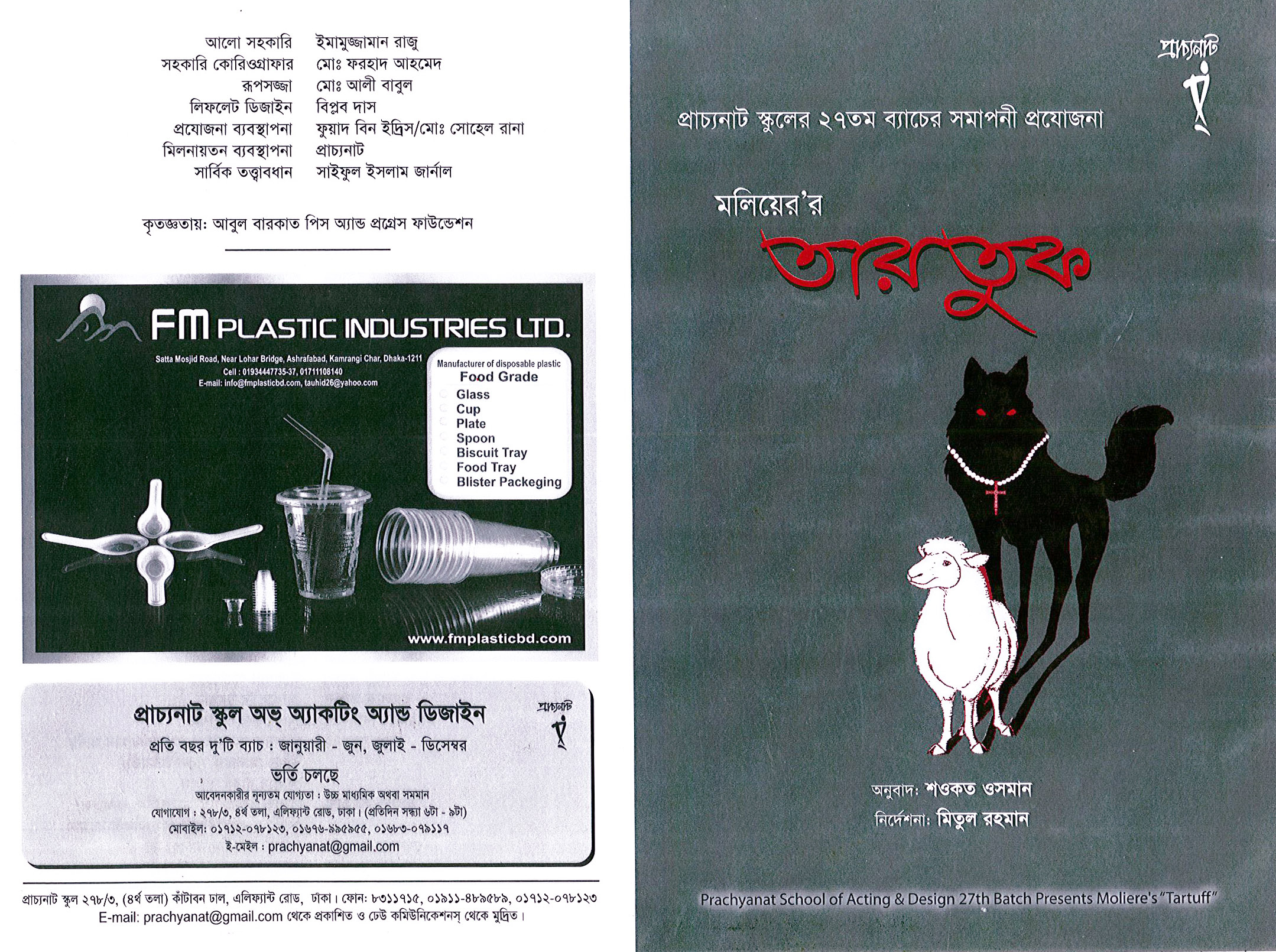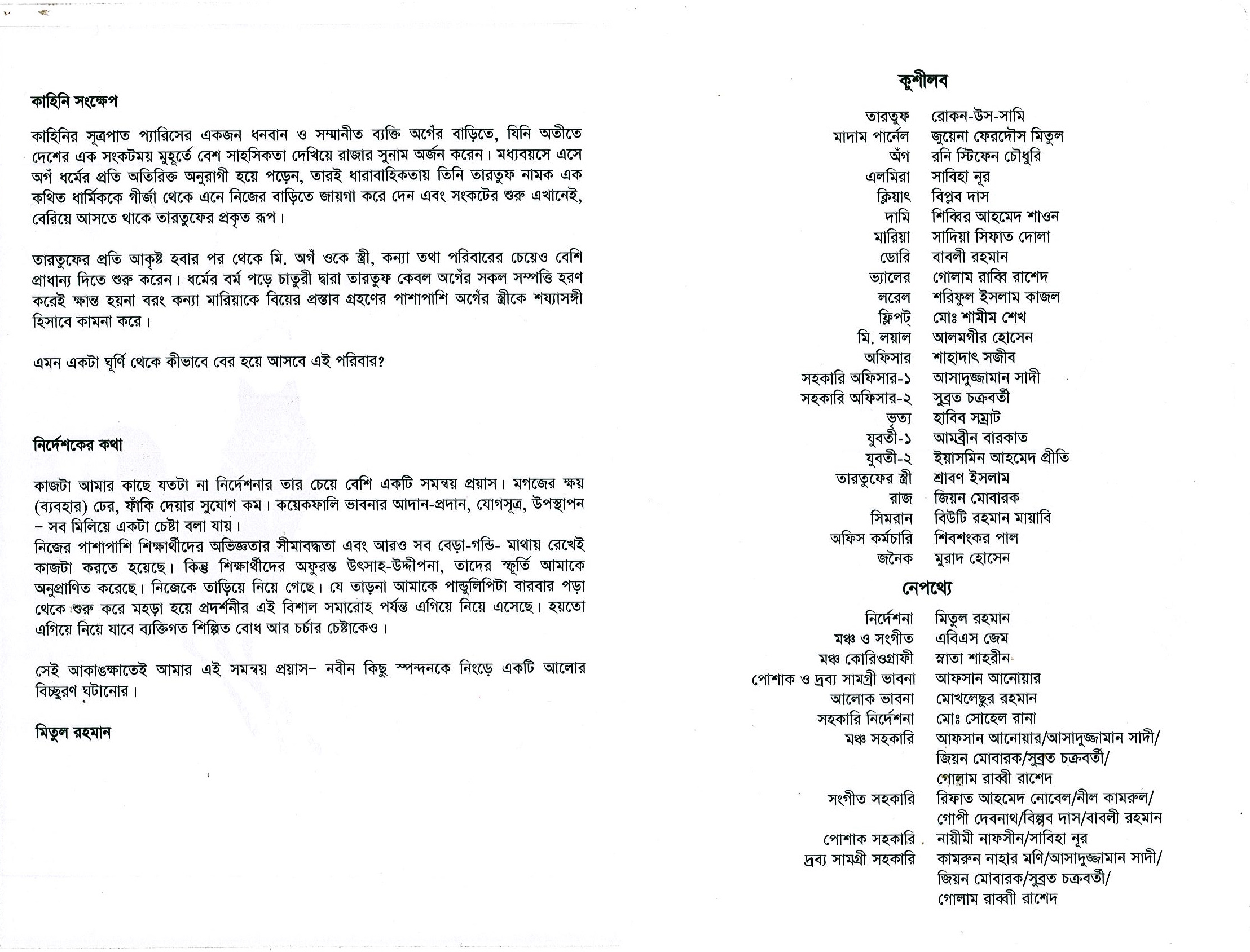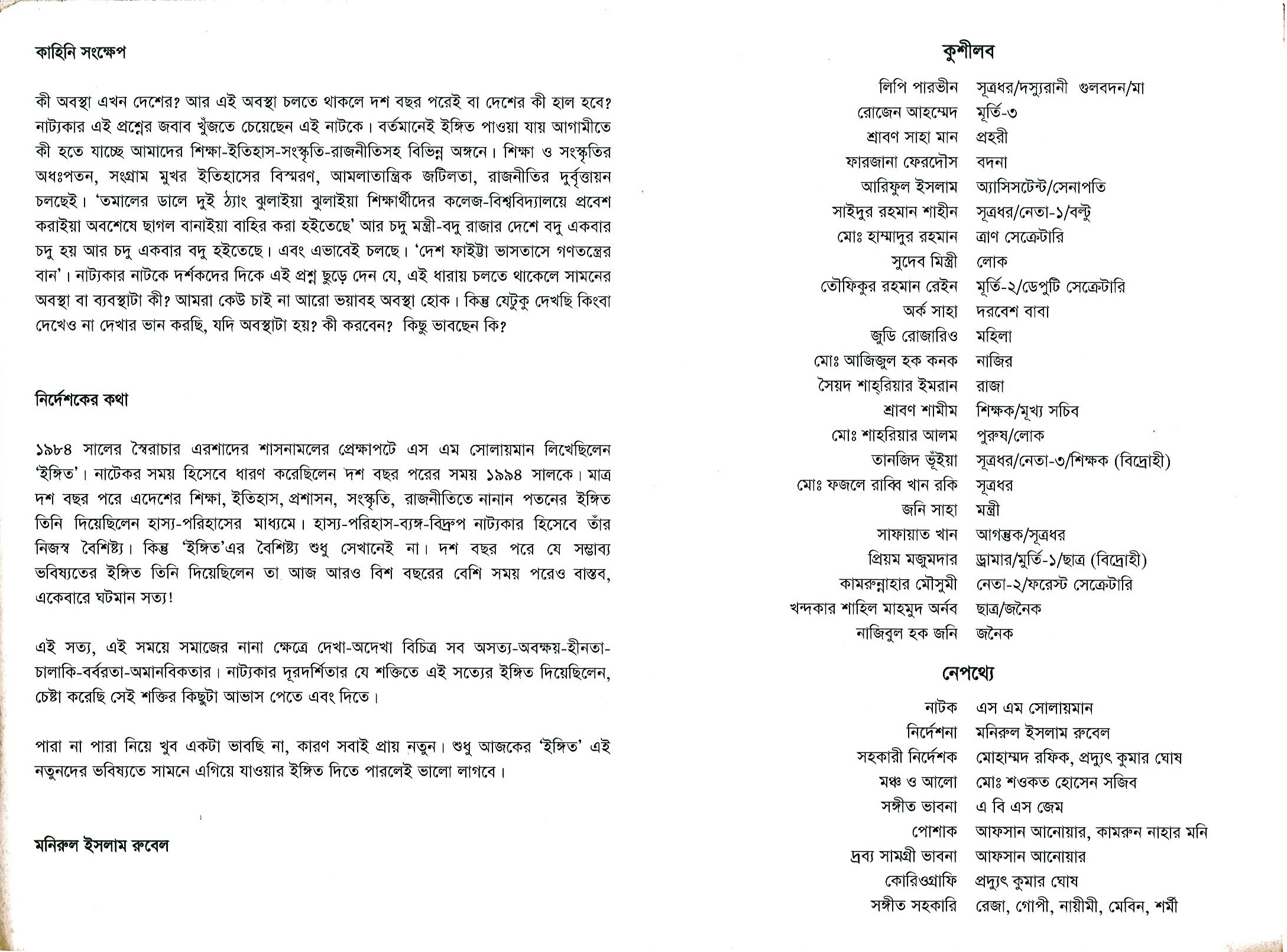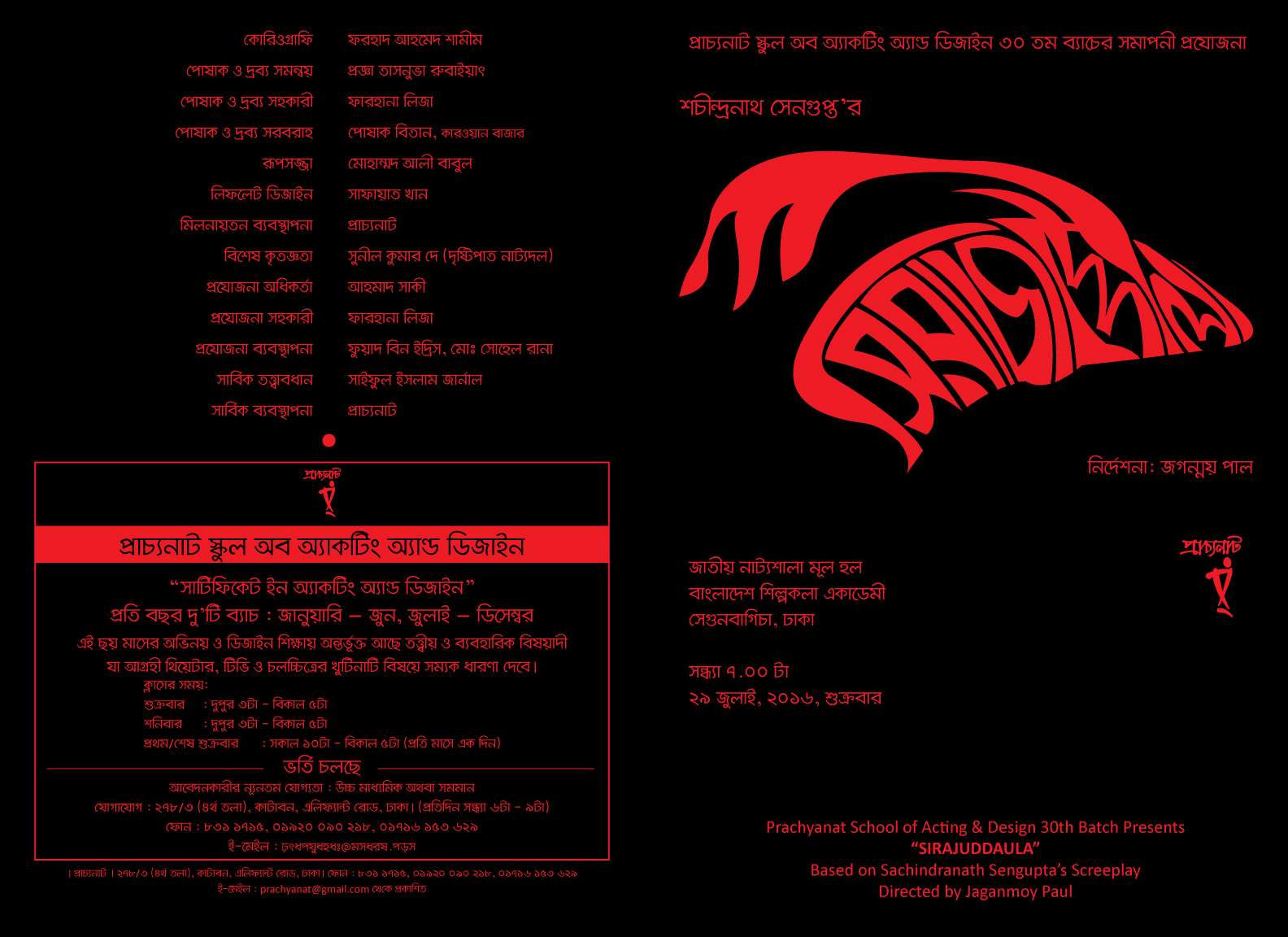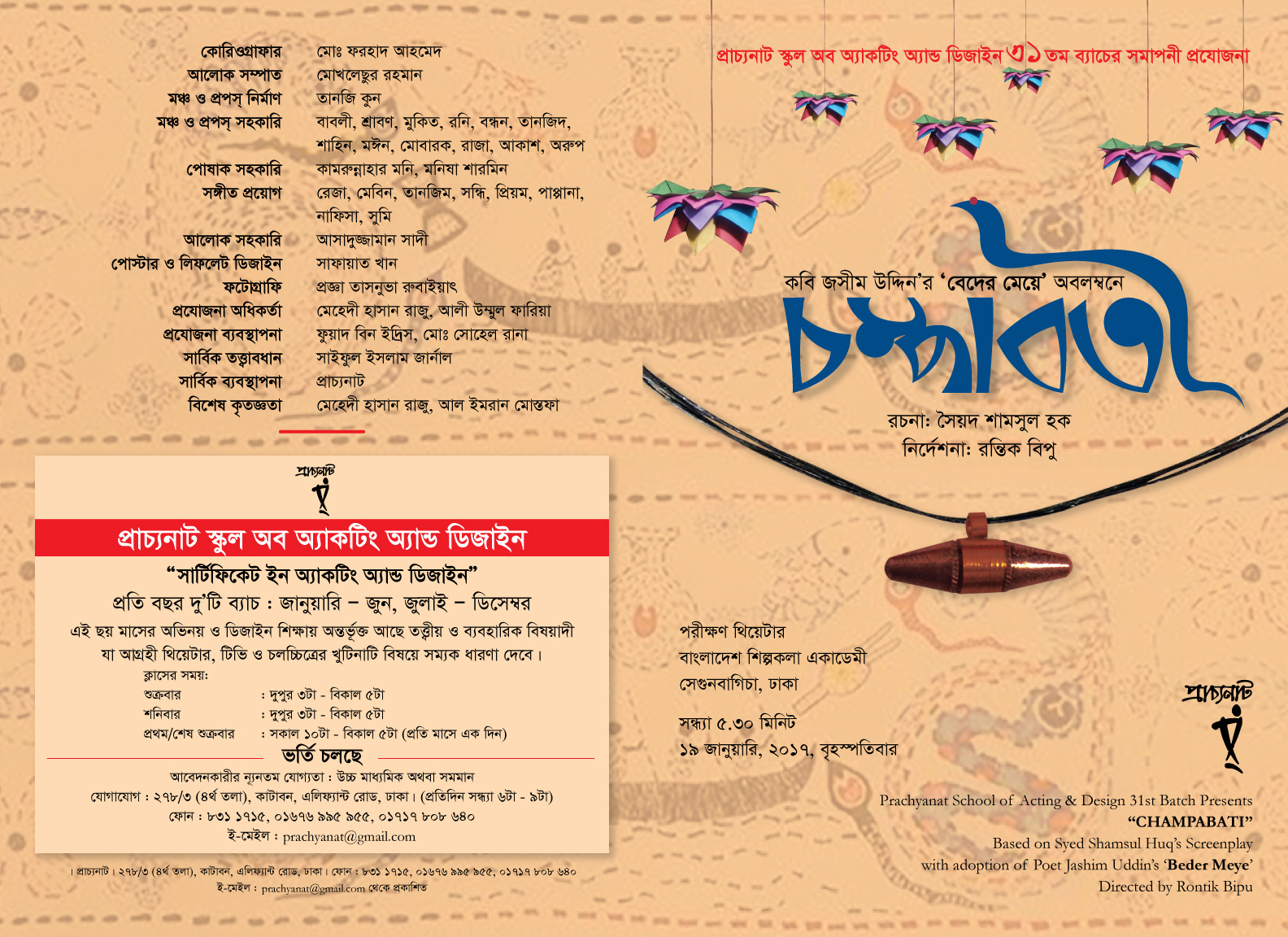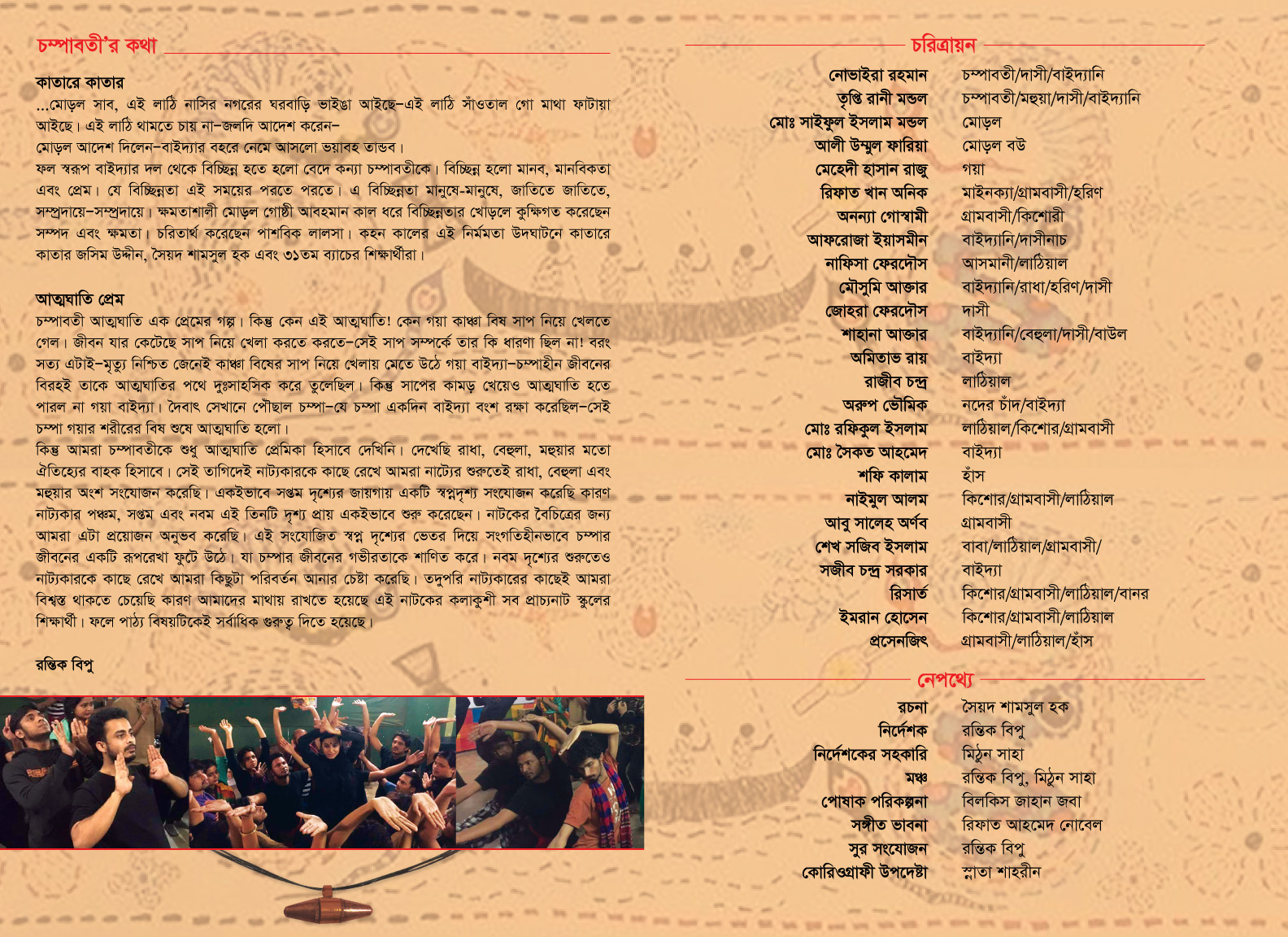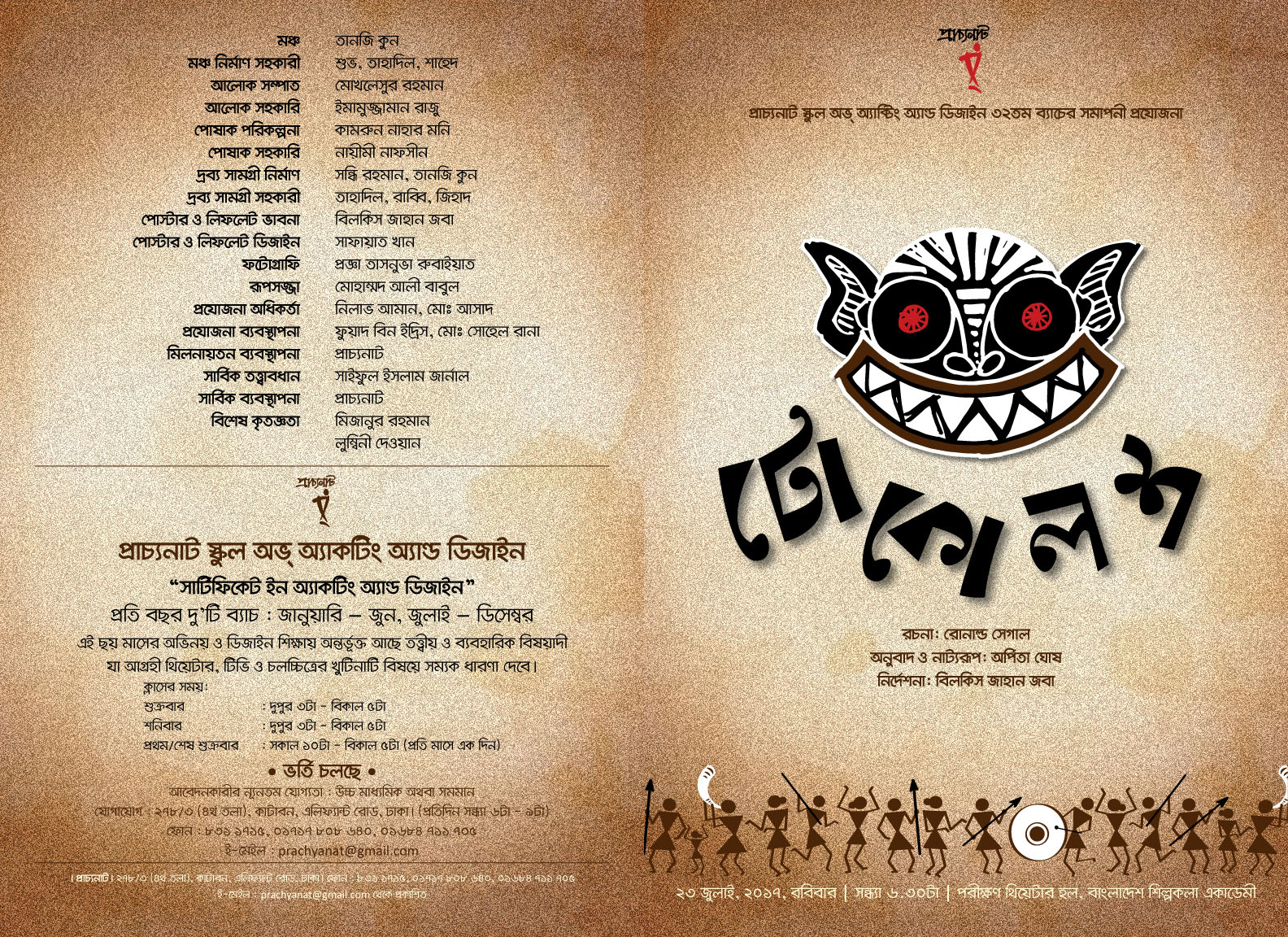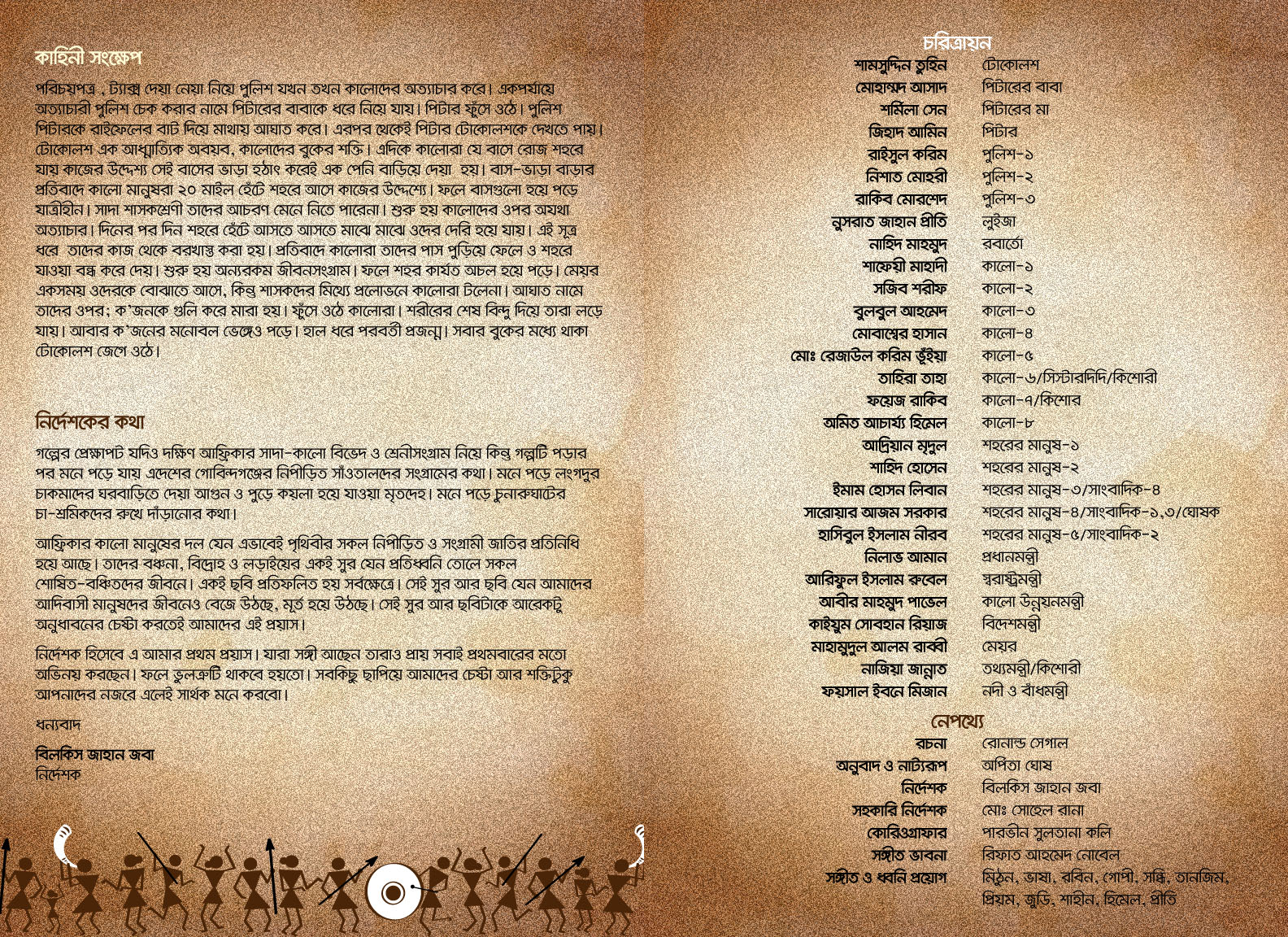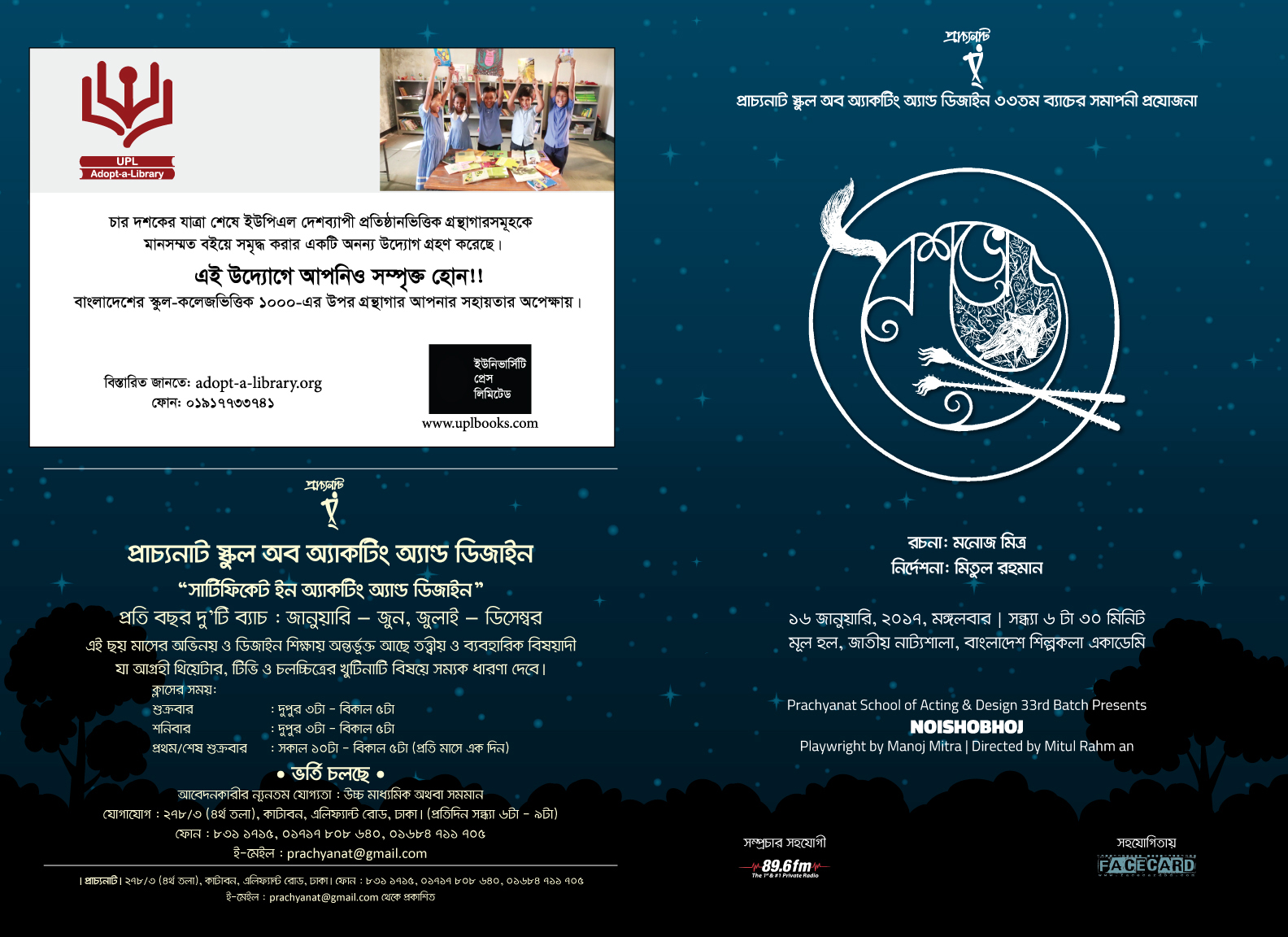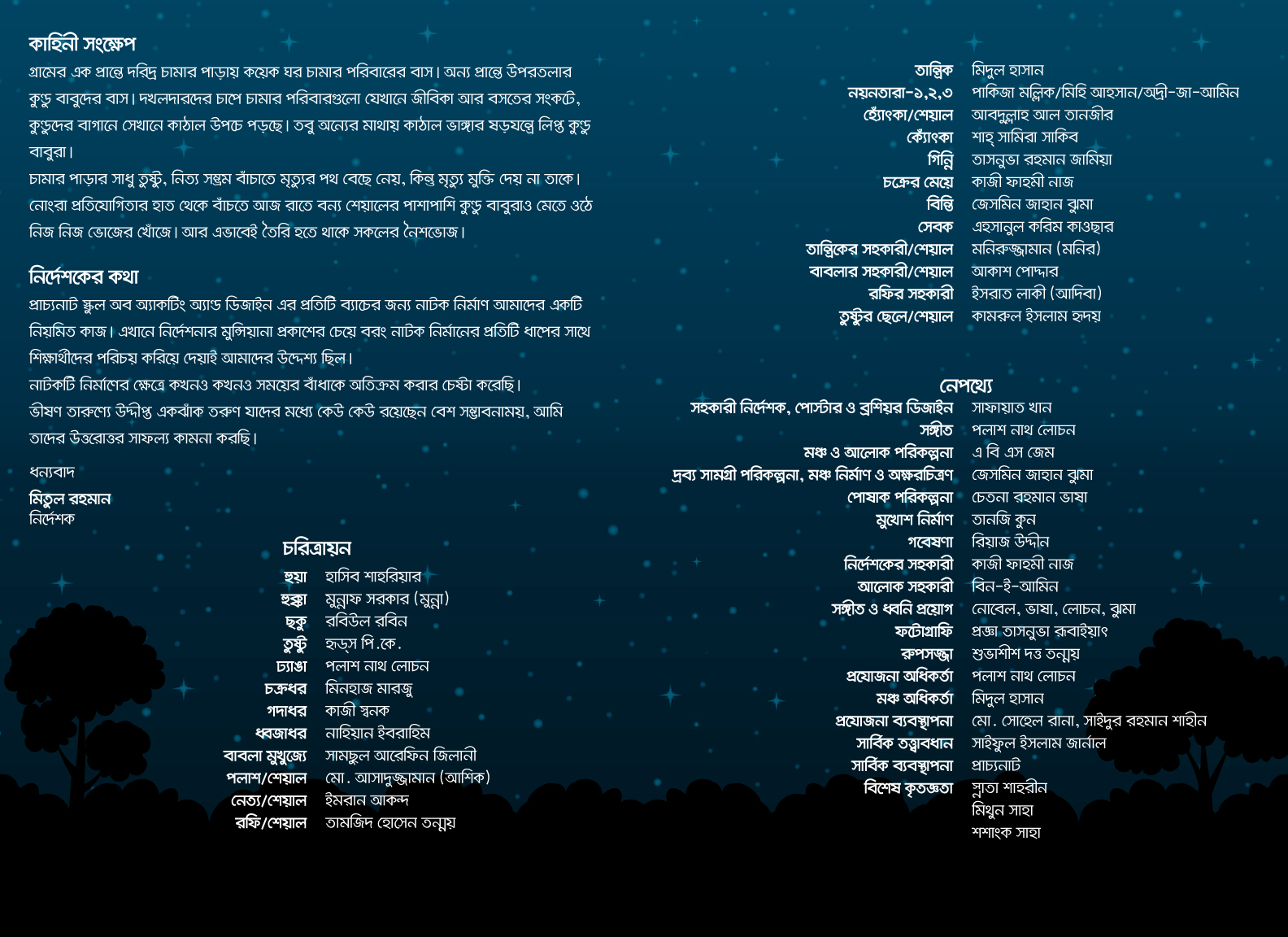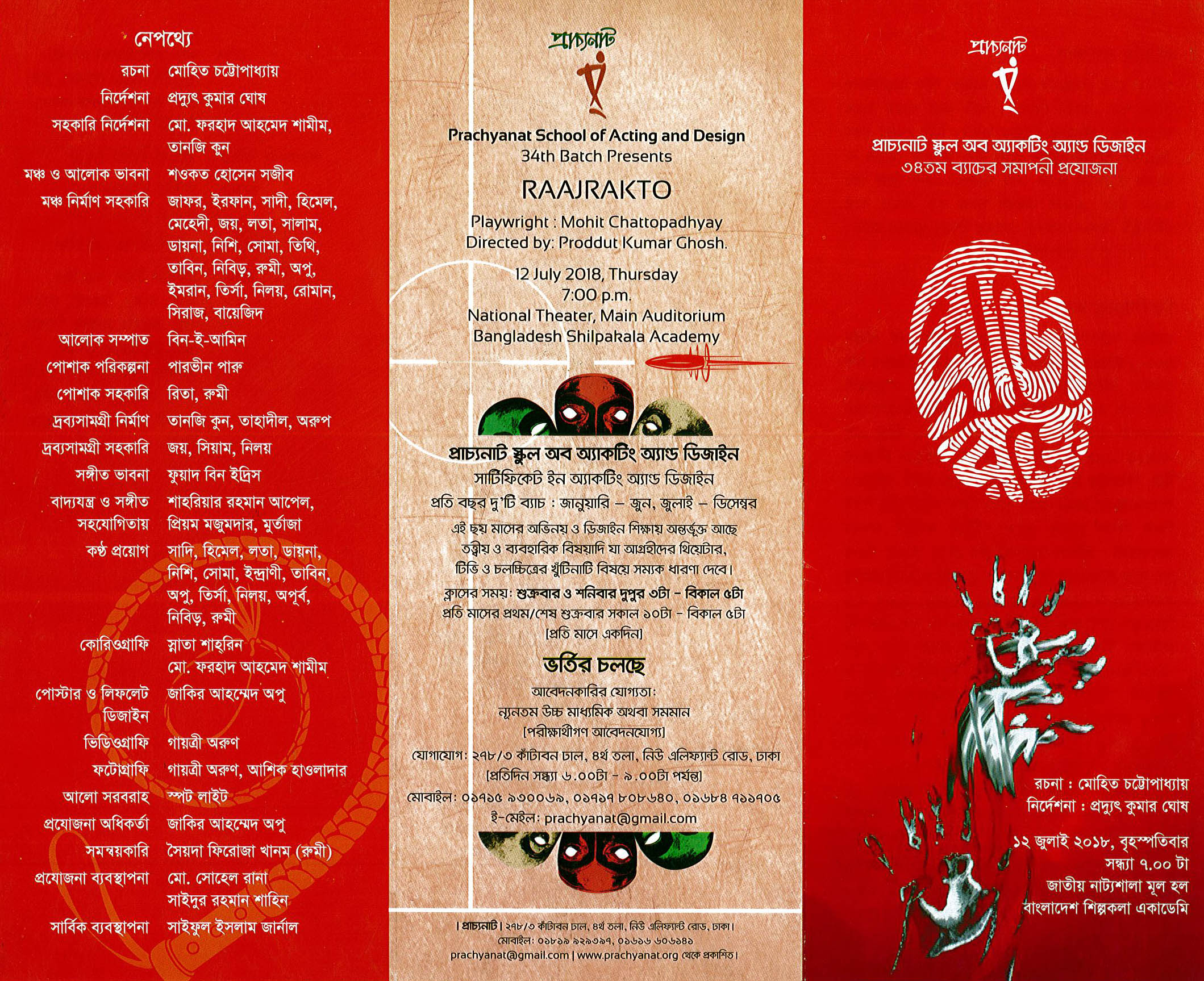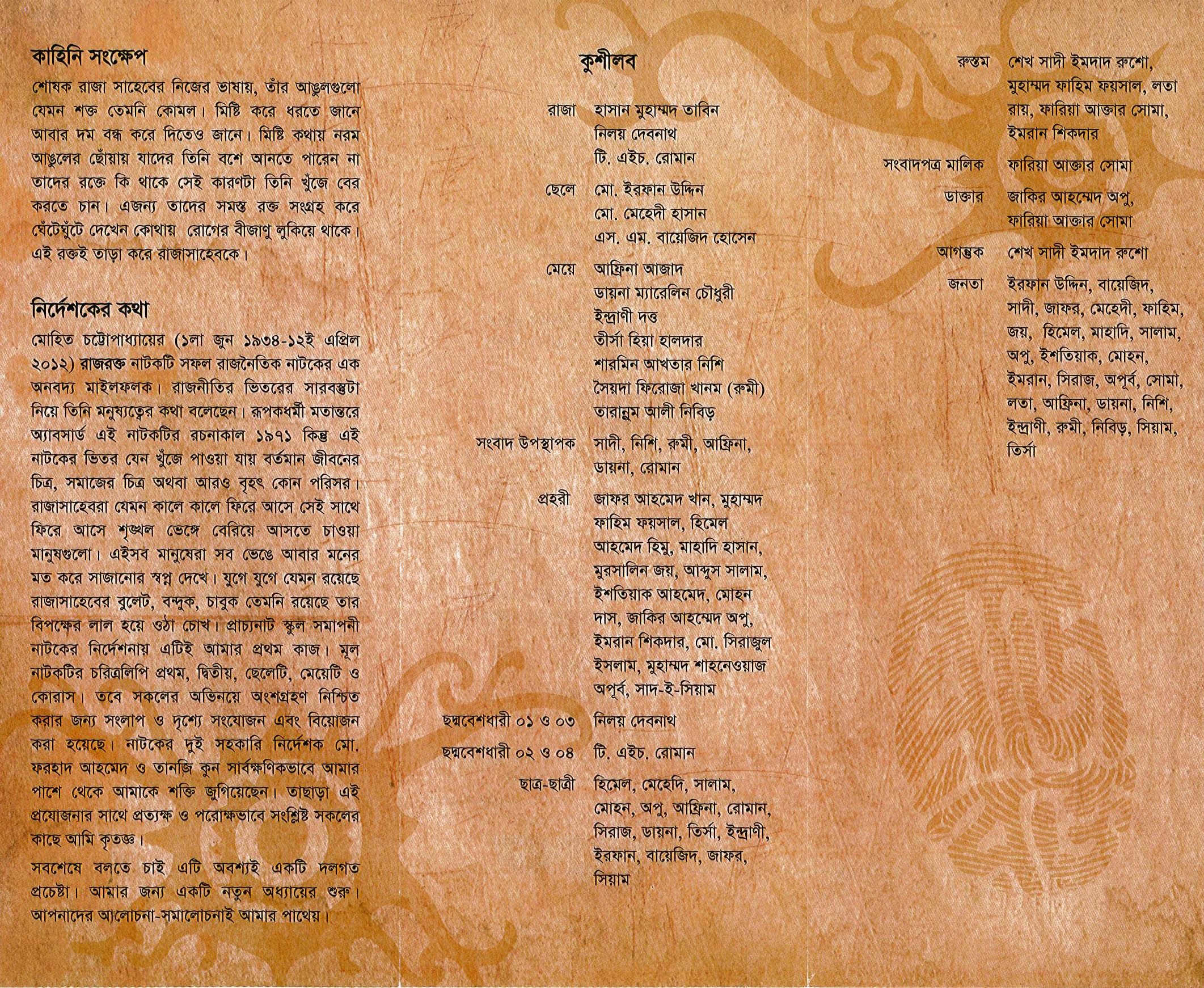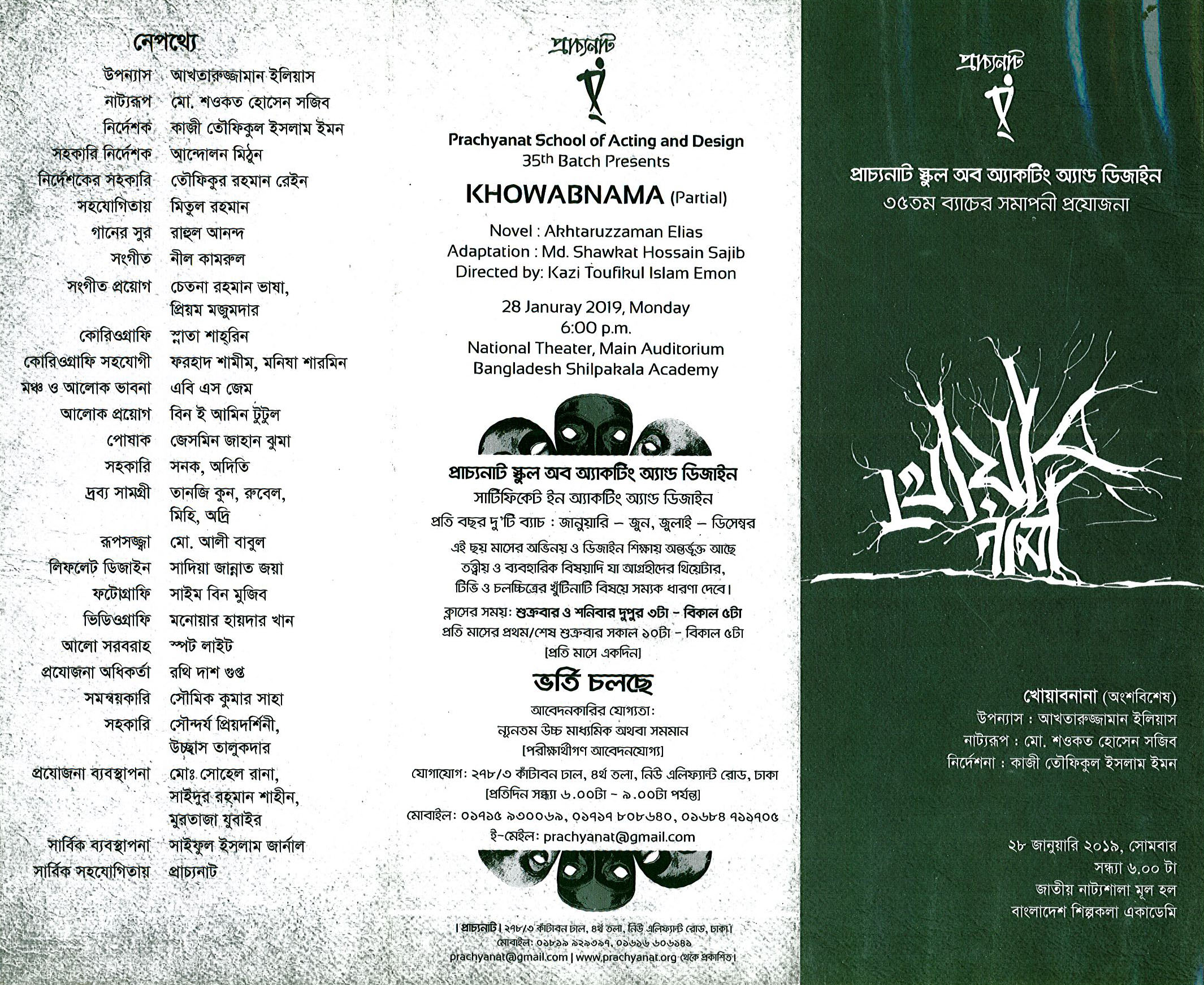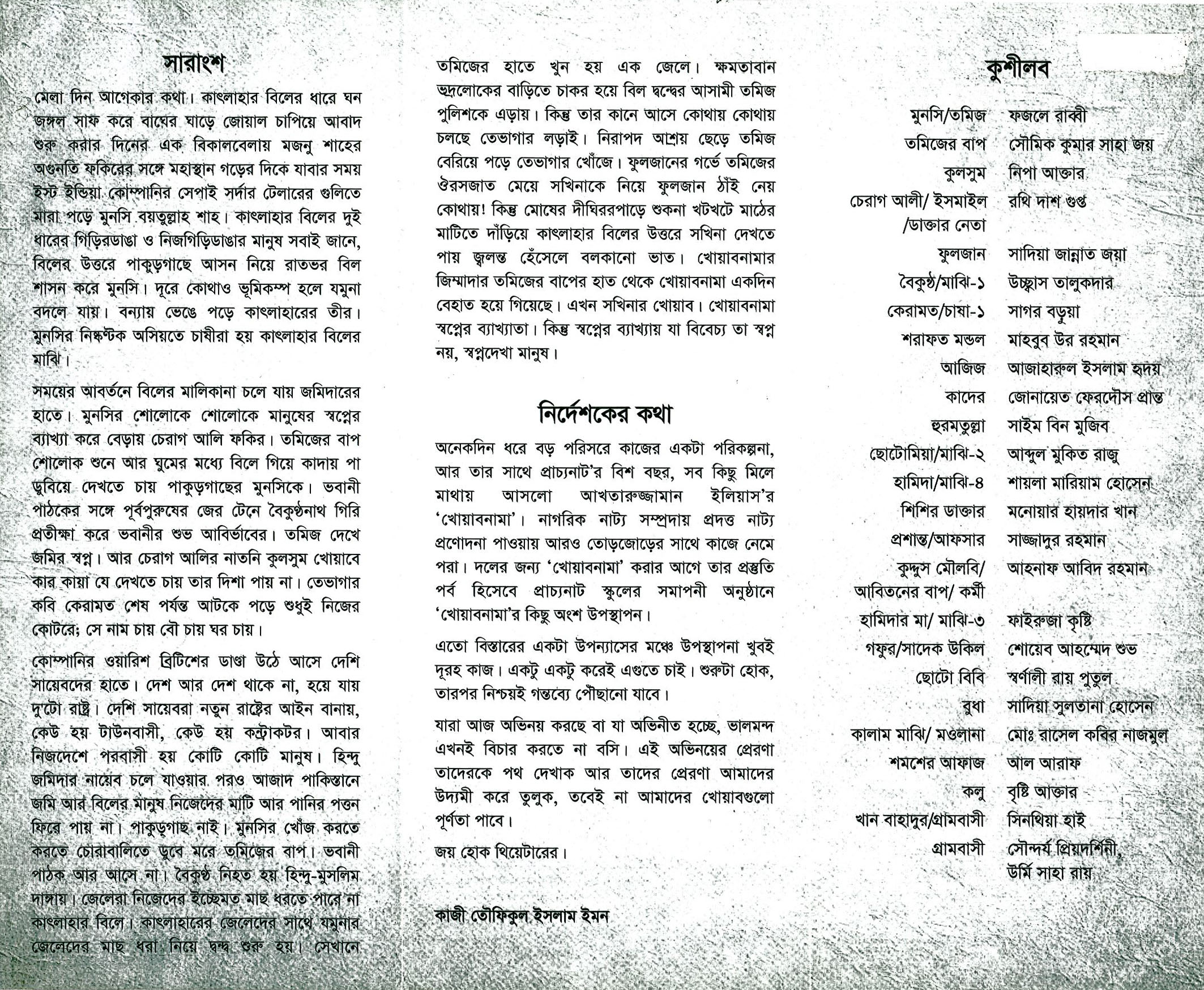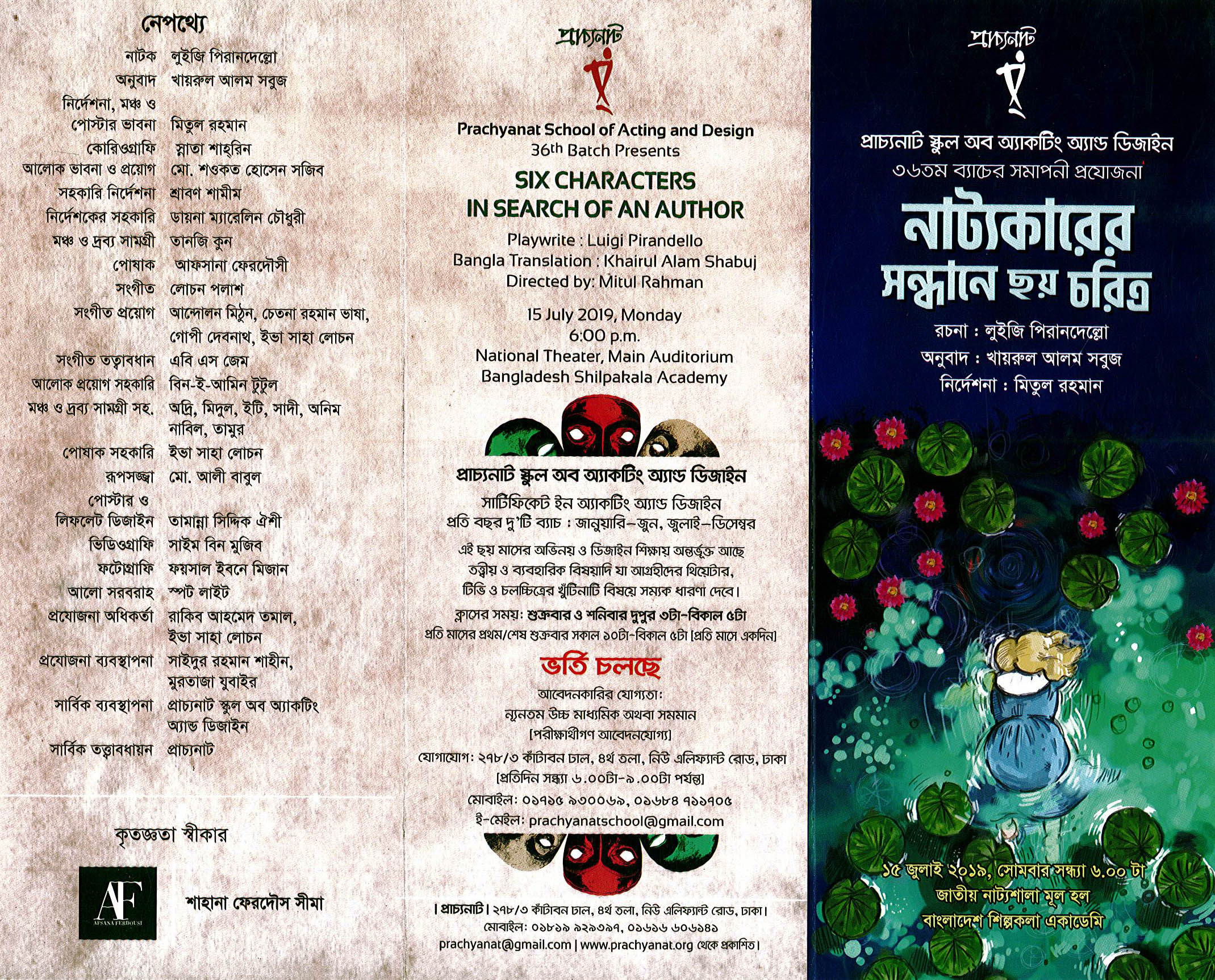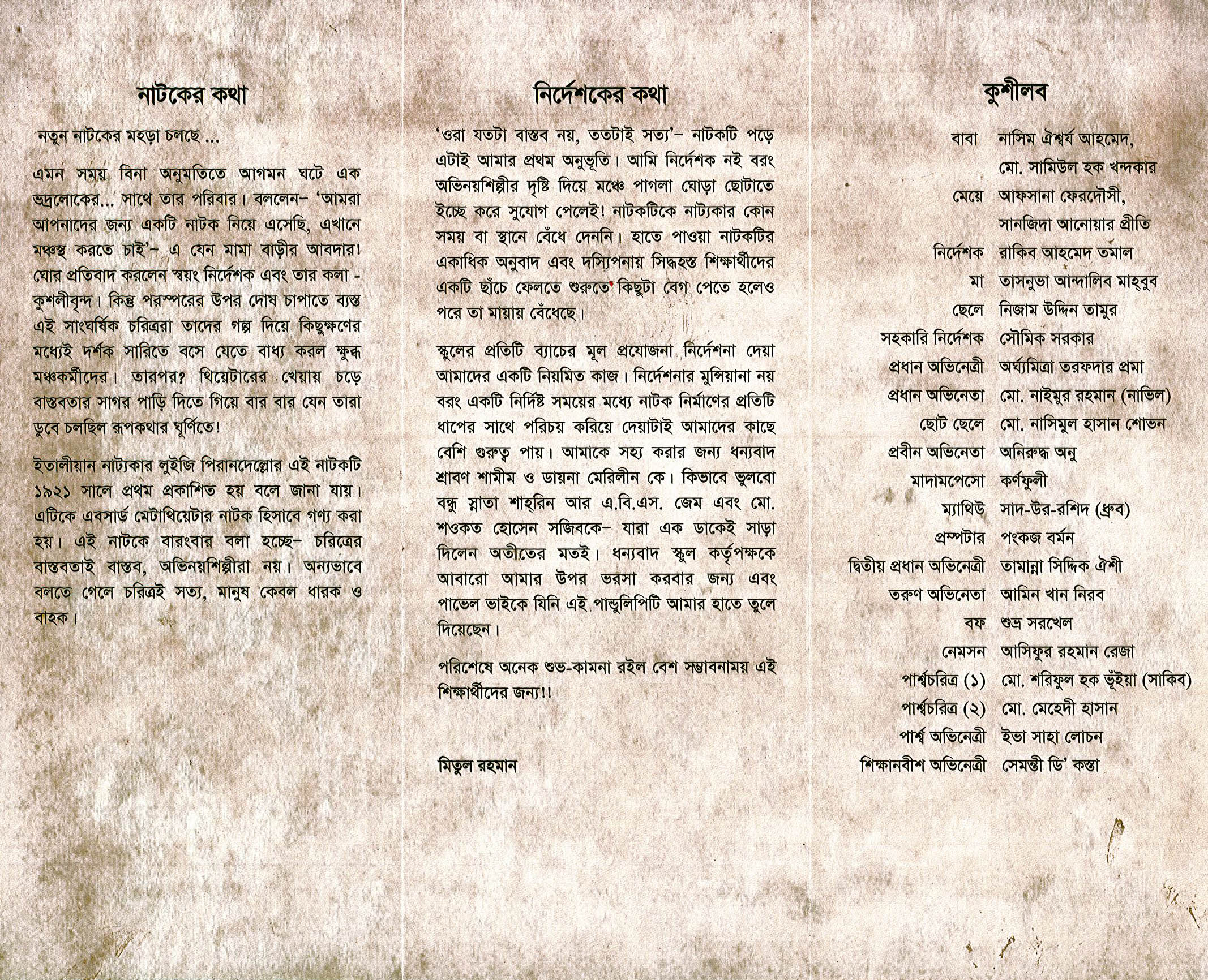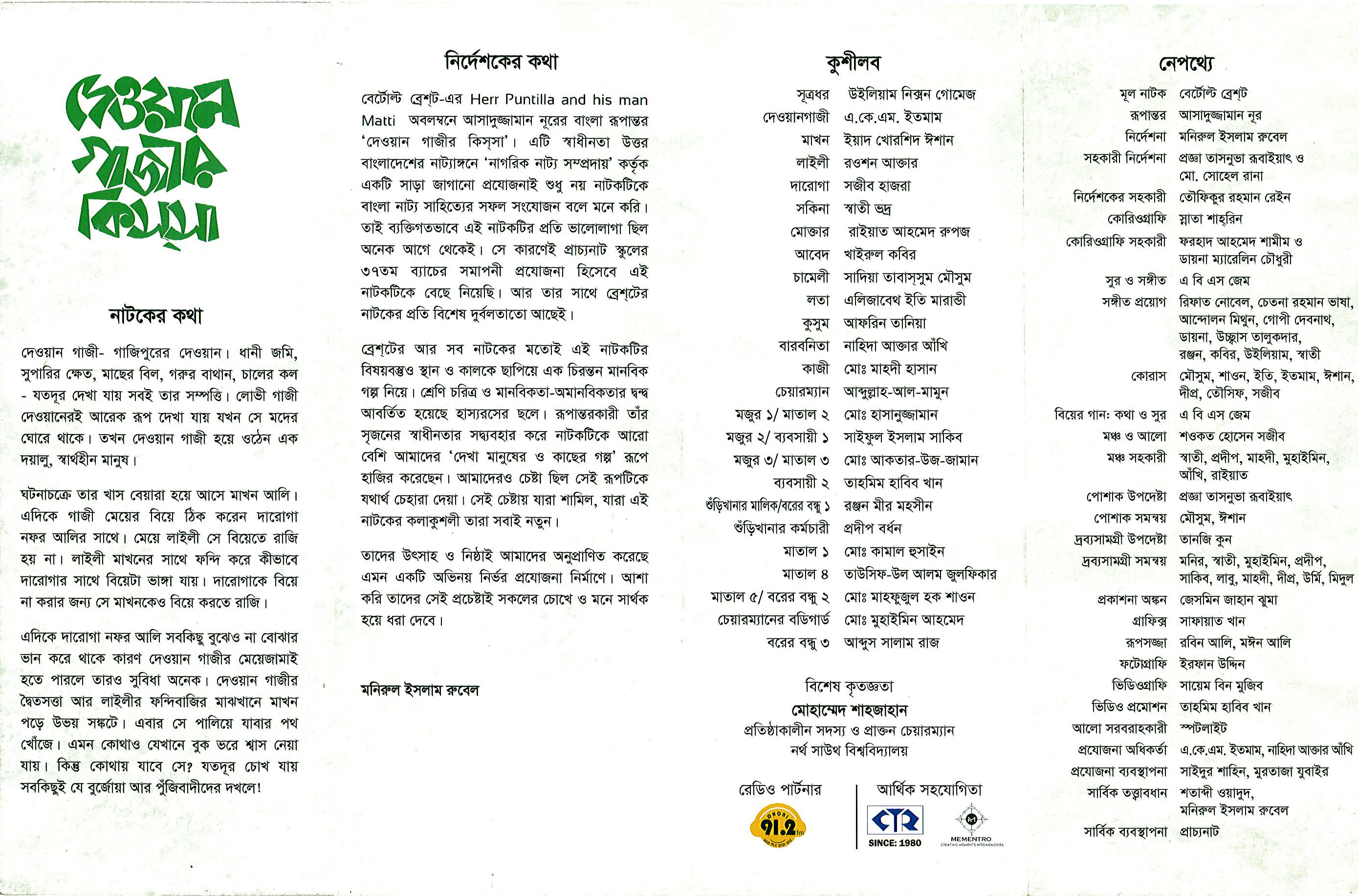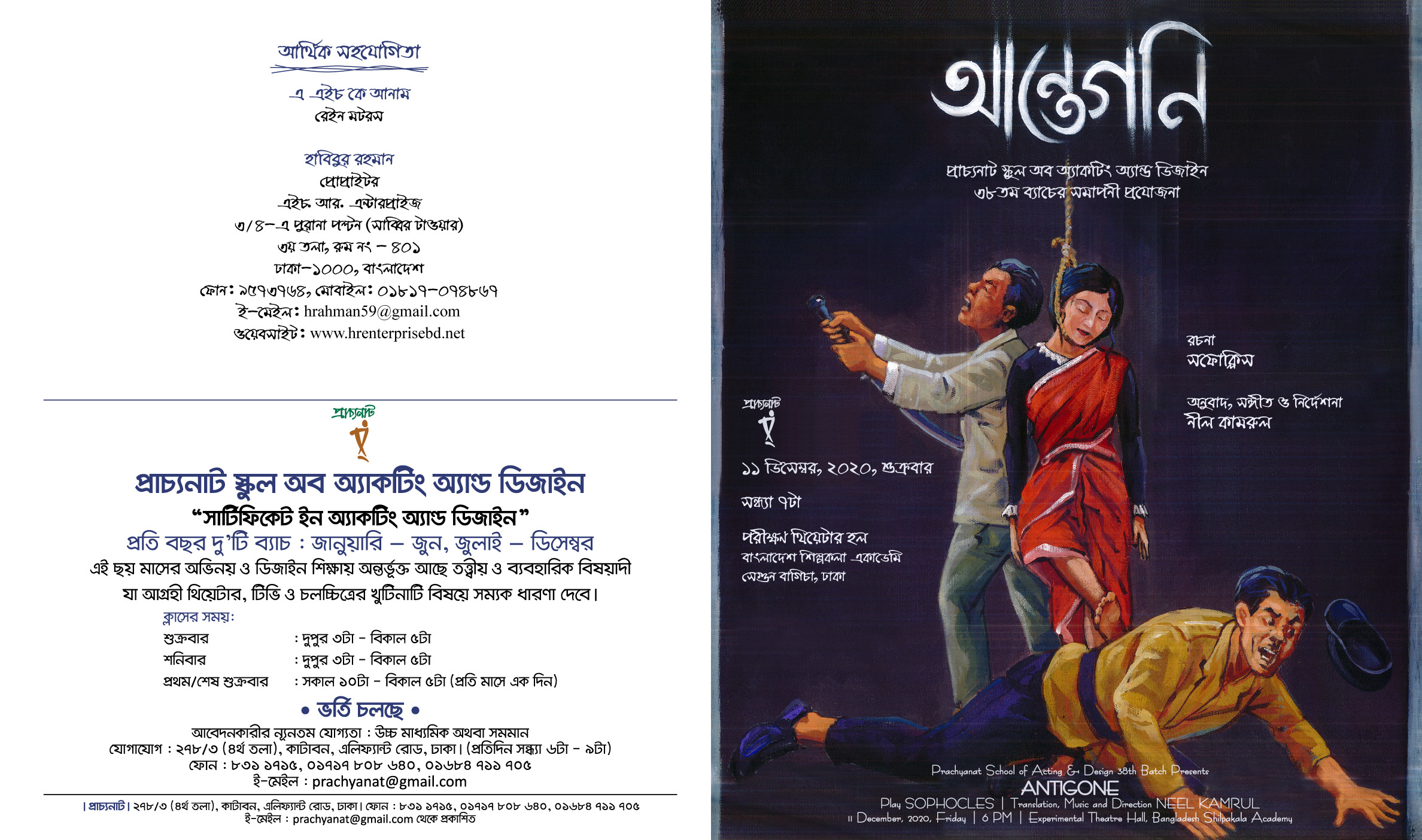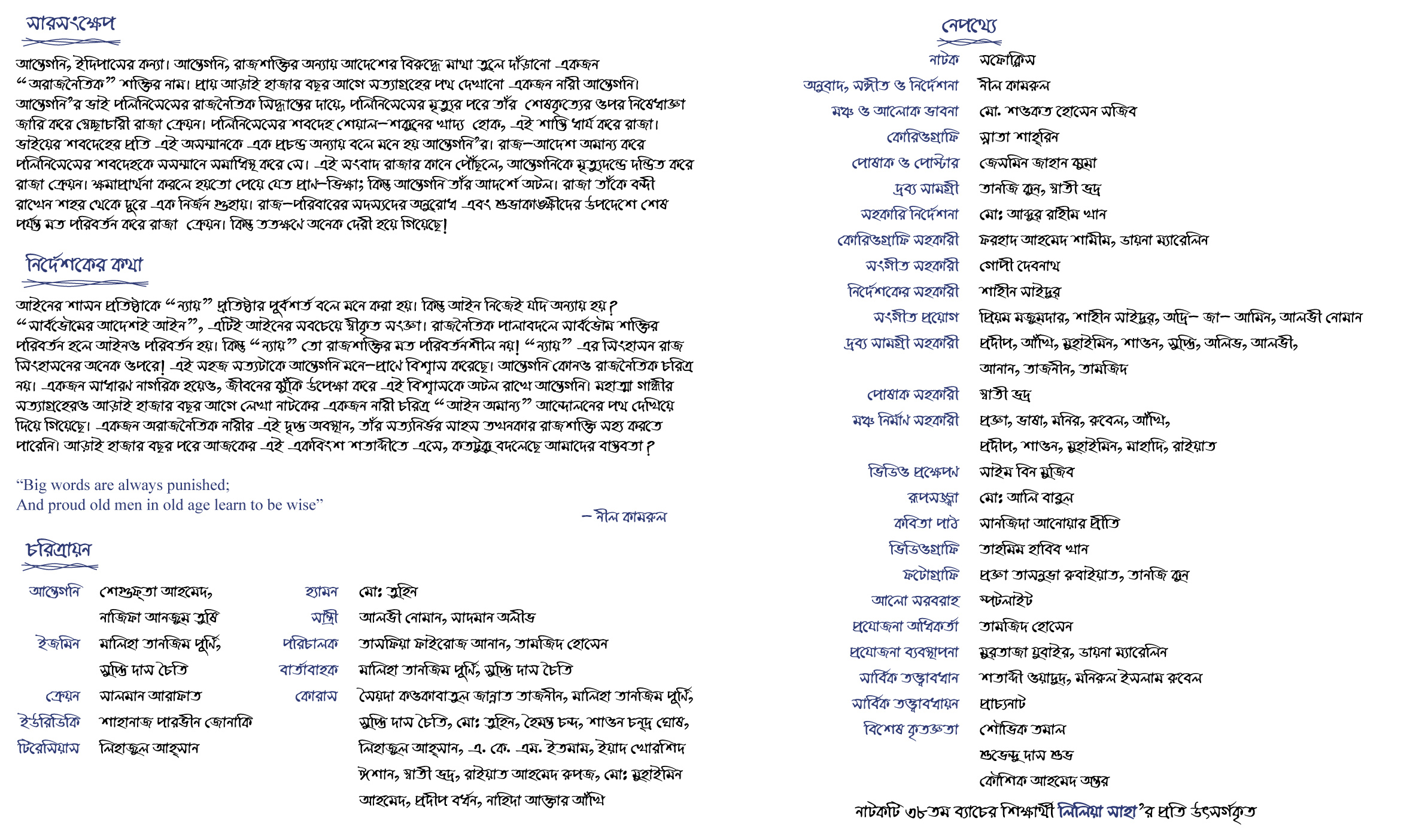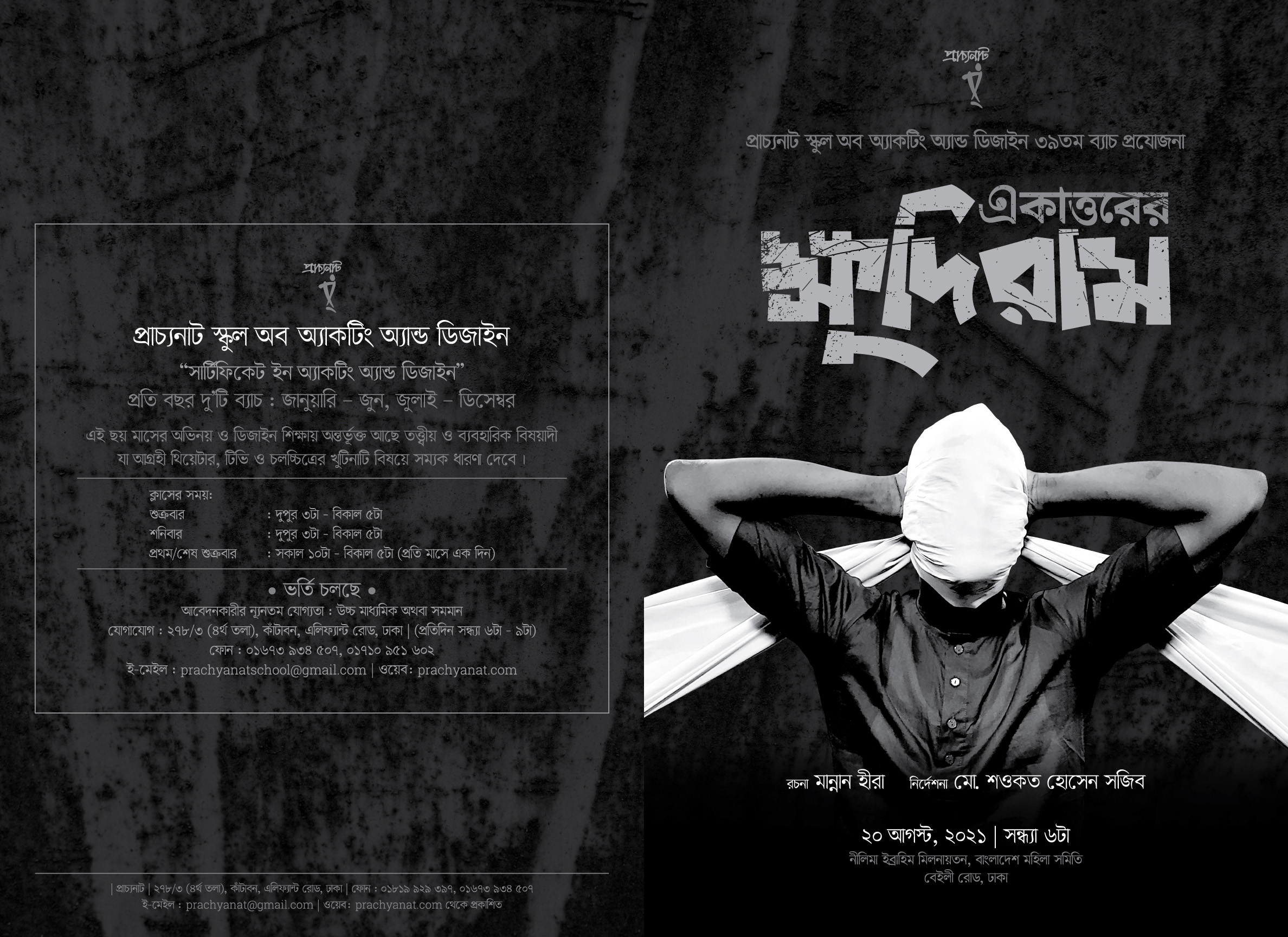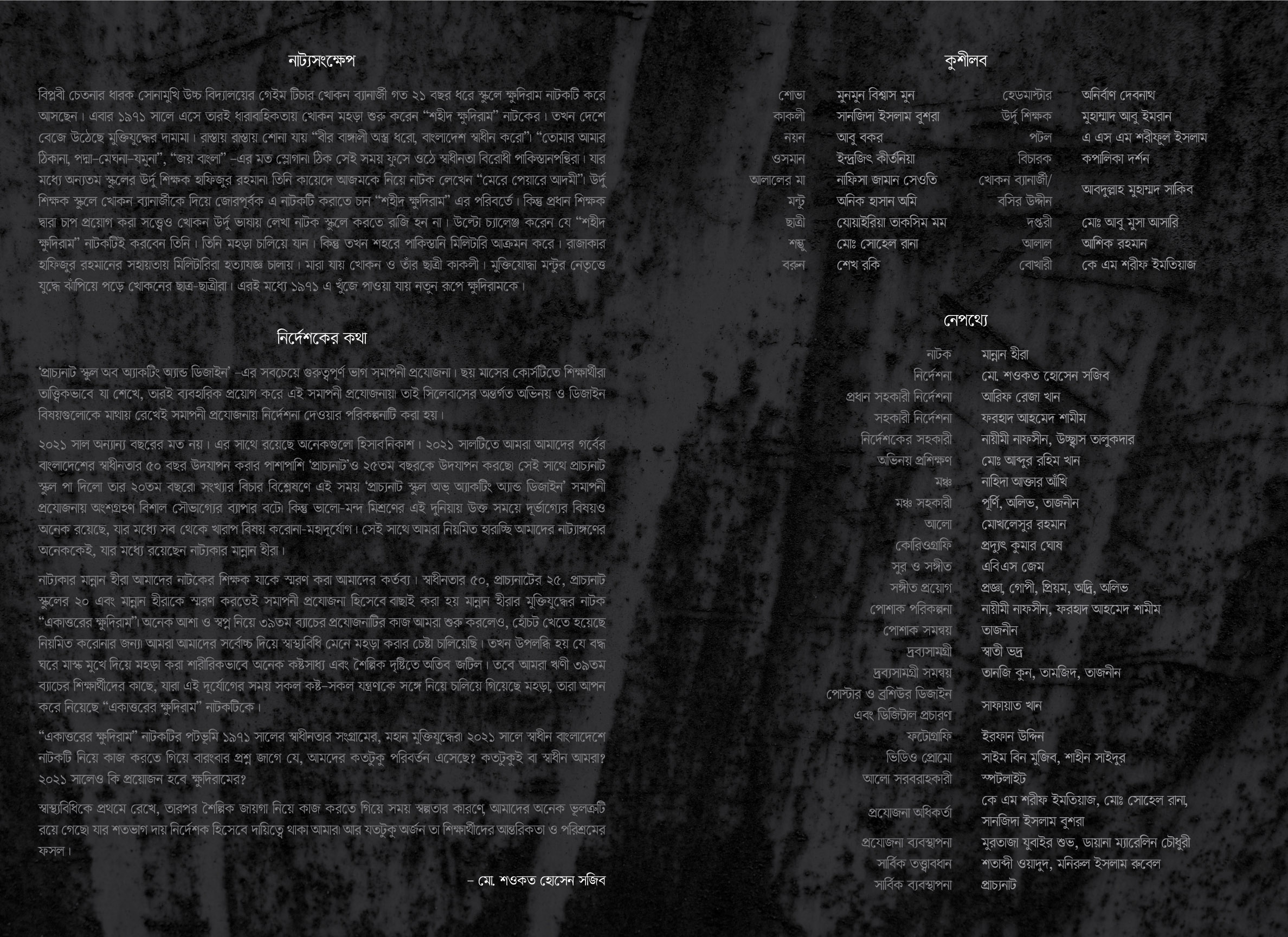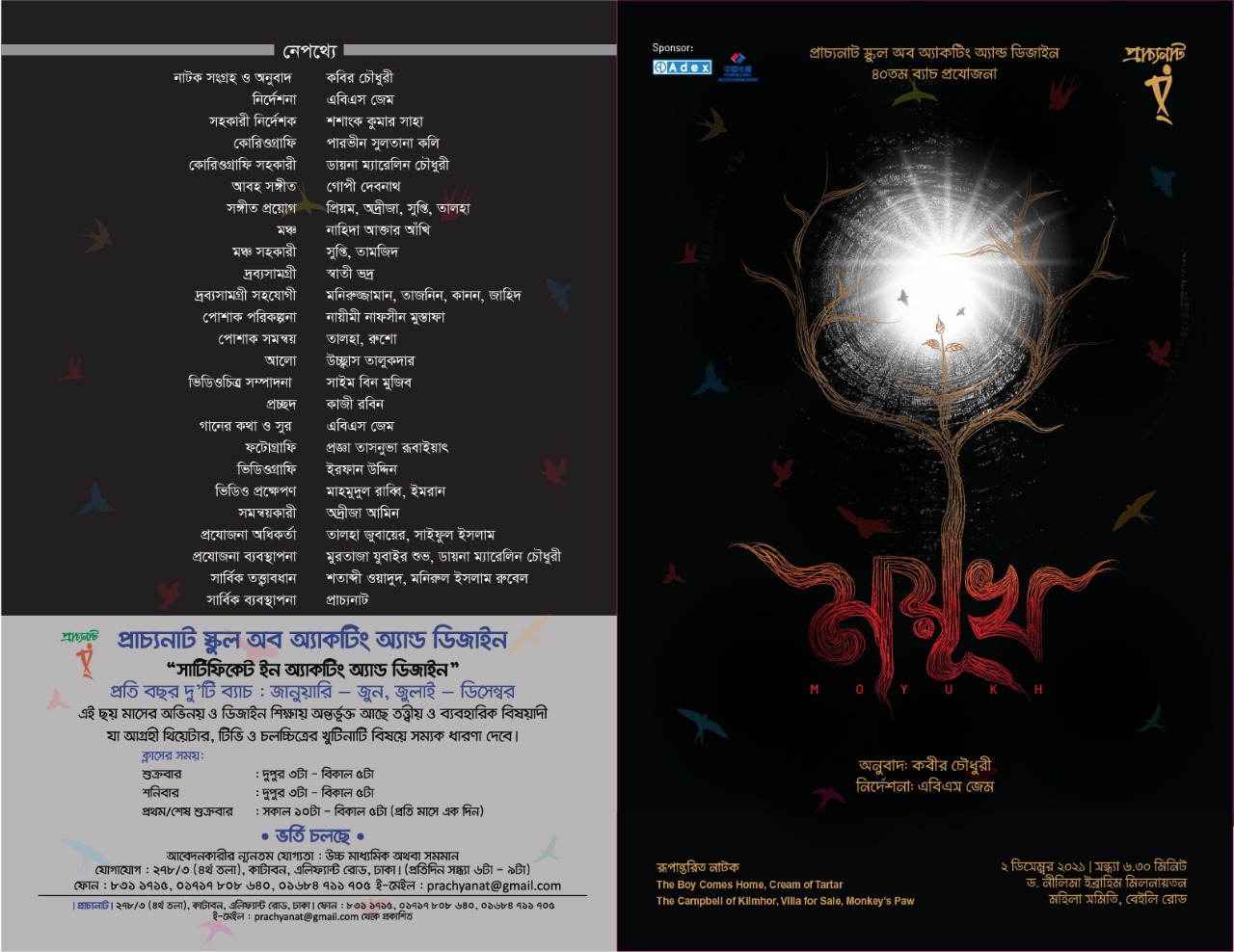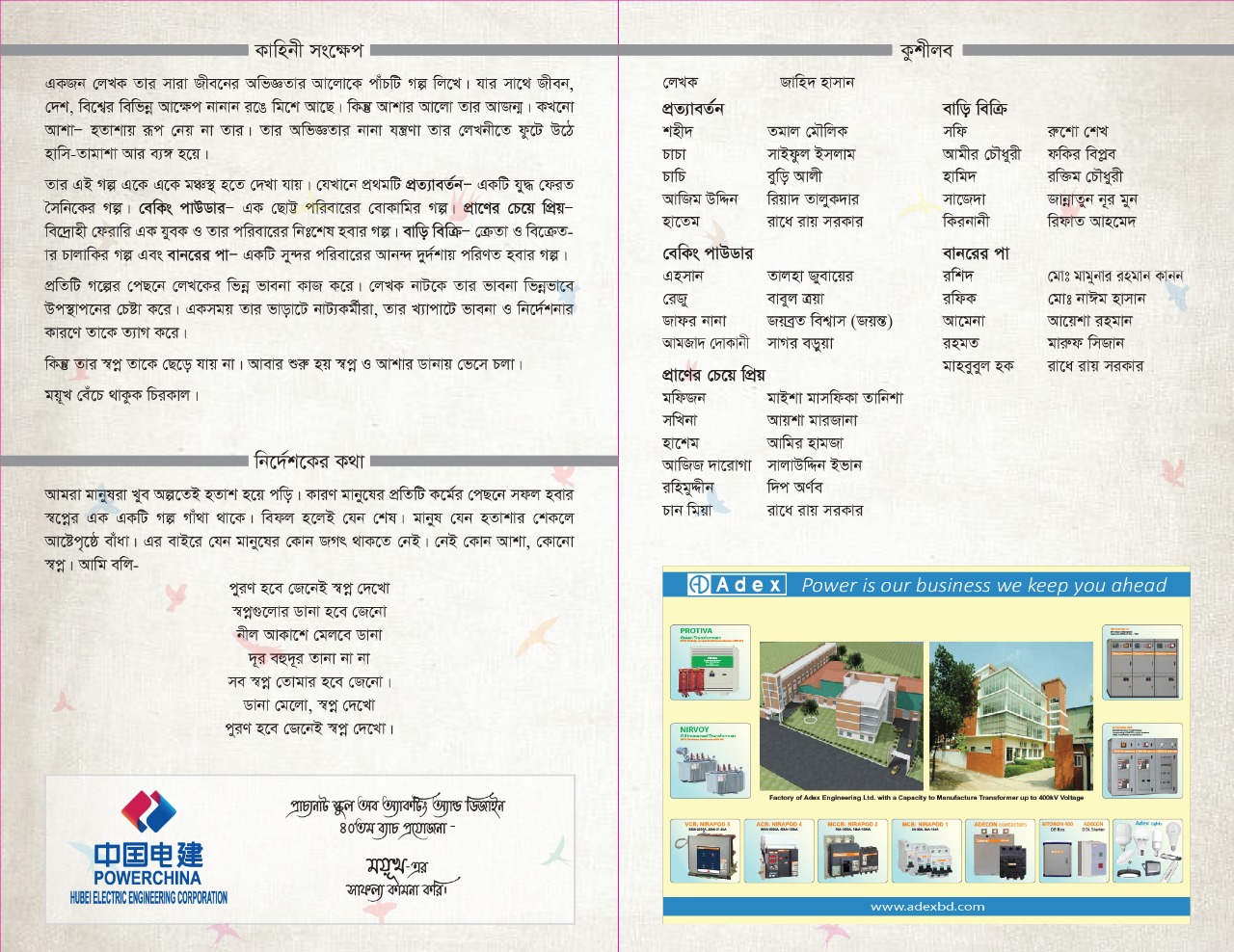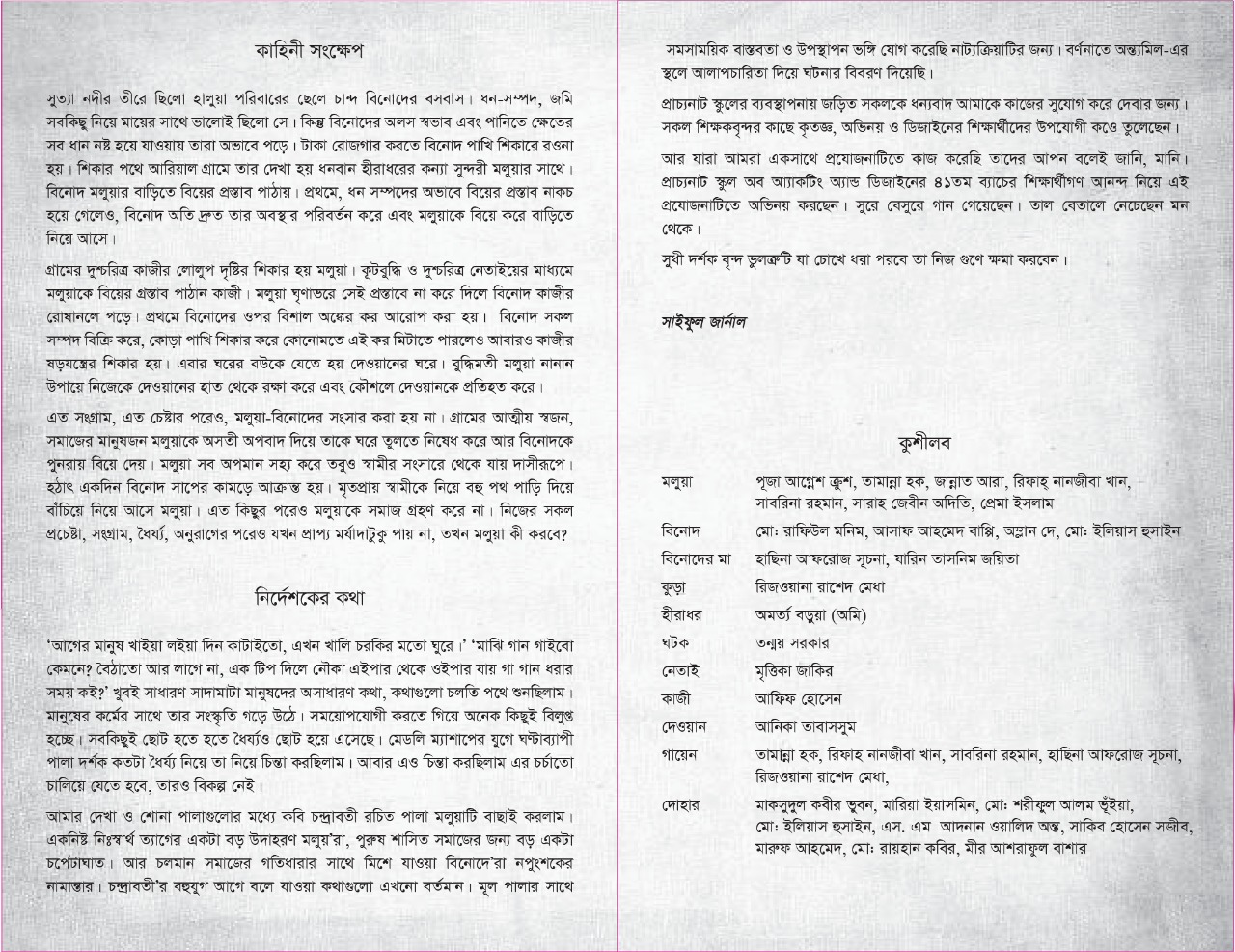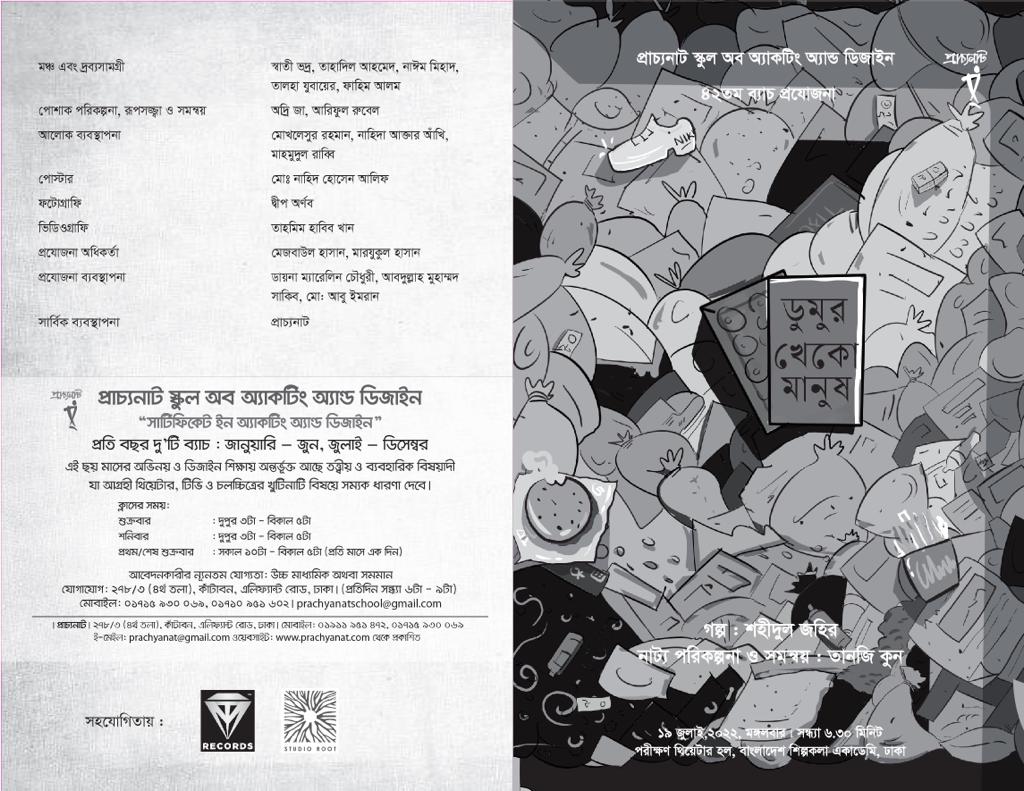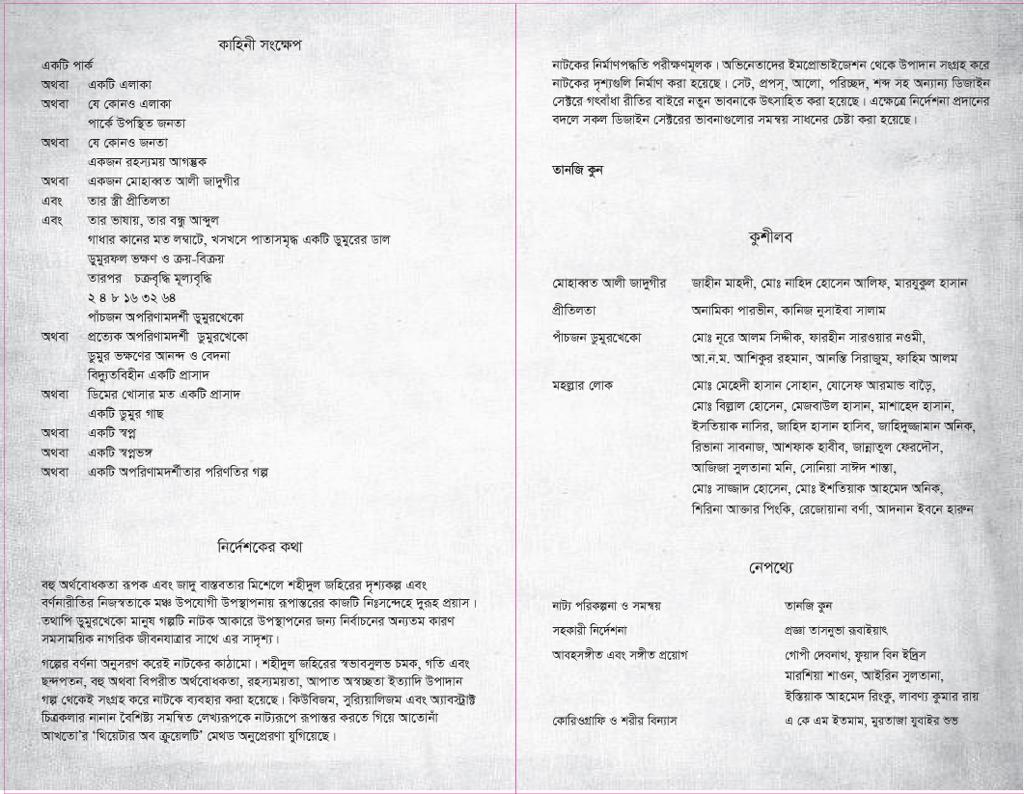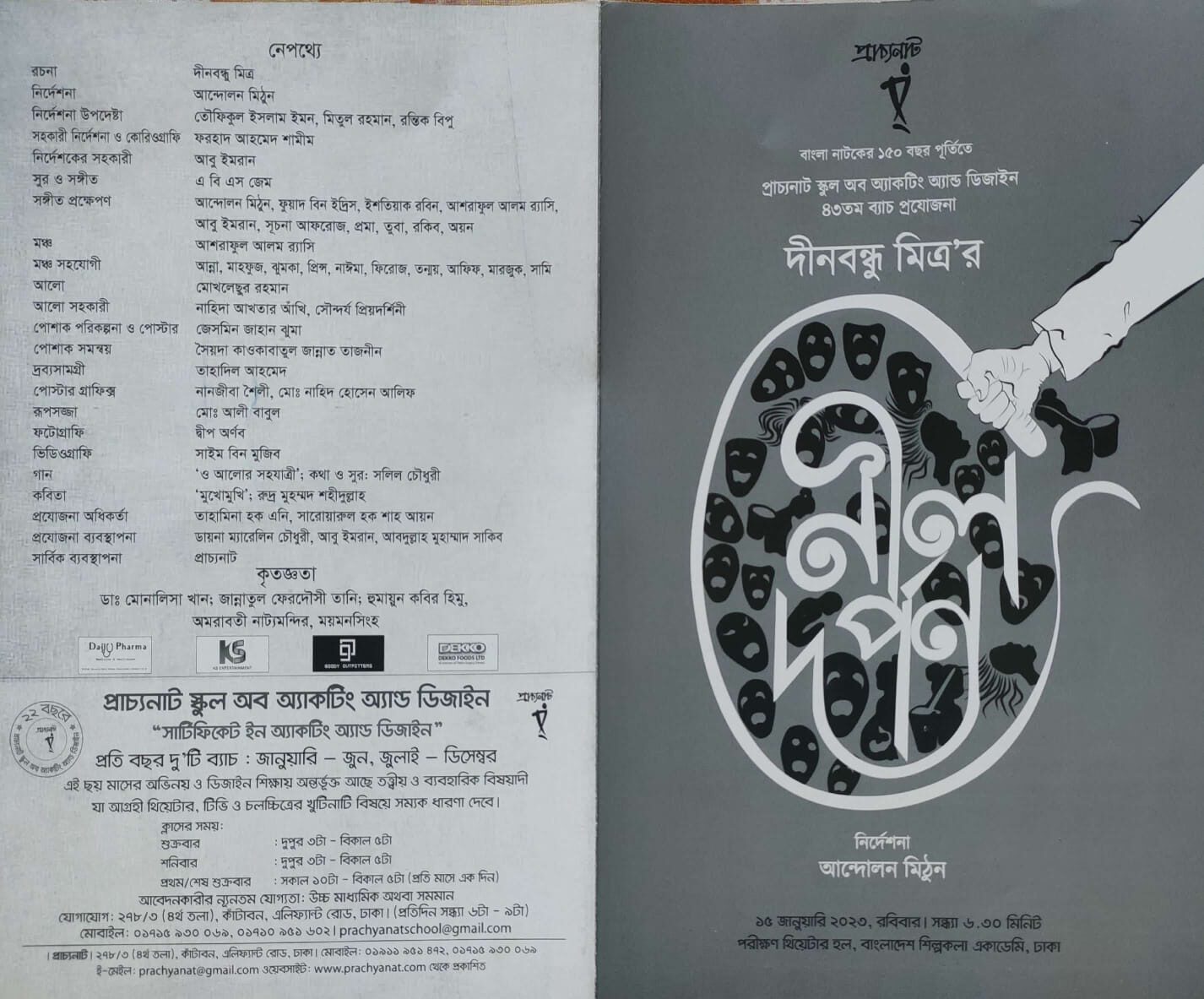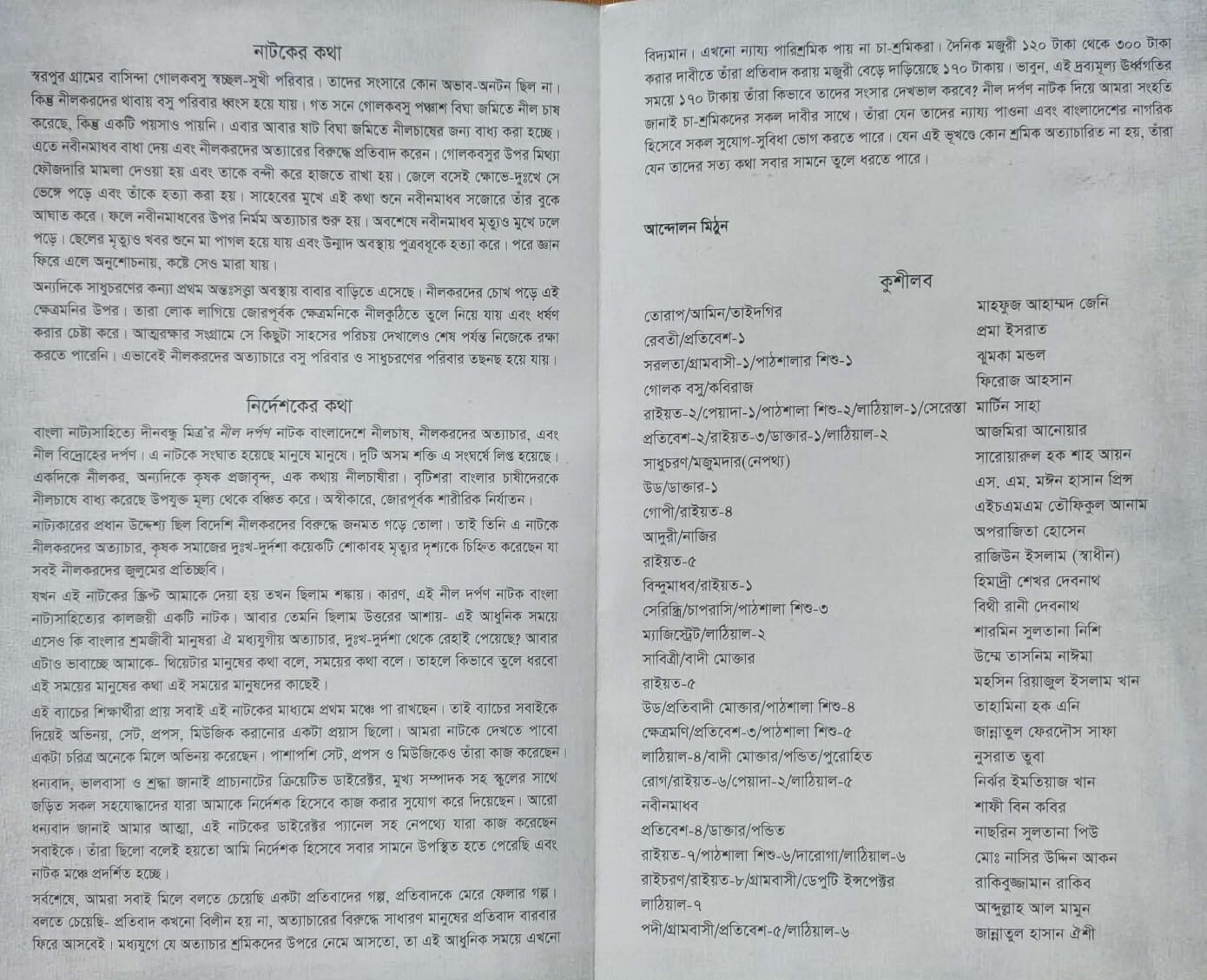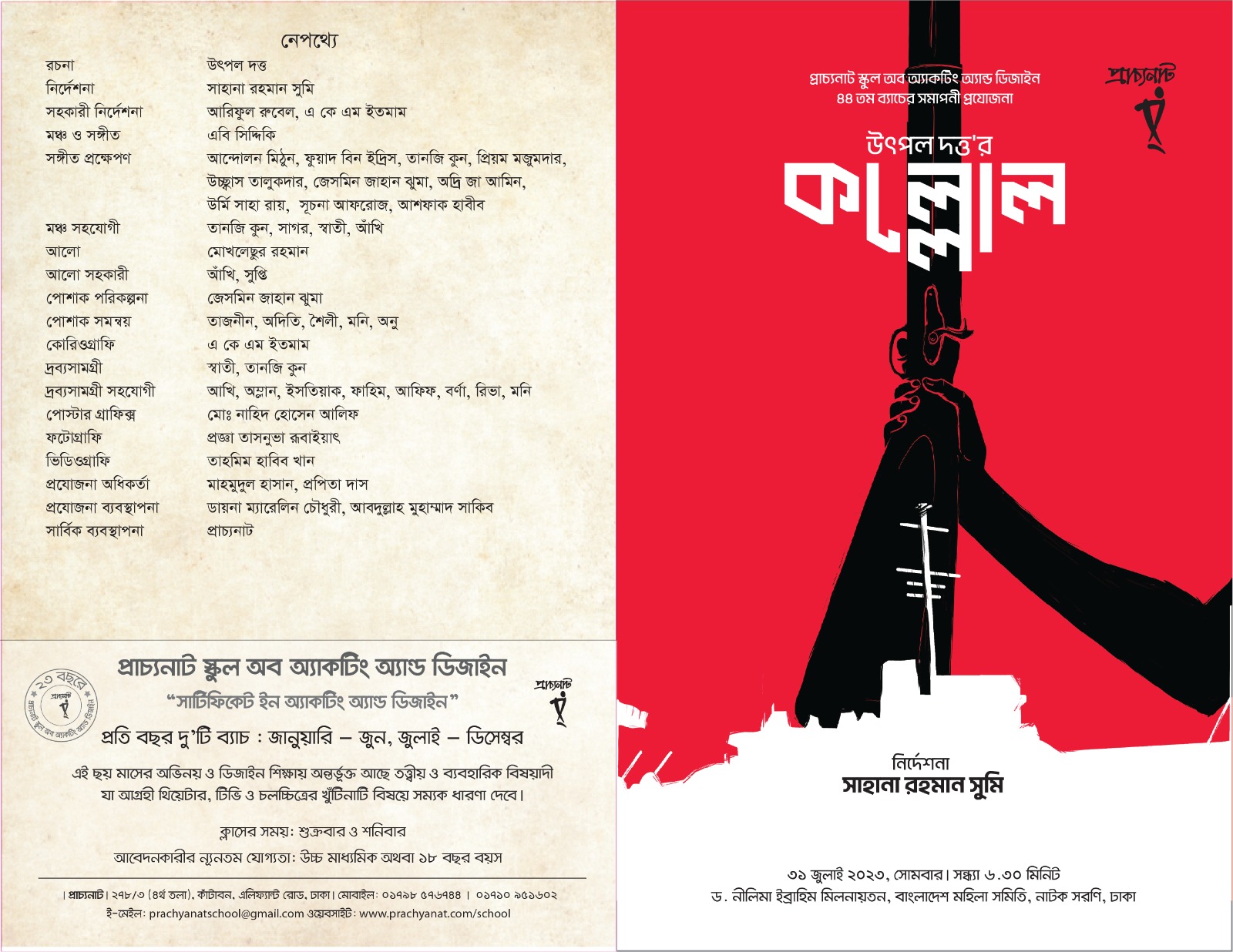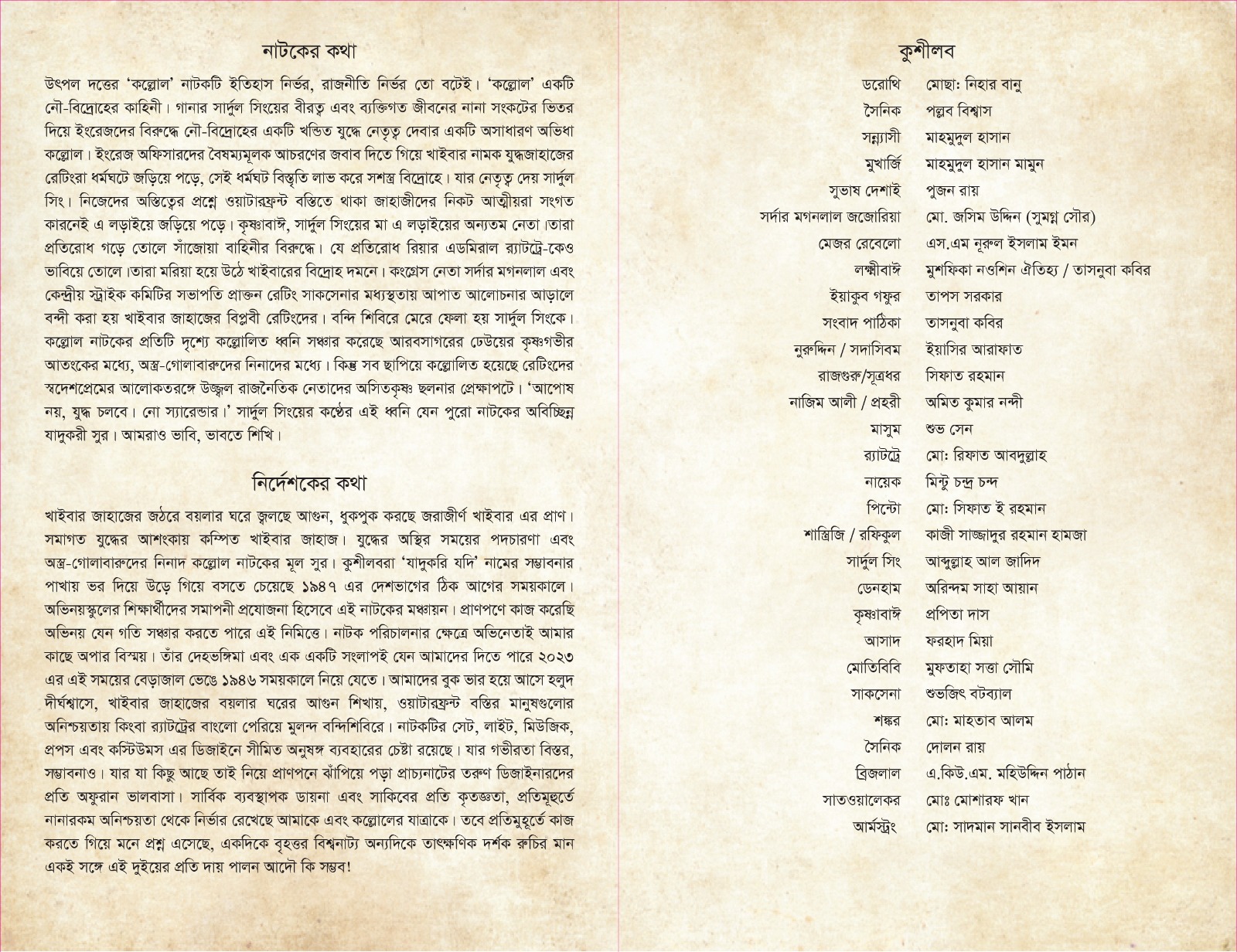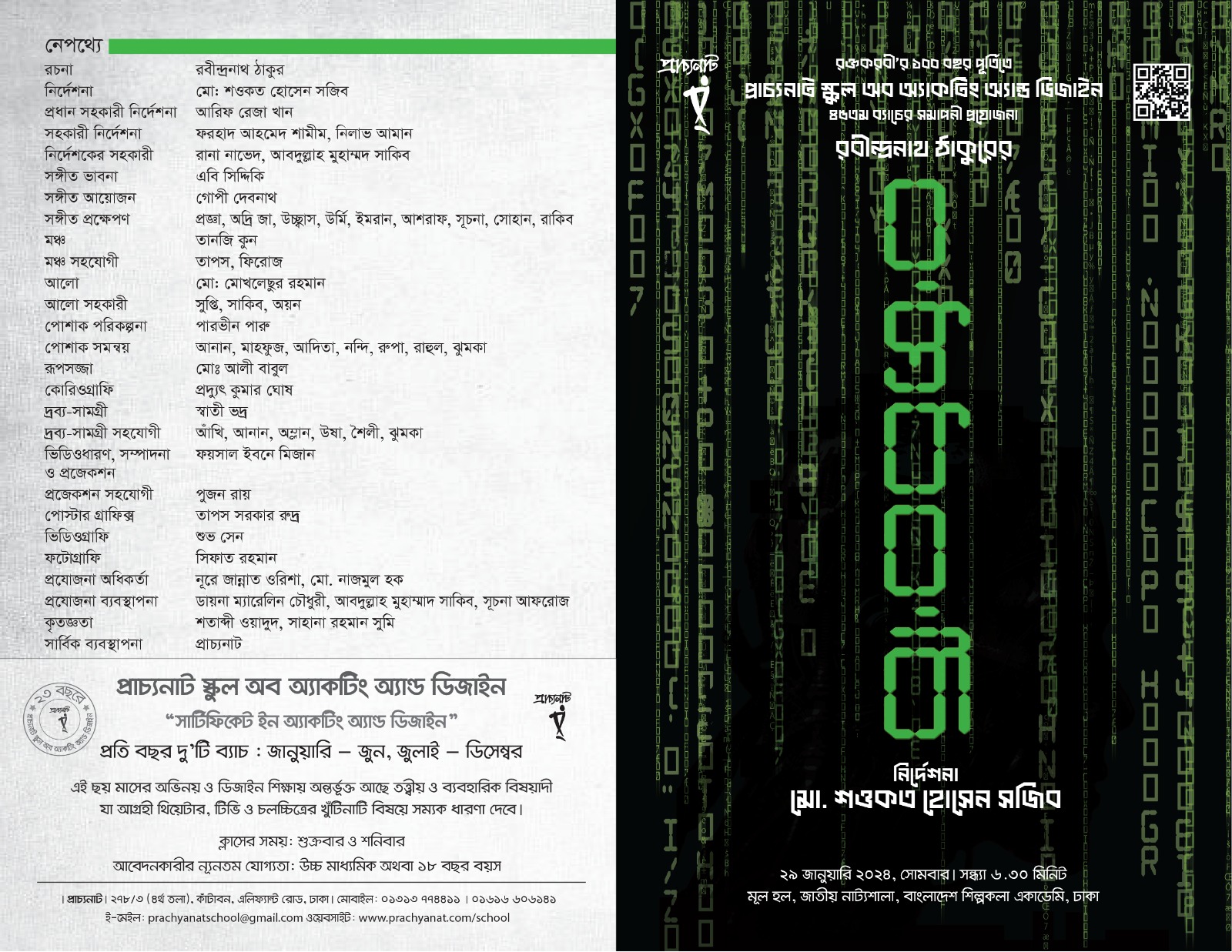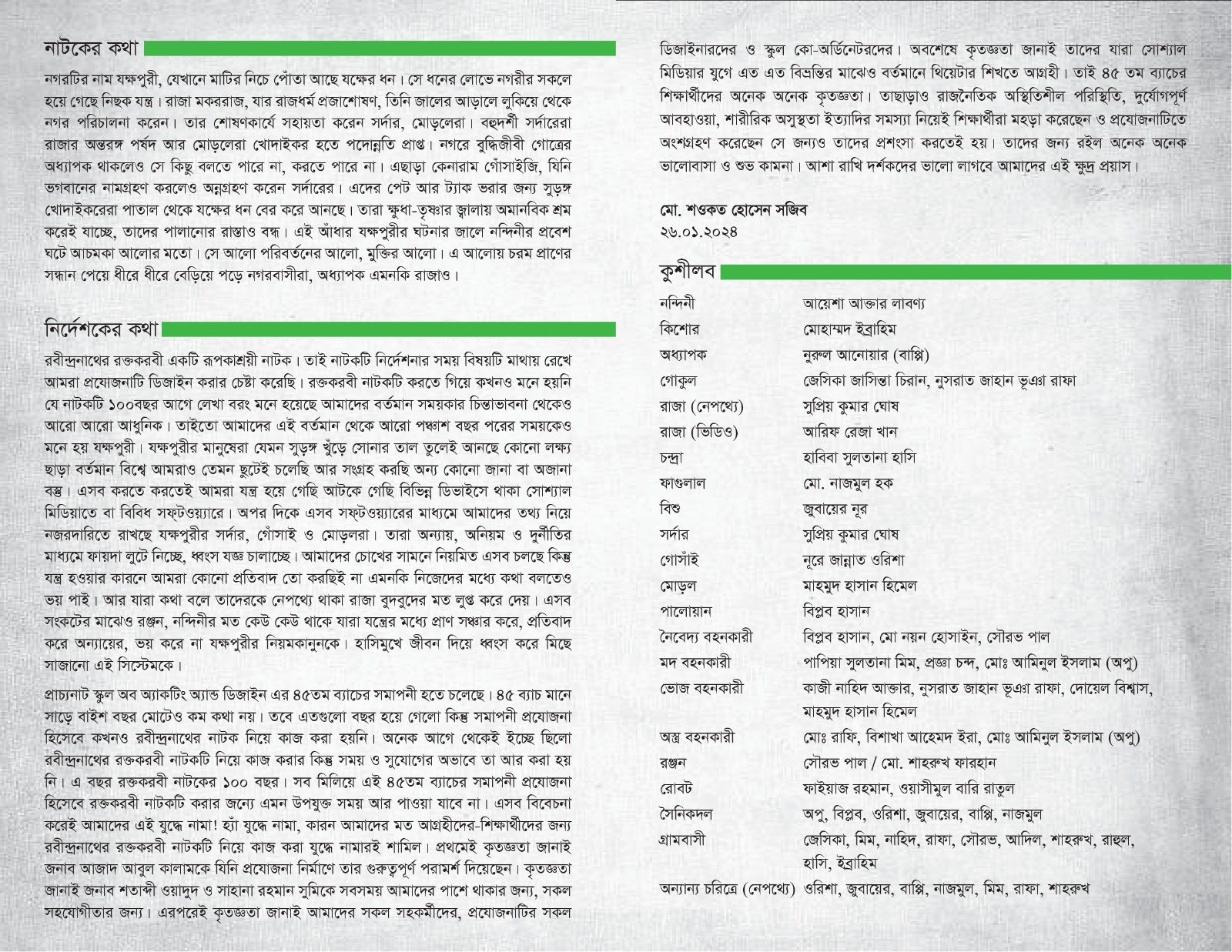Play : Lope de Vega
Translation : Shantanu Kaisar
Direction : Kazi Toufikul Islam Emon
Performance
31 January, 2003 , Friday.
Liberation War Museum (Old) , 5 Segunbagicha, Dhaka – 1000
Synopsis
Lope de Vega (1562 – 1835), the playwright of ‘Fuente Ovejuna’, belongs to the sixteenth and seventeenth century, which is the golden era of Spanish Literature. In Bangladesh, Lope de Vega is not as renowned as other contemporary Spanish writer, Cervantes. But at home and in Europe, Lope de Vega is the soul of Spanish drama and is sometimes even compared to his other English contemporary, Shakespeare.
Lope de Vega can be termed as a prolific playwright even by modern standards. He wrote two thousand (or twenty thousand in other study) or a few more plays; though, we got only 400 plays, most of which are one-act plays. Among these plays there were ‘ El Mejor Alcalde ‘ and ‘Fuente Ovejuna‘, which Soviet critics named as the ‘first proletarian play’ in the world.
The play ‘Fuente Ovejuna’ is a story of the struggle of afflicted farmers in a certain region of Spain during the initial period of imperialist Spain. The play is also significant from the point of view of modern history as the military chief was slayed by the protesting and violent farmers.
The flow of events in ‘Fuente Ovejuna’ is quite linear. The story began in 1476, during the reign of King Ferdinand and Isabella. There was a province in Spain named Ciudad Real and the fictional city of ‘Fuente Ovejuna’ was situated there. The ordinary life of the inhabitants was interrupted when the military commander Fernan Gomez established military authority in that particular region. But when this military authority expanded to the young women of the small town, the townspeople became agitated. Fernan Gomez tried to provoke the military and religious chief of Calatrava, Téllez Girón and at the same time, incited him to revolt against King Ferdinand of Spain. But when the military arrangements of Téllez Girón against the king failed, then along with this, the people of Fuente Ovejuna were preparing to resist their ill-behaved commander. The rebellion of the townspeople was inspired by a young woman named Laurencia, who was tortured by the commander; whose words encouraged the inhabitants of the town of Fuente Ovejuna.
At the end of this play we see that the organized townspeople, the majority of whom are farmers, slayed the brutal tyrant Fernan Gomez. But Fernan Gomez was sent by King Ferdinand – so the king had to arrange a trial. At that trial, when it was asked who was the killer of Fernan Gomez, the whole town answered with an unison ‘Fuente Ovejuna lo hizo’ that means, ‘Fuente Ovejuna killed him’. Fuente Ovejuna turned into a timeless group of agitated, militant, protesting and revolutionary people.
Another parallel story also exists in this play, which revolves around the everyday love of the individuals and its consequences. This parallel story illuminated the aspect of the struggling and protesting cognition in a humane light. In this play; there is no individual hero, rather the main hero is the unity of common people.
